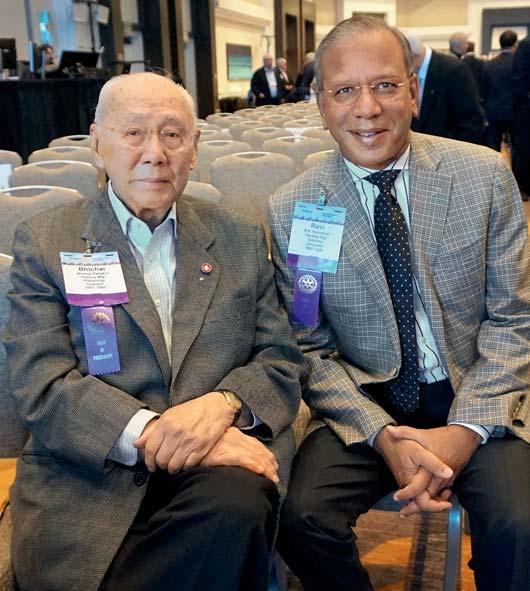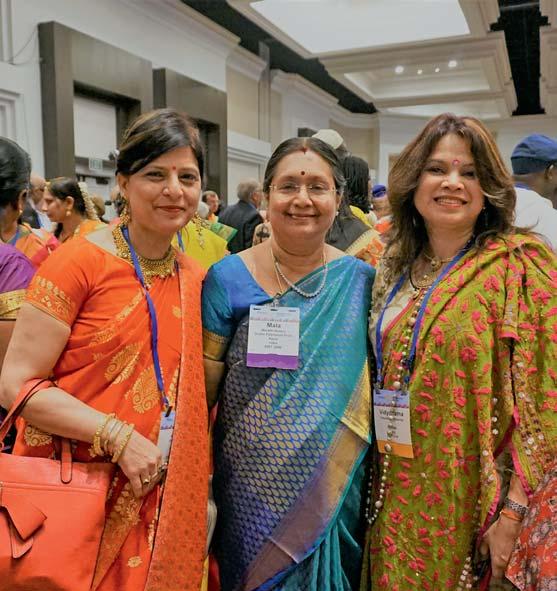






























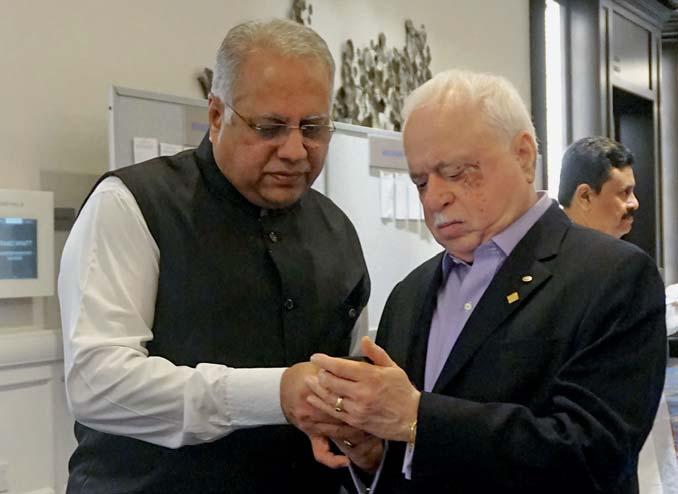
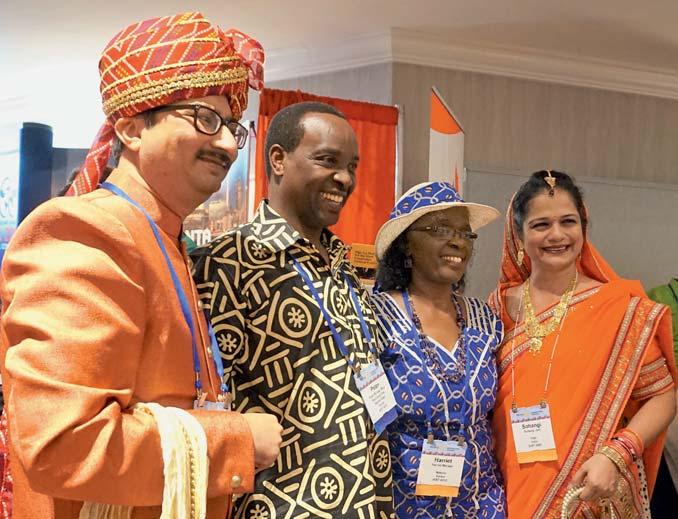
From top:
(From left) DGE J Abraham, PDG Balkrishna M Inamdar, Prasanna Kumar, DGE Asha Prasanna Kumar, RIDE C Basker, Lata and DGE Vyankatesh Vithal.
RID Manoj Desai and TRF Trustee Sushil Gupta.
DGE Ruchir A Jani and Sohangi with DGE Peter and Harriet Murage of Kenya, D 9212.
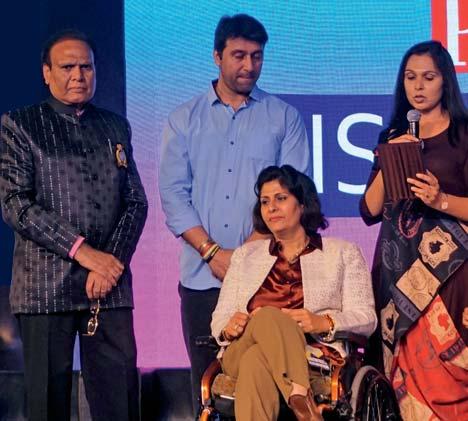
Read the incredible saga of Deepa Malik, a Paralympic medallist, who defied all odds and challenges to emerge victorious and create history for India at the Rio Paralympics.
24 Serious Fun
President-elect Ian
Riseley on attracting new members, building strong clubs, and forming friendships that last.
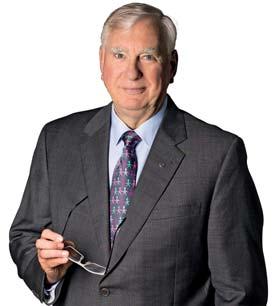
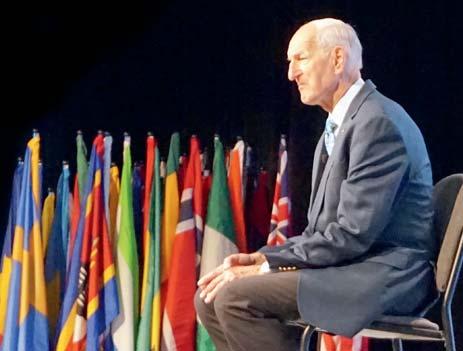
20 Why Rotary has been branded a “unique organisation”
At the International Assembly in San Diego, PRIP William B Boyd enumerated why the international branding agency Siegel & Gale certified Rotary as ‘unique’.
16 Hoarding money can make you crazy
AKS Member Manoj Israni has his own philosophy about money, and says beyond a point, it should be given away for society.
40 Rotary fulfills its promise
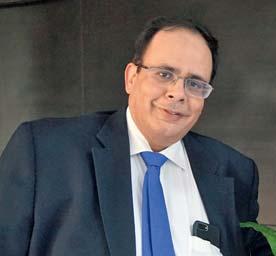
Rotary’s commitment to construct 32 new schools for the children of Uttarakhand has been fulfilled.
The Rotarians of RC Vapi celebrate the TRF Centennial Year by gifting prosthetic hands for the needy.
A brief analysis of the Union Budget 2017–18.
You are at an advantage when you work out with friends — you tend to push beyond what you would probably do on your own.
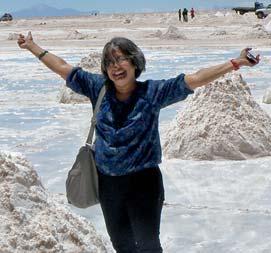
With its unique saltscapes and volcanoes, Salar de Uyuni in southwest Bolivia is certainly an adventurer’s delight.

64 Bacon cookies, egg tarts and kitties in pink bows
On a food trail in Hong Kong and Macau, leave behind your fetishes and pamper your palate.
On the cover: Paralympian Deepa Malik and film star Sanjay Dutt at the District Conference of D 3141 in Mumbai.
Picture by Rasheeda Bhagat.

A brilliant cover
What a brilliant idea to project the jasmine flower to depict the beauty and fragrance of India on the cover page of the February issue — a beautiful photograph of a beautiful Indian lady in a beautiful silk sari at the International Assembly. It was simply superb and I have no words to express my appreciation for the February cover.
The editorial on Rotarians already making a difference is an excellent recollection of major service projects of Rotary. The photographs of India sparkles at San Diego were very attractive and make the journal very colourful. Good coverage by Rasheeda Bhagat.
The Group Study Exchanges back in a new cultural avatar is wonderful news. The interview with TRF Trustee Chair Kalyan Banerjee is an eye-opener for Rotarians, that if Indians are appreciated and noticed they will be happy to give more. Overcoming challenges, restoring dignity is another heart touching article, which brings out the true services of Rotarians through medical missions where there is a real need.
Mobile toilets for women cops in Mumbai is a unique project that shows how Rotary spreads its wings to serve. All about literacy is an excellent article by Jaishree; the worry about low payment for teaching professionals in India is true. Club Matters is a useful column for Rotary presidents to know more about the different projects and contributions by other clubs.
The message from RI Director Manoj Desai explaining his dream for the coming year is simply heart-touching. We wish his dreams come true with the support from all Rotarians.
The photo gallery Dubai memories is eye-catching and colourful and the photographer must be appreciated for a good job. The article When the partners sparkled at the Dubai Institute is good. RI President John Germ says “if they are not happy, you are not going to be happy, and if you are not happy, your club members won’t be happy” shows his respect for the partners.
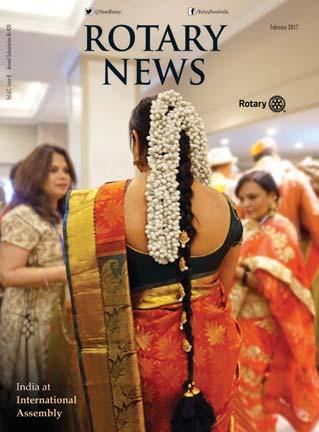
The January issue titled Dazzling Dubai is colourful with an attractive front cover. The editorial A mix of dazzle and exotica clearly brings out in front of our eyes the opening ceremony of the Zone Institute — from the story of tee-shirt to clean toilet for women — that I felt as if I was there enjoying every minute of the event as the coverage is excellent.
Nowadays I read the journal the day I receive it, not once but two or three times. Thanks for making it very interesting and useful.
V Jayaprakash
RC Salem East — D 2982
Wow, what a wonderful issue of Rotary News in Feb 2017! It is so colourful and refreshing. Various angles of India at International Assembly reflected throughout the issue, and have made it attractive. We readers realise that the magazine has taken a steadfastly content-driven approach, even while remaining constant to the core values of Rotary.
Col Gopinathan, RC Wadakanchery — D 3201
India’s show at the International Assembly was covered very well with all the details; the photos were nicely taken at the event. A well-balanced monthly issue with all the eagerly awaited articles about events that had taken place since the last issue. Keep it up.
Group Captain V G Deodhar
RC Nasik — D 3030
Colourful articles on IA meet
The front cover and inside wrapper are captivating in the February issue. They are classy and tasteful, depicting the feel of our rich culture in a symbolic and subtle manner. Fascinating silk sarees, colours, tika and the gold jewellery, made the IA come alive. The men were not behind in representing Indian ceremonial saafa along with Nehru jackets, Jodhpuri coats, Gujarati turbans and South Indian attire. Congrats for the front inner wrapper picture. The write-up on the IIS University conferring Doctor of Letters to RI President John Germ is readable due to its presentation and layout.
Also, other articles covering the IA, interview with TRF Trustee Chair Kalyan Banerjee and Medical Missions by PRIP Rajendra Saboo have made the February edition a collector’s issue.
PDG Ajay Kala
RC Jaipur Round Town — D 3052
Yes, “you are making a difference” since the 28 months you took over as Editor, Rotary News.
Your coverage of IA at San Diego is superb. Reading it and seeing the pictures, I feel that I am in that city. Wherever there is Rotary conference, you are there. Hats-off to your editing. Please visit our place Nellore to know about our service to humanity.
Y Jagannadham
RC Nellore — D 3160
Excellent coverage of DDZI C ongratulations for the vivid and comprehensive reports of DDZI in the January issue. I felt as if I had attended the Zonal Institute. The questions of IPRIP K R Ravindran and the candid replies of RI President John Germ and RIPN Sam Owori are a clear focus on Rotary and its future.
P D Bagri, RC Baroda Jawaharnagar — D 3060
The centennial celebrations of The Rotary Foundation organised by Rotary Zones 4, 5 and 6A at Dazzling Dubai is a New Year gift to the world. The colourful celebration was a grand success due to the meticulous planning and hard work put in over nearly two years by the two pillars of Rotary — RID Manoj Desai and PDG Raja Seenivasan. Hats off to the duo on behalf of all the Rotarians of South Asia.
Of all the nine beautiful articles with pictures written by the Rotary News Editor, I select here a few — Teamwork vital to change the world: John Germ; When the partners sparkled at the Dubai Institute, both of which were complemented by Fun-time at Dazzling Dubai and a nice entertainment picture on the cover. The participants and their spouses wearing multi-coloured and glittering attires have been eye-catching to all Rotarians, young and old. It is a feast to the beholder.
G V Sayagavi, RC Davangere Vidyanagara — D 3160
Sitting, the new smoking
Iliked the article Sitting is the new smoking by Sheela Nambiar in the January issue. During my recent visit
to Europe for a business meeting in Finland, I found that executives are using tables which are having auto button to raise the top of the tables so that they can also work by standing at the work place.
These tables are beneficial for those working most of the time on a desktop computer or a laptop. I hope this product should also be available in India to save people the risks of diseases like cancer and spondylitis.
T D Bhatia
RC Delhi Mayur Vihar — D 3080
Club activities are important
The January issue is very attractive with beautiful glimpses of the Dubai Institute meetings, especially on TRF strategies. But I was surprised to find Club Matters missing. I feel that under any circumstances, the pages for club activities must not be cut as they are the backbone of Rotary’s work and image.
RI President John Germ has rightly pointed out that Rotary partnership with other organisations is advantageous to society. RIPN Sam Owori’s suggestion of inducting the right people in clubs is the key to resolve the problem of quality in Rotary.
The article Black money is like blood cancer by TCA Srinivasa Raghavan is interesting with his valuable suggestion for the government not to waste energy on a small portion of income of the honest people who do not declare income tax because they genuinely can’t afford the high taxation. I always enjoy reading the many useful information in Rotary News.
P C Sanghi
Assistant Governor — RID 3052
We welcome your feedback. Write to the Editor: rotarynews@rosaonline.org; rushbhagat@gmail.com
RI Dist 2981
DG A Mani
RI Dist 2982 DG T Shanmugasundaram
RI Dist 3000 DG M Muruganandam
RI Dist 3011 DG Dr N Subramanian
RI Dist 3012 DG Sharat Jain
RI Dist 3020 DG Dr S V S Rao
RI Dist 3030 DG Mahesh H Mokalkar
RI Dist 3040 DG Darshan Singh Gandhi
RI Dist 3051 DG Dinesh Kumar V Thacker
RI Dist 3052 DG Ramesh Choudhary
RI Dist 3053 DG Bhupendra Jain
RI Dist 3060 DG Hitesh Manharlal Jariwala
RI Dist 3070 DG Dr Sarbjeet Singh
RI Dist 3080 DG Raman Aneja
RI Dist 3090 DG Sanjay Gupta
RI Dist 3110 DG Dr Ravi Mehra
RI Dist 3120 DG Dr Pramod Kumar
RI Dist 3131 DG Prashant Deshmukh
RI Dist 3132 DG Pramod Shashikant Parikh
RI Dist 3141 DG Gopal Rai Mandhania
RI Dist 3142 DG Dr Chandrashekhar Kolvekar
RI Dist 3150 DG Ratna Prabhakar Anne
RI Dist 3160 DG Sreerama Murthy
RI Dist 3170 DG Dr Vinaykumar Pai Raikar
RI Dist 3181 DG Dr R S Nagarjuna
RI Dist 3182 DG Devarunda Subbegowda Ravi
RI Dist 3190 DG H R Ananth
RI Dist 3201 DG Dr Prakash Chandran Arackal
RI Dist 3202 DG Dr Jayaprakash P Upadhya
RI Dist 3211 DG Dr John Daniel
RI Dist 3212 DG Dr K Vijayakumar
RI Dist 3230 DG Natrajan Nagoji
RI Dist 3240 DG Dr Rintu Guha Niyogi
RI Dist 3250 DG Dr R Bharat
RI Dist 3261 DG Deepak Mehta
RI Dist 3262 DG Narayan Nayak
RI Dist 3291 DG Shyamashree Sen
PRIP Rajendra K Saboo RI Dist 3080
PRIP Kalyan Banerjee RI Dist 3060
PRID Sudarshan Agarwal RI Dist 3011
PRID Panduranga Setty RI Dist 3190
PRID Sushil Gupta RI Dist 3011
PRID Ashok Mahajan RI Dist 3140
PRID Yash Pal Das RI Dist 3080
PRID Shekhar Mehta RI Dist 3291
PRID P T Prabhakhar RI Dist 3230
RID Dr Manoj D Desai RI Dist 3060
RIDE C Basker RI Dist 3000
Executive Committee Members (2016–17)
DG M Muruganandam RI Dist 3000
Chair - Governors Council
DG Shyamashree Sen RI Dist 3291
Secretary - Governors Council
DG Sarbjeet Singh RI Dist 3070
Secretary - Executive Committee
DG Natarajan Nagoji RI Dist 3230
Treasurer - Executive Committee
DG Gopal Rai Mandhania RI Dist 3141
Member - Advisory Committee
Editor
Rasheeda Bhagat
Senior Assistant Editor Jaishree Padmanabhan
ROTARY NEWS TRUST 3rd Floor, Dugar Towers, 34 Marshalls Road Egmore, Chennai 600 008, India. Phone : 044 42145666 e-mail : rotarynews@rosaonline.org Website : www.rotarynewsonline.org
Printed by Mukesh Arneja at Thomson Press (India) Ltd, Plot A-9, Industrial Complex, Maraimalai Nagar 603209, India and published by Mukesh Arneja on behalf of Rotary News Trust from Dugar Towers, 3rd Flr, 34, Marshalls Road, Egmore, Chennai 600 008. Editor: Rasheeda Bhagat.
The views expressed by contributors are not necessarily those of the Editor or Trustees of Rotary News Trust or Rotary International. No liability can be accepted for any loss arising from editorial or advertisement content. Contributions – original content – are welcome but the Editor reserves the right to edit for clarity or length.Contentcanbereproduced,butwithpermissionfromRNT.
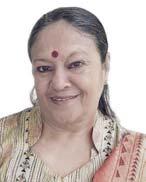
t was good to see a special session at the District 3080 conference discussing the value that spouses bring to Rotary. That a veteran Rotary spouse such as Usha Saboo, wife of PRIP Rajendra Saboo, observed wryly that finally this issue was getting importance, was indicator enough that till now Rotary spouses or partners — read women, because even now women make up barely 20 per cent of Rotary — have not been taken seriously. But the spouse or partner moment has finally arrived in Rotary and this was evident with two RI leaders — RI President John Germ and RIPE Ian Riseley raising this issue at two major events. At the Dubai Institute, Germ asked the incoming Governors “to think of how important your partners are going to be for your success as DGs.” Without mincing his words, he added: “If they are not happy, you are not going to be happy, and if you’re not happy, your club members won’t be happy.” Even at the International Assembly, Riseley, who’s been a DG’s spouse himself when his wife Juliet was the District Governor, had a few “simple words of advice” to the partners. While it wasn’t compulsory for them to be immersed in all Rotary activities, “you can be supportive. You may have particular skills that add to the capacity of the (DG’s) team. Juliet added flair to my District Conference committee, which was badly needed, along with knowledge of information technology, and she was also very good at hosing down some of my more crazy ideas!” The important thing is to complement your spouse, he said, admitting that he and Juliet had completely different approaches to issues. He liked finishing things as soon as possible and then move to the next task; she performed best under the pressure of a deadline. “I have a strong need for punctuality, whereas for Juliet, a timetable is just an optimistic suggestion! She has an incredible mind for detail, whereas I forget everything other than the big picture.” But
when such differences come together in a couple, they blend nicely together to form an enviable team.
The RIPE added that the partners of other Rotarians in the District would look up to the DG’s partner for guidance. “Don’t be intimidated, just diplomatically give your opinion on the matter, if you have one.” Tongue firmly in cheek, he told the spouses not to be afraid to say they didn’t know the answer “because after all, it is the DG who is supposed to be the expert on everything to do with Rotary from July 1! But I encourage you not to contradict your partner in public and be gentle with him or her when you disagree in private. District Governors are under a great degree of stress and believe me that support at home can be very important.” The partner’s advice can also be very valuable; specially during official visits “it is amazing what you can pick up by just chatting with the rank and file”. A lot of learning to be gleaned from those words of wisdom!
But for me, the quintessential speech on being a Rotary spouse/partner came from Juliet herself, who, addressing the partners at a general session, said that as a spouse (she is also a Rotarian and a PDG), “I also learnt that paying heed to silly advice was a great waste of my time. I don’t know if any of you were advised to wear a certain kind of dress or skirt, high heels and stockings, etc.” The message was clear. Be yourself. Dismiss superfluous advice that seeks to change who you are. As a female, or male spouse, you have your own special skills and talent, education and grasp of important issues. Remain your own person, even while helping your spouse to spread cheer in the world.
Rasheeda Bhagat
Dear Fellow Rotarians,

Forty years ago, the Rotary Club of Duarte, California, admitted three women members, in violation of the Rotary International Constitution. As a result, the club’s charter was terminated by RI.
Undeterred, the club’s members continued to meet. They put an X over their Rotary insignia, made themselves new pins, and dubbed themselves the Ex-Rotary Club of Duarte as they continued to fight for the right of women to serve as Rotarians. Ten years later, a restored Rotary Club of Duarte sent Sylvia Whitlock, Rotary’s first female club president, to a presidents-elect training seminar. Not long after that, in 1989, Rotary’s Council on Legislation permanently ended Rotary’s status as a men-only organisation.


Today, with more than 240,000 women in our clubs, Rotary is stronger than ever. We are women and men from nearly every country of the world, serving our communities in more than 35,000 clubs. At the club level, we need men and women of all backgrounds, ages, cultures, and professions; internationally, we need clubs in every city, country, and region of the world. The better our clubs reflect their communities, the better we can serve them. Our diversity is our strength.




It is difficult for most of us to imagine today why anyone argued so strongly against the idea of women in Rotary. Looking back, I think that opposition came from a simple resistance to change. Rotarians loved Rotary the way it was and couldn’t imagine it any other way.
We still love Rotary as much as we ever did. We love the friendships and connections we make there, and the ability Rotary provides us to serve humanity. We believe Rotary has tremendous value in our own lives and in the world at large. And we recognise, more than ever, that for Rotary to continue to grow, it needs to embrace the world it serves — in all of its diversity, all of its variety, and all of its evolving needs for service.

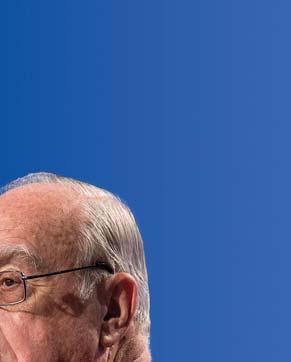
The Rotarians of today owe a debt of gratitude to the Rotarians of Duarte 40 years ago. Their determination, persistence, and enduring goodwill set the stage for the organisation we have become: Rotary Serving Humanity.



John F Germ President, Rotary International



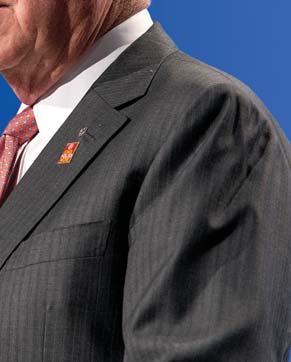

February, designated as the month for World Understanding and Peace, was an occasion for us to recall the first Rotary meeting held on February 23, 1905. We commemorate it as the World Understanding and Peace Day. This is a big opportunity for every club to plan and promote Rotary’s continued quest for goodwill, peace and understanding amongst the people of the world.
The Rotary Peace Centres are a definite step towards this. Each year, Rotary selects up to 100 professionals from around the world to receive fellowships to study at one of our peace centres. Through academic training, practice, and global networking opportunities, the Rotary Peace Centres develop leaders who become catalysts for peace, conflict prevention and resolution. In just over a decade, the Rotary Peace Centres have trained more than 1,000 Fellows for careers in peace building. Many of them are serving as leaders at international organisations or have started their own Foundations.
Our Trustee Chair Kalyanda had said in 2011–12, “One size does not fit all”. So the modus operandi to celebrate will depend on what needs we have to address in our country, as each country will have different needs. This is the time to pause and introspect on whether we are fulfilling our community’s needs so that we can enjoy peace and world understanding. To be honest, chaos and terrorism are on the rise as needs are not adequately addressed.
Let us look at the needs of Zones 4, 5 and 6A, which comprise India, Sri Lanka, Nepal, Bhutan, Maldives and Myanmar. Our Prime Minister has awakened the giant through his clarion call for Literacy and WinS. We all have wholeheartedly agreed to join the movement. Gandhiji has said; “Mass illiteracy is India’s sin and shame and must be liquidated.” PRID Shekhar Mehta and Trustee Sushil Gupta are steering our two flagship projects — Rotary India Literacy Mission and WinS — with great zeal and enthusiasm. These are definite steps which can help bring peace.
Friends, I hope the Literacy Summit at Chennai will recharge you all to strive more for a Literate India. Rotary is doing good in the world and certainly making a difference!

Manoj Desai Director, Rotary International






When you give to The Rotary Foundation, you can be completely confident that your fellow Rotarians put those donations to work on life-changing projects in our six areas of focus. That confidence should inspire our continued support, especially when we consider the remarkable results.

In March, as we observe Water and Sanitation Month, let’s take a closer look at how Rotarian-led projects are providing millions of people with access to clean water and adequate sanitation facilities. This area of focus has long been high on many Rotarians’ service agendas, and for good reason — 663 million people do not have access to clean water, and one-third of the world’s population live without access to a toilet.
Think about how different life would be if you had to spend hours each day fetching water or worry about the threat of dysentery, cholera, Guinea worm, and a host of other waterborne diseases.
Our efforts in providing clean water have far-reaching effects. An estimated 10,000 clubs participate in water-and sanitation-related projects, with strong support from our Foundation. In 2015–16 alone, The Rotary Foundation provided $19 million for global grants in this area of focus.
And that’s just one of the six critically important issues that our Foundation is addressing today. In 2015–16, our Foundation provided $76 million for all global grants, which also fight disease, save mothers and children, promote peace, support education, and provide economic opportunities to many people worldwide. Your gifts are what make this good work possible.

Our Foundation was conceived in 1917 to “do good in the world, ” and that is exactly what it has been doing for 100 years. To celebrate this milestone, I encourage all Rotarians to consider making a special centennial contribution to ensure that we continue our urgent and transformational work throughout the world.

Kalyan Banerjee Foundation Trustee Chair





Rasheeda Bhagat
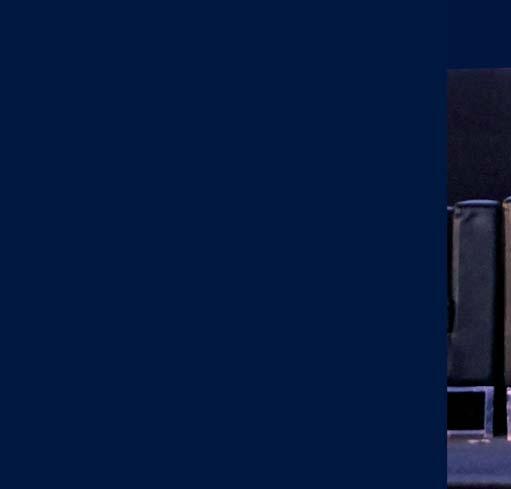
Read the incredible saga of Deepa Malik, a Paralympic medallist, who defied all odds and challenges to emerge victorious and create history for India at the Rio Paralympics.
Log kehtey hei apang ho gayi, I say rajyog aa gaya (People say she is crippled; I say I have become royalty). Did you see how I got carried onto the stage like a queen? Fayde hi fayde hei ji (There are only advantages). Now nobody asks me to sit on a two wheeler; a car is always brought for me. I’m never sent by trains, I only get air tickets. And during demonetisation, I never had to stand in ATM queues. Kyo ki hum jaha pahunch jaate hei, line wahi se shuroo ho jati hei (The queue begins where I am stationed).”
With these words the feisty Deepa Malik, the first Indian woman to get a silver medal in athletics in the Rio
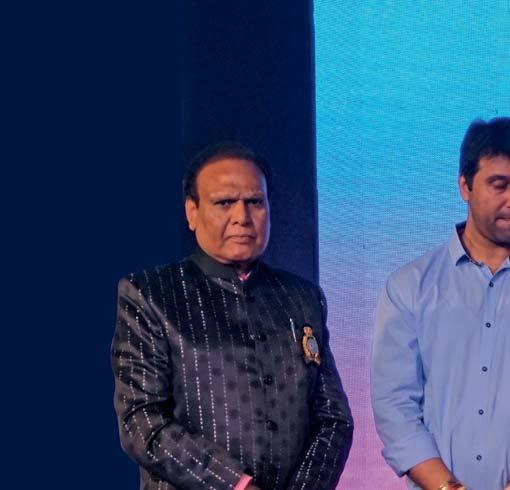
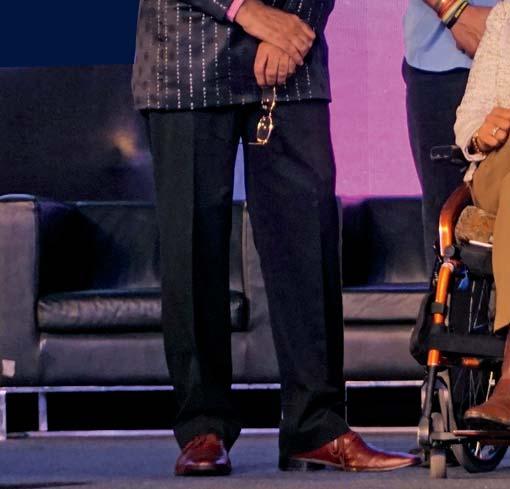
Paralympics, held the packed hall spellbound at the District 3141 Conference in Mumbai.
Listening to her speech laced with humour, confidence and optimism, you forgot that she was a paraplegic confined to a wheelchair. She made the huge pile of challenges she has faced in her life, right from the age of 5, appear as mere blips as she related her story, which is filled with spinal tumours, over 30 surgeries, loss of bladder and bowel control, all of which she faced with grit, determination and optimism, emerging a champion in all senses of the word.
When only five, she was diagnosed with a spine tumour and admitted to the

Pune Command Hospital, where she was bedridden for almost 18 months. This was in 1975, and the diagnosis took so long as there were no CT scans or MRIs; “it took the doctors 7 or 8 very painful lumbar punctures to make the diagnosis, but I was finally operated for the tumour and underwent a lot of rehab training.”
With no cable TV, Play Stations or video games, and too young to read books, “I heard a lot of stories from my family members. And these stories taught me so much; because in all stories, everything is good at first, next come the problems and challenges and then come the solutions and there is always a happy ending.”
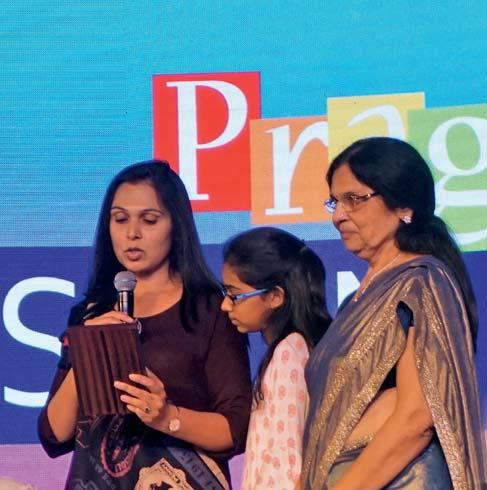
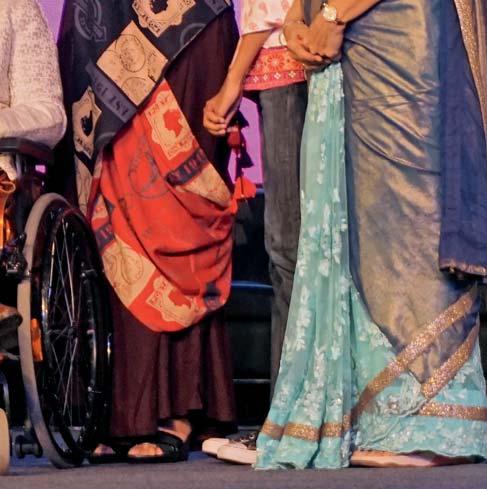

So at an impressionable age, the child learnt that life is all about struggles for which solutions have to be found. “And if you have hope, faith and ideas, you can live happily ever after. That is something I learnt as a six-yearold!” She also learnt the art of gratitude.
Inthree years, she was able to walk again and the disability was a matter of the past. Years flew by and she grew up to love outdoor games and sports, and fell in love with bikes. So much so that even the very basis of her marriage was a bike. “I said I will marry the man who will give me a bike; my husband

walked up to my father and said I will gift her a bike and I married him!”
A fairy-tale marriage began; in 18 months they got a daughter Devika. But one fateful day, when the child was just 14 months and was learning to walk, the house door remained open by mistake, the little girl walked through it and was knocked down by a vehicle on the road. She sustained a head injury, had internal bleeding and was paralysed on the left side. “I took her back to the same hospital — Pune Command — and my father said it is now your turn to be the parents we were to you.”
Deepa took the problem head on, but what was most hurtful were loose and cruel comments from people “Maa
ki bimari thi beti ko lag gayi. (The daughter got the mother’s ailment).”
She courageously decided to have a second child “more to prove to the world that I can have a normal child”. Ambika came into their lives, and as she grew up, Devika started improving too.
her husband was selected for the defence services staff course in Ooty, but after Deepa reached Ooty, the pain in her legs returned. She was losing balance, especially on the slopes and hilly areas, and “in the cold I would feel my legs getting spastic. I found it difficult to bend down, lift the children or give them a bath. I knew something was going wrong in my body but as it was a prestigious course and only for 10 months, I didn’t want to disturb him and continued to live with the pain.”
Meanwhile, a beauty contest was announced promising designer clothing, hair do and make up, and she seized the opportunity to get all that. She participated, went to the stage, exuded confidence, told Haryanvi jokes and made it to the final 10. “If I was losing marks in my walk, I was making them up with my talent. When she reached the final 10, in the judges round, “I was asked, you have a slight limp when you walk and yet you are in a beauty contest. Why? I said no medical problem will stop me from feeling beautiful. And I did end up winning the crown that evening!”
But the problem persisted; her husband finished his course and was posted From the other side came the reply from my husband, who was fighting the Kargil war. ‘Don’t worry about the legs. Over. I will.’
to Kargil. Switch over to 1999; as the Kargil war was on, doctors once again found tumours in Deepa’s spinal column. She required immediate surgery and was transferred to the RR Hospial in Delhi. “With one child already under rehabilitation, the younger girl only 3 and my husband away in a war, I had two choices; to give up, cry, be sad and throw tantrums, get into depression and feel it was the end of the road for me. Or to take charge of the situation. I took the second option, made arrangements for my paralysed body at my home by putting away my jewellery in the locker, packed up all the crystals, made my house accident-free, employed extra help and prepared for the paralysis ahead.”
She went back to the hospital and told the doctors she hadn’t spoken to her husband for two months as a war was on. “I told them I want to go into surgery knowing that he is alive. Can that be done?” She was taken to the radio room which was for the war casualties who were being flown into the RR Hospital. “From there I spoke to my husband. It was a very awkward situation. I said: ‘Hello Vikram. Over. They are taking me into surgery. Over. They say I will never walk again. Over. From the other side came the reply. ‘Don’t worry about the legs. Over. I will carry you in my arms all my life. Over. Just don’t die on me. Over.’”
Regular follow up treatment is necessary for the tumours and the biggest challenge is that “I don’t have bladder and bowel control. Every drop of water I drink has to be measured. If I drink too much, I can wet my diapers, and embarrass myself. If I don’t drink enough I can end up with urinary infection or collapsed bladder for which I have to be taken to the hospital.”
Similarly, if she doesn’t eat the right kind of food and balance her diet she can have a running stomach and embarrass herself. “If I don’t eat rice, I can have constipation and have to be again taken to the hospital for extraction of stools with the help of enema. That
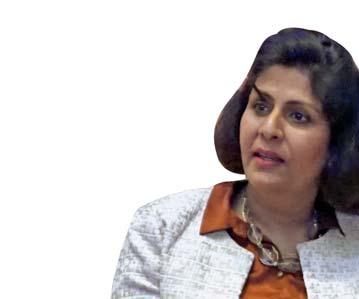
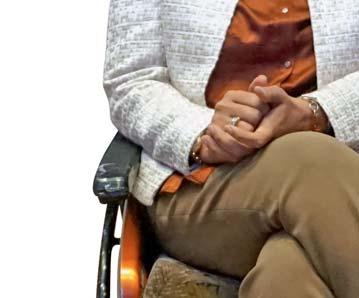
Aspredicted, she was paralysed after surgery.
“Today I do not have torso balance, can’t raise both my arms together, only my arms and neck are functional, between the shoulder blades I have undergone three major surgeries which have left 200 stitches in my spinal column.”
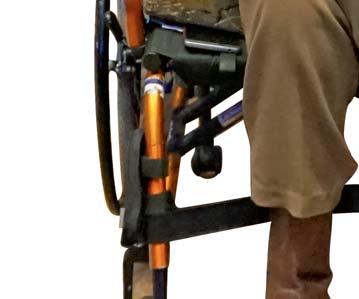

I had two choices; to give up, cry, be sad and throw tantrums, get into depression and feel it was the end of the road for me. Or to take charge of the situation. I took the second option.
is the kind of life I live day-to-day and it has been like this for over 17 years,” Deepa said, leaving many an eye moist in the audience.

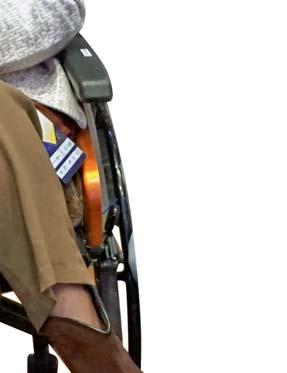
But she perked up immediately and added: “There are so many medical excuses and problems but I think I look hot!” Spontaneously there were many responses from the hall: “You do, you do”, as she added, “And I still continue to feel beautiful. I strongly believe that people look at you the way you look at yourself. And I have chosen to look at my life as half full, not half empty. I don’t crib about what I don’t have. Rather I celebrate life every day with what I have. I have adapted, accepted the change, because the only thing permanent in life is change. Those who resist change resist progress.”
Withher lower body paralysed, she decided to work hard with her upper body, but had to constantly face hurtful comments from people around her. The first comment was will she be a good mother. Will she ever cook for and feed her daughters? “So much so that the teachers started opening the tiffin boxes of my daughters to check if they were being fed properly. This news reached me and I felt very hurt that people were talking about my incompetence as a mother. Ek patni haar sakti hei, ek
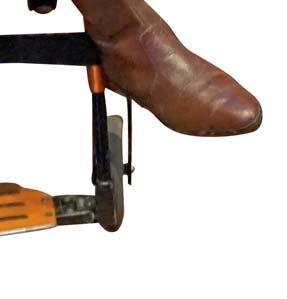
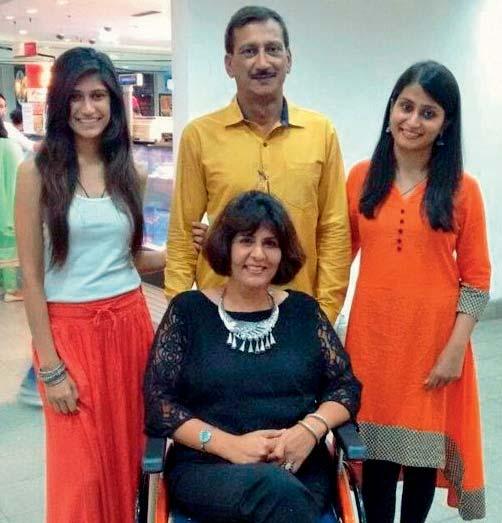
behen, beti, bahu haar sakti hei; lekin ek ma nahi haar sakti (A wife, sister, daughter, daughter-in-law can lose, but not a mother).”
She responded by starting a garden restaurant for underprivileged children in Ahmednagar in Maharashtra, where she was first recognised and feted by the local Rotary club. She started a project to fund the education of 40 children, who acted as catering/delivery boys in the evenings. “We started with four tables and ended with 40; people asked will she be able to feed two girls; I am now feeding 400 people every day. They said I will not be able to educate my daughters. I educated 80 children and rehabilitated them. And yet people would still ask me how’s your health! And this when I get up early in the morning and work till late night to run the restaurant!”
So she told herself she had to do more and return to her hobbies of car racing and motor cycling. But when she
wanted to return to biking, she was told she’d have to strengthen her shoulders for which swimming and hydro therapy were necessary. “When people saw me swimming, they said why don’t you swim for the country, join sports. I was 36 years old and who joins sports at 36? But when opportunity knocks at your door, winners are those who find the courage to walk through the door.”
She decided to learn serious swimming, went to a national meet, did three different strokes and won three gold medals. More important, added Deepa, these medals helped her in getting CSR funds to achieve her mission of ability beyond disability, in which the first step was to become a biker, create Limca records in swimming, biking and car racing, and that too in Leh, Ladakh.
Her achievements include two different categories of riding a special bike for 55 km at a stretch. She has also backstroked against the Yamuna currents for a km. “The coach said they
I have chosen to look at my life as half full, not half empty. I don’t crib about what I don’t have and celebrate life every day with what I have. I have adapted, accepted the change, because the only thing permanent in life is change.
don’t allow people in my disability category to take up open river water swimming and it had never been done in India before. I had to get special permission to convince him, and at the Yamuna banks people gathered wondering how I would swim with paralysed legs, but I did it.”
But with no heated pools available to continue her training in swimming in the winters, essential for competing in international swimming, she decided to become an athlete which was easier for her body. “So at the age of 39, for the first time I held a javelin, shot put and discus, which was a good move and got me several medals.”
To do all this, particularly car racing at high altitudes in Leh, several permissions had to be got and policies changed. Deepa fought for all this and emerged a winner.
Deepa concluded her talk going back to little Devika Malik who had been paralysed by a road accident. Showing photographs of her getting a Young Leader’s Award from the Queen of England, she said proudly: “She has a limp when she walks; yes, the left half of her body is slightly shorter than the right, but her spirits are not short. She has learnt to give back to society. She has taken the concept of sports beyond competition and has got a scholarship becoming the first ever Indian girl to do a PhD in Disability Psychology, and was invited for lunch by the Prime Minister of India.”
Pictures by Rasheeda Bhagat
WHe has his own philosophy about money, and says beyond a point it should be given away for society.
hen DG Gopal Rai Mandhania of District 3141 went to invite for the District Conference Manoj Israni, an AKS member, who had given $250,000 just the previous year, and urged him to donate some more to TRF during its Centenary year, what he wasn’t prepared for was one stark and simple sentence from the businessman: “Okay, I will give you another $250,000. Will that be enough?”
But then Israni’s philoso phy is simple: “I believe you should make money upto only a point and then you should start giving it away;
I’ve taught my son humility, which my father taught me. I learnt humility while travelling in trains by third class, where you have to manage heat and other discomforts. I went to school by bus and can tell you the bus routes in Mumbai.

otherwise you’ll start doing stupid things with your money. And believe me, I’ve seen people doing just that. There is no end to it. Bob Marley has famously said money is just a number and if you start chasing higher numbers, you’re never going to be satisfied. The chase is infinite.”
Israni’s is an interesting story; even though born in a rich family, he knows both about charity and the value of money. “People have a misconception that just because I come from a rich family, I love to give large donations… it’s not like that.”
Whenhe was in the Sydenham College in Mumbai, he became part of AIESEC, a non-profit organisation. “I became its vice president for India in 1990, and during that period learnt a lot about charity and how it works.”
During his stint as vice president, the young Israni would travel by third class in trains, and recalls how once his train broke down for three days in Jamshedpur “and we visited the TISCO (now Tata Steel) mills. During this period, we also met a lot of corporates to raise funds.”

So even though his father was a rich man, he learnt quite a bit about how ordinary Indians live. Israni had his early education in Hong Kong and Japan, where his father was the chief of a company, and returned to India when the child was seven. “So, despite my early education being in an American school there, after returning to Mumbai, I learnt and topped Hindi in three years!”
After completing his B Com, he started working immediately in his family business, and has been successfully running a pharma company for 25 years for Blue Cross Laboratories.
After working for 25 years, he made enough money, and told himself it was now time to give back to society. “I just keep wondering… seriously, I keep wondering… about what people do with Rs 10,000 or Rs 20,000 crore. At the same time, you see the plight of the poor people around you, not only in India, but so many countries of the world you travel to and that makes you introspect about how much imbalance exists in the world. I am not the kind of person to buy planes, jets, and similar things.”
Of course he bought a Merc, and “one Bentley. I’ll be honest with you, because I didn’t know what to do with my money. But then I said what am I going to do now? Start buying camels? Or private jets? So I thought let me give it to charity.”
Nextcame the question of finding a worthwhile partner, who was already doing charity, to give his money to.
A Rotarian from RC Bombay, “I thought Rotary International is one of the best organisations to work with because you can be sure your money will be well used. If I was a fancy guy who wanted a private jet or live in a 10,000 sq ft home, I could have done that. I wouldn’t have bothered about Rotary. But I am very content.”
Israni became a Rotarian in 2008. Having been in AIESEC, he wanted to do something for society and decided to join Rotary. “It took me nearly a year to get in because I wanted to join the best club — which is the Rotary Club of Bombay. And I believe everything has a time!”
But having joined Rotary, he didn’t want to give his cheque immediately for “this kind of big amount, and thought let me work my way in the organisation,” he reminisces.
When Nandan Damani became the President of the club, he made Israni Chairman of the fundraising committee “perhaps because he saw something in me.” He was soon asked to organise an event to raise funds. So Israni put together a team, held his first Rotary event and stunned everybody by getting 1,000 people to show up for a single club event! “We raised Rs 3 crore in a single event, and this mainly because I had the right team.”
In those days, he says, there was
n o real conc ep t of art auction, but fortunately one of his colleagues in
the committee knew eminent painter Akbar Padamsee well. “Art auctions had just started; he donated a lot of work, and through his works we managed to raise so much money.” After this mega success, unsurprisingly “every president wanted me as the chair of the fundraising committee because I became known as the guy who knew how art auctions work!”
And he decided that instead of just calling 100 or 200 people for such events “let’s call everybody who can put their hands in their pockets.” And everything conceivable — merchandising, tickets, gifts, auctions of art pieces, watches, etc — was brought under the gambit of fundraising. “I said I am not going to be the DJ on the stage; I took these fundraising events to a professional level,” smiles Israni.
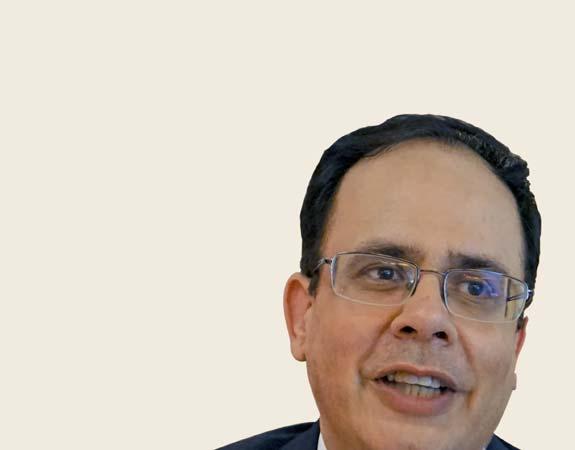
Evennot big but we do it consistently. At this event I thank the Mumbai police, the Army’s NSG and all the others who are involved in keeping us, Mumbai’s citizens, safe. There are several ways to do charity, but I believe that silent charity is the best.”
Last year, the then DG of D 3140 Subhash Kulkarni invited Israni to work on his team. He agreed and they decided on art auction. “He asked me how many people do you need on your team. I said only two — the auctioneer and the Editor of G2 magazine Abhinav Agarwal. He is also a Rotarian from RC Bombay. The DG was surprised and said: ‘Only two? Not a whole team?’ And I said no, not a whole team; it is like flying a plane, you need a good pilot and a co-pilot.” Israni chose Agarwal because in “G2 I’ve seen him organise such events with celebrities such as Amitabh Bachchan and I’ve seen his finesse in the way he does such events.”
Rotarians know that he is the person behind the of an annual event to

w ho kee p Mumbai and terror on in July 2008, “a friend of mine initiated a project and I sponsor t h e e v ent.” It costs only Rs 5 lakh is
today in Mumbai, not many Rotarians know that he is the person behind the financing of an annual event held to honour and thank those who keep Mumbai and Mumbaikars safe. After the horrendous terror attack on Mumbai in every year “which is
Israni also decided to outsource it to Saffron Art whose co-founder Dinesh Vazirani is a good friend. “I said I will get the works from different artists. So with a two-man team… of course towards the end many people got involved… and mainly Abhinav and Saffron Art, we pulled off a good auction and raised Rs 1.7 crore, one of


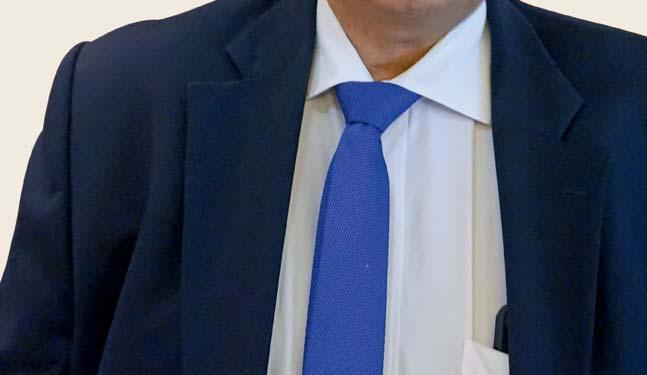
i t to S affron w hose co-founde r D inesh Vazirani is a g ood frien d “I said I will the works from differ team of course towards the end auction and raised Rs 1.7 one of the highest ever!”

n his becoming an AKS member, Israni says that a friend and fellow Rotarian Nirav Shah told him about the AKS concept. “And I said I can’t afford to give all the $250,000 at one shot.” But then he was giving a sizeable sum twice a year and it all added up to
n his an AKS mem ber, Israni says that a friend and fellow AKS “And I said I can’t afford to give all the $250,000 at one shot.” But then he was a sizeable sum a year it all added up to the total required last year.

Wh en K ul ka rn i’ s term a s was over
has a lot of for Rotary said I am to the new DG Gopal Mandhania me to
When Kulkarni’s term as DG was over and Mandhania took over, “Nirav (Shah), who has a lot of passion for Rotary, said I am going to bring the Mandhania, and he asked me to donate

something to TRF. He was expecting $25,000 and I said okay, I will work out something. But I thought as Gopalji himself has come, let me do something which will make an impact, and I decided to give $250,000. They were a little surprised!”
Now that is indeed an understatement! As Virendra Widge, also on DG Mandhania’s team puts it: “DG Mandhania was shocked; he didn’t expect such a big sum.”
In response, Israni grins and adds: “I gave because I could, and I thought if I don’t give here, I’ll end up doing something stupid like buying another car or a plane! And this is going to RI through my club and it will help society.” He was also happy to learn that he was among one of the youngest (he is 48) to donate such a large sum.
Asked how his own son Rohit, who is only 17 and studying, looks at charity, Israni says, “One thing I have taught him is humility. And I did so because I’ve learnt humility right in the beginning from my own father. I learnt humility while travelling in trains by third class, where if your train is delayed or breaks down, you have to
I gave because I could, and I thought if I don’t give here, I’ll end up doing something stupid like buying another car or a plane! And this is going to RI and will help society.
manage heat and other discomforts.” His father ensured that he commuted to school only by bus — (“even today, if you ask me the major bus routes in Mumbai, I can tell you”), and there was no question of his having a car when he was in college. “The first car I got was when I got out of college and started working. And with my son too, I believe that if you give fancy cars to your children, they’ll end up with the wrong kind of company, and learn wrong values.”
While Israni believes that getting CSR funds for public welfare projects is a good idea, “I’d rather that people
The Trustees of The Rotary Foundation have approved a three-year pilot for construction of low-cost shelters and simple schools as part of the global grant programme, beginning January 2017. The construction must be a part of a comprehensive project related to an area of focus and the Rotary Grants Terms and Conditions have been updated to remove restrictions on construction for these project types.
The Foundation is in the process of appointing a special twelve-member TRF Cadre’s Construction Group, with professional expertise in construction management, architecture and/or civil engineering, drawn from across the world, to technically review and monitor all global grant construction projects. Once the application is approved
examine their own conscience about how they need to share with their fellow Indians. But anyway CSR has now been made compulsory (for companies above a certain level) and I have no problem with it. But sometimes, if there are no good projects available, the balance is carried forward in the balance sheet. Many people have their own foundations, and some of these do good work."
He of course has no family foundation or charity arm, and prefers to give his money to TRF/RI. “I do believe that money given for a good purpose and to right organisation is money well used," he adds.
He is not sure at this point if he will continue to make such large donations to TRF. “I am not sure I’ll do it every year, but if god is kind enough, I might do it again next year, but I can’t make any promises at this point.”
But what he does know is that “I am not an accumulator or a hoarder of money; as I said before, money is just a number and if you have a craze for money, it can make you crazy.”
Pictures by Rasheeda Bhagat
for funding, the cadre member in the region will be the point of communication with the project sponsors during the implementation of the project.
Regional Grant Officer Sara Larson Mercer, who has a background in architecture, will be reviewing and overseeing these applications and she will be working closely with members of the Construction Group throughout the review/site visit.
In India, Rtn A Suresh of RC Bangalore Sadashivnagar, D 3190, has been appointed as member of TRF Cadre’s Construction Group. For more information, contact him at suresh.manjuone@ gmail.com or 98440 46122.
TRF is currently finalising construction requirements and guidelines for these project types.


Why Rotary has been branded a “unique organisation”
When the international branding agency Siegel and Gale did a research study on major service and humanitarian organisations and certified Rotary as ‘unique’, “we asked them why and they gave us four reasons,” PRIP Bill Boyd disclosed while addressing the International Assembly in San Diego on 'What makes us unique'.

One of the primary reasons was diversity; “they said that our classification system means that in our clubs we have members from many different businesses and roles and when we face an issue or a challenge, we bring a wide range of diverse experiences to ensure that we get the best answer. Diversity is important. We think differently.”
The second reason pertained to leadership; as most Rotarians were leaders in their own fields, they brought into Rotary meetings management and leadership skills. Also, Rotarians had “passion and perseverance”. The branding agency team attended several Rotary meetings and said that they could feel the underlying passion in every Rotary event they attended.
around them, did something that was remarkable: Community Service on a global scale.
But apart from these qualities, what made Rotary unique was the personal qualities of each Rotarian, he said, recalling what the Prime Minister of Sri Lanka had said at the Seoul Convention last June: “We are grateful to have Rotary in our country, as a community with Rotary is better off in every way than one without it”.

Rotary’s perseverance was at the forefront as it waged a war on polio. “To stay in the fight against polio for over 31 years for an organisation of volunteers is remarkable.”
But it was the fourth reason that really stood out for him, said Boyd. Being present in over 35,000 communities and most countries around the world, Rotarians, by sharing their resources with the communities

He said this because in Sri Lanka, Rotary had brokered peace for a few days and that had enabled the children in the embattled north to be immunised against polio. “And it was Rotary which built 21 outstanding schools after the tsunami in a project that was one of the best managed projects I have seen. Past President K R Ravindran was involved in both.”
Rotarians not only believed that they could make a difference; they built their service on the friendships they made in Rotary. “We associate with people who think and feel as we do and collectively we are able to do more than we could ever do alone. Service is indeed our business and friendships mean better service.”
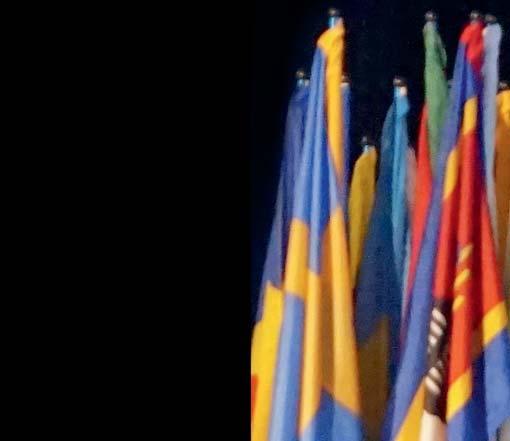
But to make the world a better place to live in, “we must be honest in our dealings with people. We cannot improve our communities if we do not respect people,” Boyd said. So honesty was an important value, as was being

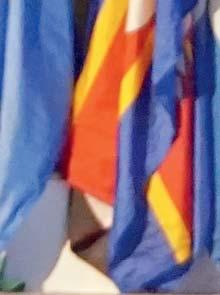

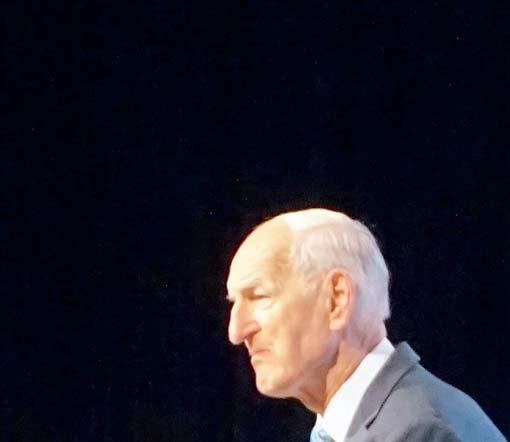
In our clubs we have members from different businesses and roles and when we face an issue or a challenge, we bring a wide range of diverse experiences to ensure that we get the best answer. Diversity is important; we think differently.

worthy of trust. Thanks to the latter, people trusted Rotarians with their children in Youth Exchange, Rotary Youth Leadership Awards and activity camps, as also their money, because they knew it would be used wisely.
“Bill Gates knows this; the Bill and Melinda Gates Foundation has given us significant amounts of their money because they know that we will spend it properly and account for it accurately. Trust is something you build and Rotarians have built community trust over the years by being true to our values.”

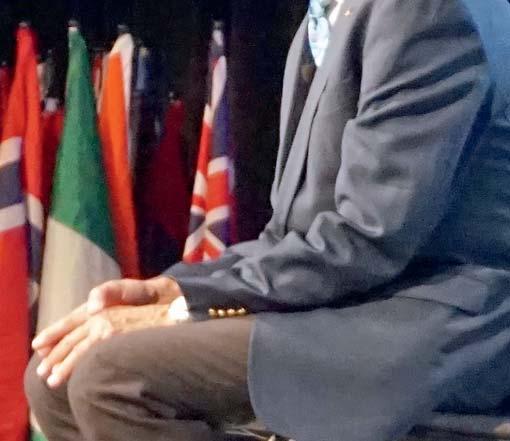
If the values such as service, honesty, trustworthiness, unselfishness, goodness and principles were to be collated in one word, that word would be Integrity, he added.
There was one more thing that influenced Rotarians, Boyd said, recalling Saint Teresa’s words, “The biggest disease today is not leprosy or tuberculosis but rather the feeling of being unwanted, uncared for, and deserted by everybody.” Lack of love and charity were great evils, as also indifference to our neighbours, and at the hour of reckoning we would be judged by God not on how much we had, but how much love we have put into our actions, she had said.
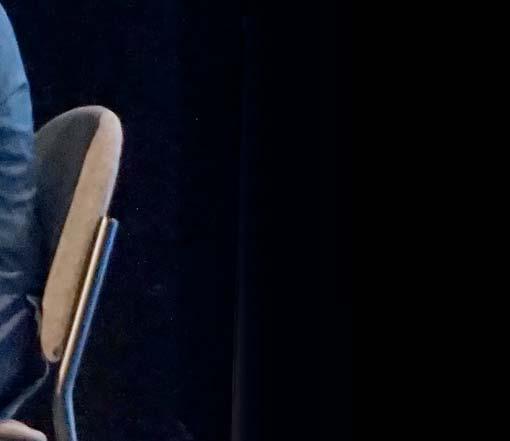
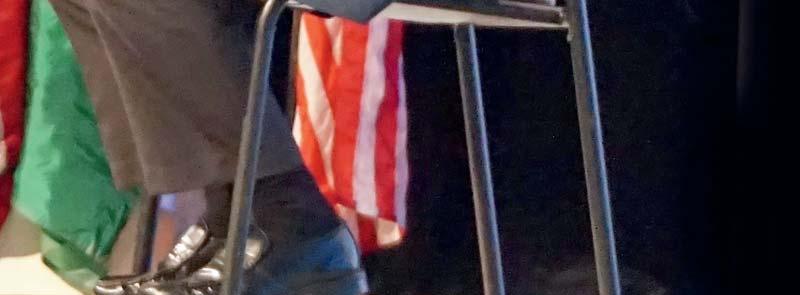
Rotarians were not guilty of such terrible indifference and did not accept that people should feel unwanted and uncared for or that their lives had no value. They had come into Rotary because they wanted to serve others, show their care and affection through service to the community, he said. If for each Rotarian, Rotary meant “service, integrity and caring, then indeed we will change the world one person, one community at a time. We become Rotary — making a difference,” he concluded, touching upon RIPE Ian Riseley’s theme for the coming Rotary year.

Pictures by Rasheeda Bhagat
Designed by N Krishnamurthy






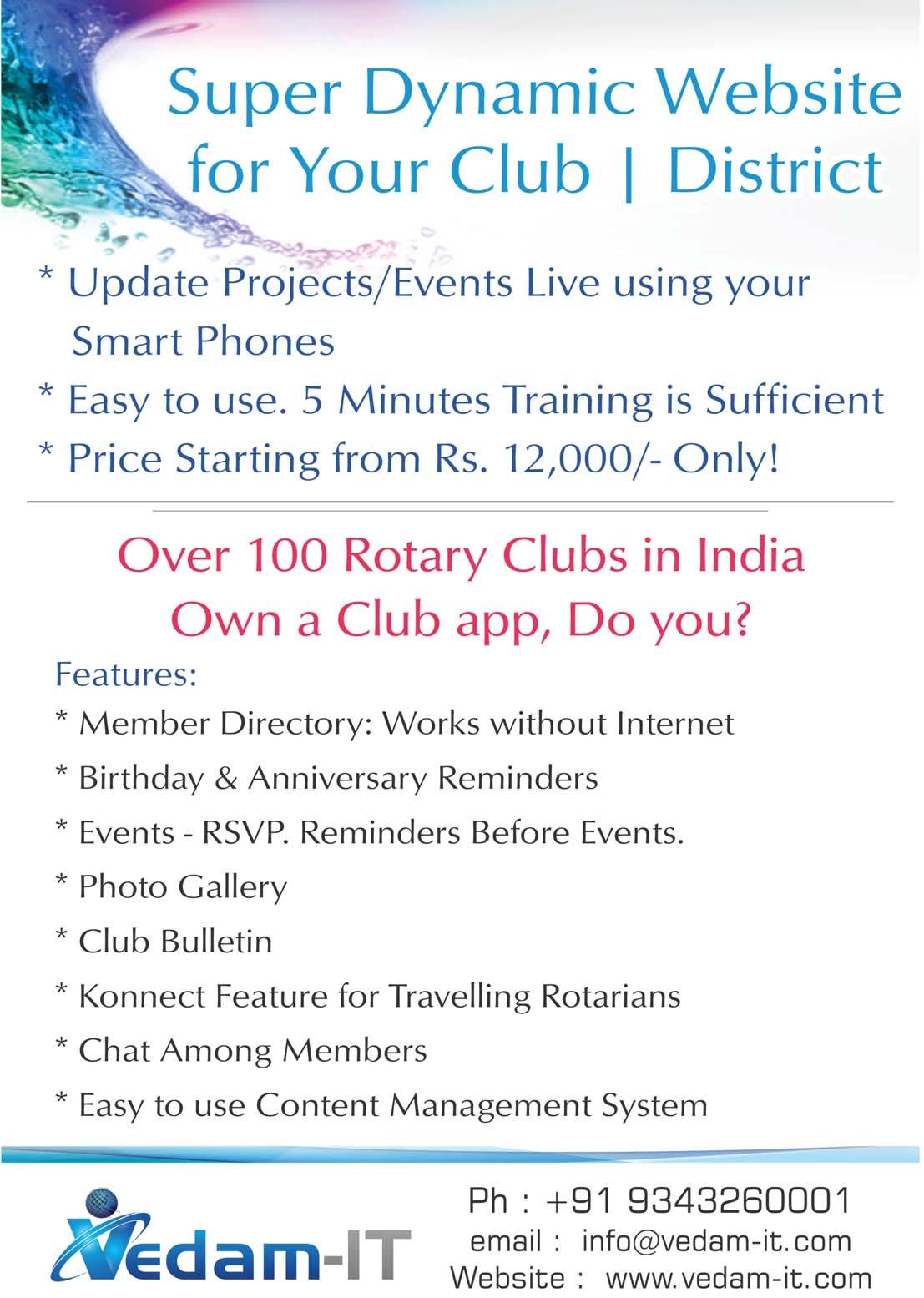

President-elect Ian Riseley on attracting new members, building strong clubs, and forming friendships that last.
Ian H S Riseley gets up from his desk, and he is tall. He has white hair, a firm handshake, and no tie. Early on, you sense that he likes the sort of energetic exchange that can swerve from serious to lighthearted, which makes him very good company. He exudes competence — which makes him seem like the right person to advise you on vexing tax issues. That’s good, because it’s what he has done for the last 40 years.


Riseley is a practicing accountant near Melbourne, Australia, and principal of Ian Riseley & Co., where he advises local and international businesses. He received Australia’s AusAID Peacebuilder Award in 2002 in recognition of his work in the Democratic Republic of Timor-Leste. He also received the Order of Australia medal in 2006 for his service to the community.
A member of the Rotary Club of Sandringham since 1978, he has served RI as treasurer, director, trustee, RI Board Executive Committee member, task force member, committee member and chair, and district governor. He received The Rotary Foundation’s Regional Service Award for a Polio-free World and its Distinguished Service Award.
His wife, Juliet, is also a Rotarian (but not in the same club) and is a past district governor. The Riseleys are multiple Paul Harris Fellows, Major Donors, and Bequest Society members.
Editor-in-Chief John Rezek of The Rotarian met with Riseley at his office in Rotary’s Evanston, Ill., headquarters.
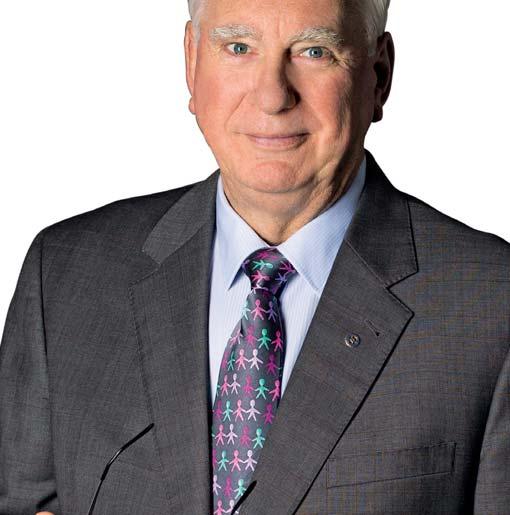


The Rotarian: How did you hear about Rotary and when did you become a member?
Riseley: A couple of years after I launched my accounting practice, my most significant client was a private hospital close to my office. The CEO was a Rotarian, and they must have been desperate because one day they invited me to a lunchtime meeting to speak about the fascinating topic of current developments in income tax. Yes, they more or less stayed awake. A few weeks later, the same client got in touch with me and said they were chartering a new club nearby and I said, “What does chartering mean?” (That tells us how often we lapse into Rotary-speak.) He said they were starting a new club in Sandringham and asked if I would be interested in going to the initial meeting. I said, “Absolutely.” But I didn’t go, which was foolish. I did go to the second meeting and met the 20 or so people who had been at the first meeting. They were the business elite of Sandringham, and I thought, wow, this is quite a group. So I kept going and we chartered — which means, by the way, we started the club — in November 1978.
TR: Was Rotary a good fit for you right away or did it take you time to become comfortable?
Riseley: I feel almost embarrassed saying this, but I felt comfortable immediately. It says something about the nature of the charter members of our club. We are talking about people who run extremely successful companies, but they were all really nice, absolutely first-rate individuals, and I wasn’t made to feel like the proprietor of a two-bit accounting practice down the road. That’s one of the delights of our organisation globally — we’re all equals. I think that’s really important.
TR: Are most of your friends Rotarians?
Riseley: My friends within Rotary aren’t just from my club. They are also from other clubs in the district. That’s
one of the principal reasons I think people should be Rotarians — you make really good friends. My closest circle of friends are not all from the ranks of Rotary. But reflecting on it, a lot of them have become Rotarians and I don’t think they would have if I hadn’t been involved. The danger is that Rotary can take over your life. You can become excessively focused on Rotary. Our daughter, who has a degree in public relations and understands these things better than most, once described it as ‘Rotarama.’ Rotary has basically taken over our lives. We put other things on the back burner; my golf handicap is disappearing into the distance, which is really sad. On the other hand, being in Rotary is a thrill and a privilege.
Good: The service we do for humanity, the membership that is growing in India, in Korea.
Not so good: Our aging demography; we’re not reinventing our clubs, and that really needs to be at the forefront of our attention.
TR: What moment made you see the importance of your involvement in Rotary?
Riseley: I was the third president of our club at age 34. I went to PETS (Presidents-Elect Training), which was held in a huge auditorium. I walked in, sat down, looked over my shoulder, and there was the senior partner of the accounting firm that I had previously worked for. John Hepworth was renowned among Australian accountants and was there as the incoming president of the Rotary Club of Melbourne, Australia’s first club, which started in 1921. Many of the movers and shakers in the city of Melbourne are in the Rotary Club of Melbourne. And there
I was, the incoming president of the Rotary Club of Sandringham with 35 members, and we’re on a par.
TR: If a young person asked you why he or she should join Rotary what, in order, would you say?
Riseley: There are four elements. The first one is friendship. Rotary offers the opportunity to meet people in a semi-social environment and also achieve good things.
The second one is personal development. I became the third president of my club at a very young age as I was starting up my accounting practice. I didn’t enjoy speaking in public, but being involved in a Rotary club means that you’re encouraged — some would say forced — in a friendly environment to get experience in speaking, running meetings, motivating people, all that sort of things. Your Rotarian colleagues are not going to fault you for a simple mistake. So you get practice, you improve, and you do it better. I’m not quite as shy anymore, so that’s a significant benefit.
The third is business development. We’ve shied away from this over a period of time, and I don’t believe we should. When I was invited to join the Rotary Club of Sandringham, I told Juliet, “Well, they’ve invited me to join this group, what do you know about it?” She knew about the same as me, which was not a lot, but she made the point that we’d make new friends, and hopefully some of them wouldn’t be accountants because too many of our friends were accountants, as if that could possibly be true. Rotary is good for business. Why should we shy away from promoting this?
The fourth one, and by far the most important, is the chance to make a difference in the world. If someone asked me to eradicate polio, my ability to do this would be rather limited. But when you gather together with 1.2 million people of like mind and have people like Bill and Melinda Gates donate funds to help achieve this objective, the opportunity for success is far greater.
TR: What has been your favourite job in Rotary?
Riseley: Bar none, it was acting as the president’s representative at a district conference. I loved that job. That’s why, when I allocate this responsibility on my behalf in 2017–18, I’ll make my selections for representatives very carefully. It’s a job that gives you the chance to go somewhere else in the world, or somewhere else in your own country, and understand how Rotary does all its great work.
TR: As you prepare to assume the highest office in Rotary, is it hard to have a regular conversation with your fellow club members?
Riseley: Who in their right mind is going to say yes? (laughs) The answer is not at all. Maybe it’s because I’m Australian, and in Australia we have a really good technique for keeping people grounded. It’s called the ‘tall poppy syndrome.’ If you get too big for your boots, my gosh, people bring you down to your rightful place in life very quickly. One of the absolute pleasures about the role that I now have is going around and meeting people and talking to them to ascertain what makes them tick.
TR: What’s on your to-do list?
Riseley: I have three words: planning, planning, and planning. This is a planning time, and I’m pleased to have the opportunity to think about ways in which I want to do things differently. In particular, I’m looking for ideas on how Rotary can relate better to young people. I want to get to know as many of the district governors-elect for 2017–18 as possible and establish lines of communication and understanding. I mean to tell them, “No pressure, but I’m relying on each and every one of you,” and they can rely on me too.
TR: What things are working well in Rotary and what things aren’t?
Riseley: Well, the service we do for humanity, I think we do particularly
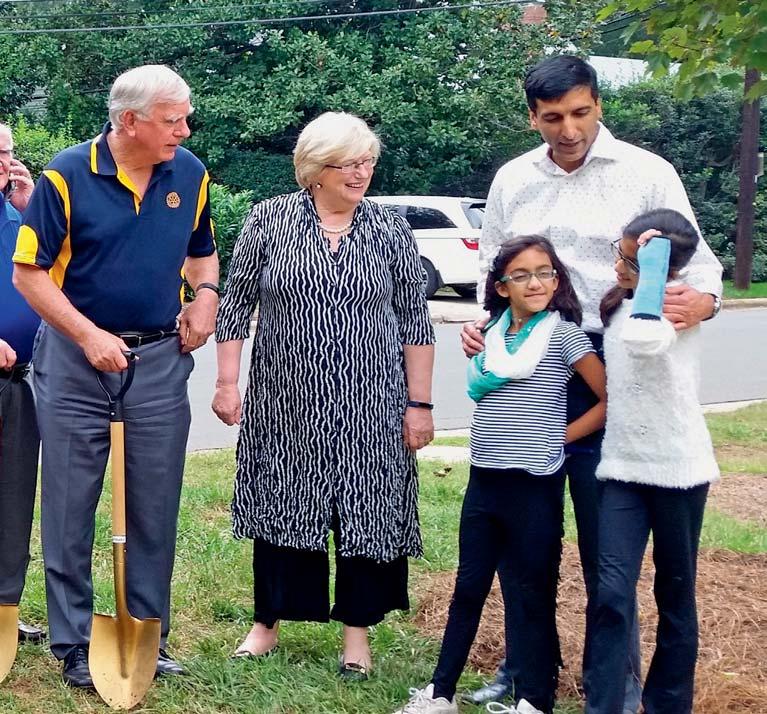
RIPE Ian Riseley and Juliet interacting with children at the Mint Museum of Arts, USA, after planting a tree on its grounds. Many of his predecessors including Paul Harris have planted trees at this campus.
well. Can we do better? Of course we can. Can we be better organised? Probably. Can we have a better relationship with the community at large? Yes, we probably can, but the actual service work that Rotary does is second to none, it’s wonderful.
What else is good? Membership is growing in India, in Korea. In places where there’s a developing middle class, there’s a stampede to join Rotary. The corollary of that is that membership in places like the US., the UK, Australia, and New Zealand has fallen. We’re not attracting enough new members and we’re not retaining them. Our demography is aging and that’s not good. We’re not reinventing our clubs, and that really needs to be at the forefront of our attention. Satellite clubs (a new type of affiliate club sponsored by a traditional club) provide an avenue to involve younger people who need more flexibility. Female Rotarians are making a real difference, and we need more of them. The best clubs are those that are close to their communities.
TR: Do you have any specific suggestions for clubs?
Riseley: A review of the vocations of our membership is a good method to identify weaknesses and determine who to invite to join. Also I think we are missing a significant opportunity by not having more women in our clubs. There are some clubs, I’m ashamed to say, that don’t have any female members. We also need more women at the senior ranks of both the Trustees and the Board of Directors.
TR: How could a club or district coax you to visit during your tenure?
Riseley: Issue an invitation! I have made it a priority to visit parts of the Rotary world that seldom see the president or president-elect, and so far I have been to parts of Canada and the Caribbean that fit this description. My calendar fills quickly, but send me an invitation, and if it can happen, I’m pleased to come.
Reproduced from The Rotarian

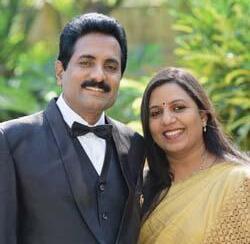
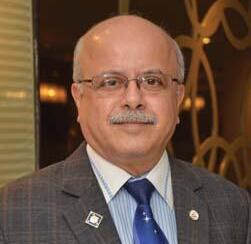
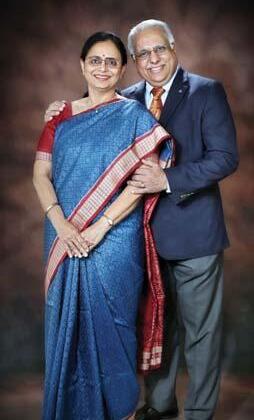
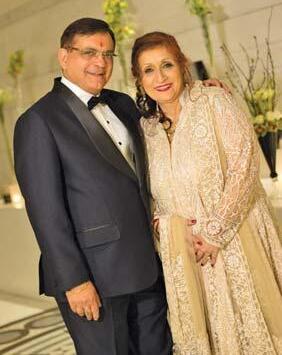
Revathi Suresh
The Akshara Foundation, a Bengalurubased NGO, has been working in the field of children’s education for over 15 years. Over the years, they have developed high-quality learning and teaching aids for Math and English that are used in thousands of government schools in Karnataka.
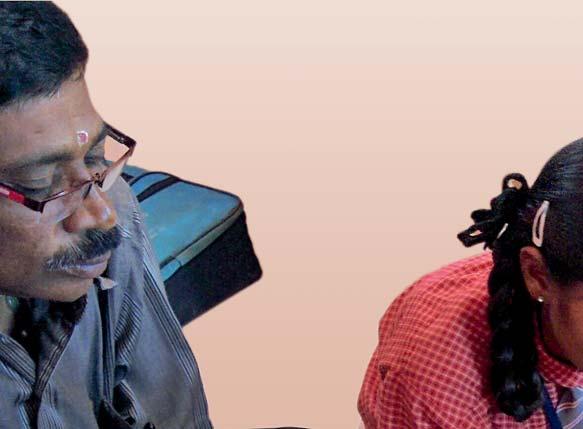
I visited the Government Higher Primary School in Tavarekere, Hoskote taluk, just outside Bengaluru, to witness the Akshara
Math programme at work. My focus was on Classes 4 and 5. Children demonstrated their familiarity with subtraction and addition with use of the abacus. They were not only familiar with fraction strips, geo board, clock, play money notes, measuring tape and many other such learning materials, but were also eager to participate in the class. Their teachers Subramani and Rashmi extolled the virtues of the Akshara Math kits. “They have made our jobs much easier,” said
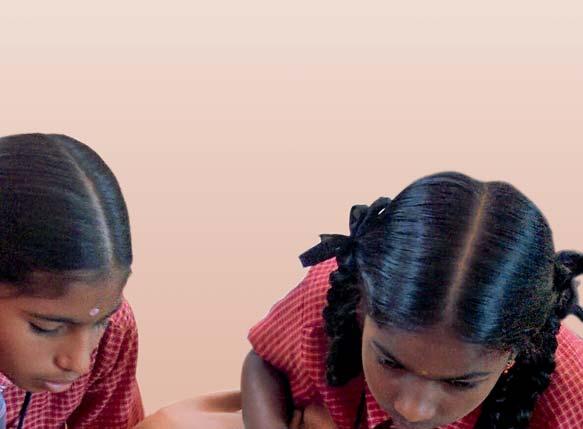
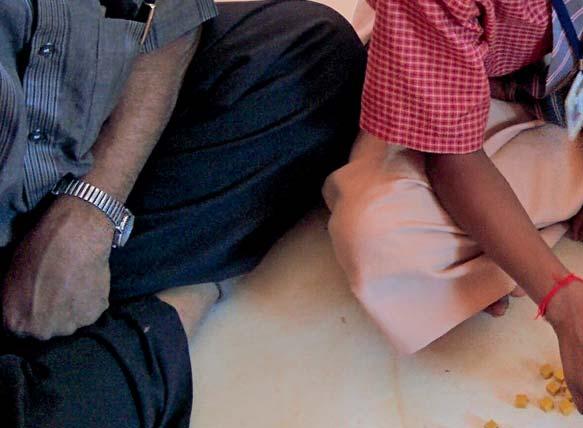
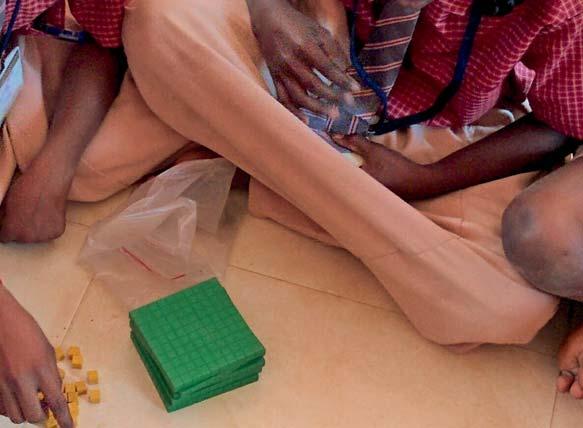
No more math-phobia for these children who experiment arithmetical operations with the Akshara Math programme.
Rashmi, who teaches Classes 6 and 7. “Earlier we would struggle to explain simple concepts to many of them, but now they are enthusiastic. These material are colourful and are like toys. Children like to feel and touch and actually see for themselves how they can get the right answer….They don’t have to simply imagine.”
Subramani, the Class 5 teacher, concurred: “Slow learners have picked up. It is showing in their report cards and parents are happy. Also, because they work in groups, a lot of peer learning happens. They observe how the others use the material and learn much faster.”
I sought a demonstration. Little Nithyashree from Class 4 was promptly summoned and she showed me how she does addition with carrying over. “Not too long ago she used to
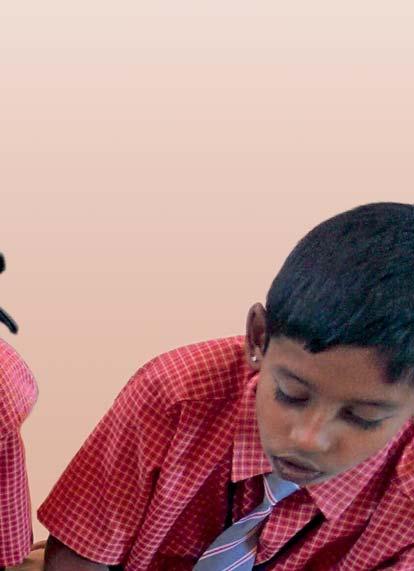
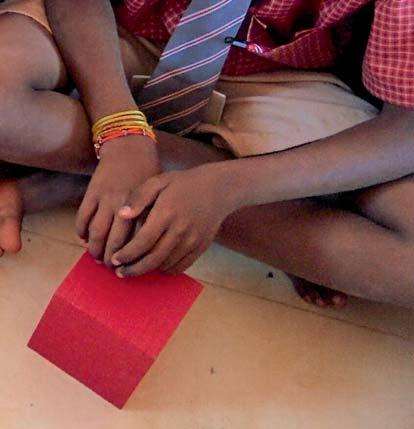
struggle with the concept of numbers,” her teacher said, warmly applauding her effort. “Do you like Math?” I asked the child and she nodded seriously. “Why do you like this abacus?” I persisted. She thought about it for a bit before she declared. “It’s nice.”
The Akshara Foundation is in the process of expanding its reach to cover more districts in Karnataka. Excerpts from the interview with Ashok Kamath, Managing Trustee and Chairman of the Foundation:
In the time since its inception, what have been Akshara’s greatest challenges?
The State or the community or (ideally) both should take ownership of the programme during the later part of the implementation phase. Ensuring that these three requirements happen has been our greatest challenge.
Scaling up has been a challenge for Akshara. Because of the increased number of schools and children, the monitoring process had to be streamlined. For example, we felt the need for a process for monitoring the roll-out of Ganitha Kalika Andolana (GKA) — that aims to revolutionise the teaching of basic Math — on a continuous basis to help us identify weak areas. In 2015–16, we tried an IVRS-based solution and found deficiencies: call cost was too expensive on a per call basis; calls would drop in the middle of the response, making calls invalid. And there were too many questions in the application. The State Government too was not comfortable with IVRS.
So based on both the State and our needs, we have now come up with a new and improved SMS-based process with fewer questions. To ensure sustainability of our programmes, we have to make sure that all our stakeholders like parents, community, teachers etc are involved concurrently in the process of education.
Finally, the programmes should be simple enough for replication in any
These materials are colourful and are like toys. Children like to feel and touch and actually see for themselves how they can get the right answer.
region, right from the curriculum stage to the training modules.
What kind of teacher training programmes does Akshara conduct?
Teachers learn to use the TLM effectively through a face-to-face training programme. Training is done using a cascade method that ensures sustainability. In programmes that have gone to scale such as GKA, the training is backed by video modules which are available to teachers via our website and through DVDs.
How do you keep track of the various schools and learning centres that have adopted the Akshara model?
Technology-based assessment— learning outcomes are evaluated through the use of an in-house Android app. By equipping our field team with the app installed on electronic tablets, we are able to test children every month in the whole district. Children are randomly selected in a class and given the tab to individually solve a set of questions.
We use an SMS-based process to monitor efficiency, and monitor whether the programme is happening in the schools as scheduled, the teachers have been adequately trained, and so on. This process helps provide onsite support for the teachers and
helps us identify their weak spots and build on their strengths.
The research and evaluation team checks the effectiveness of programmes through careful scrutiny. The Karnataka Learning Partnership is another major framework through which the efficacy of different variables in Akshara’s programmes is being tracked.
What is the goal of the Karnataka Learning Partnership (KLP)?
The Karnataka Learning Partnership was set up by Akshara in 2006 to improve the quality of education. It seeks to leverage the work of each education-based or linked organisation
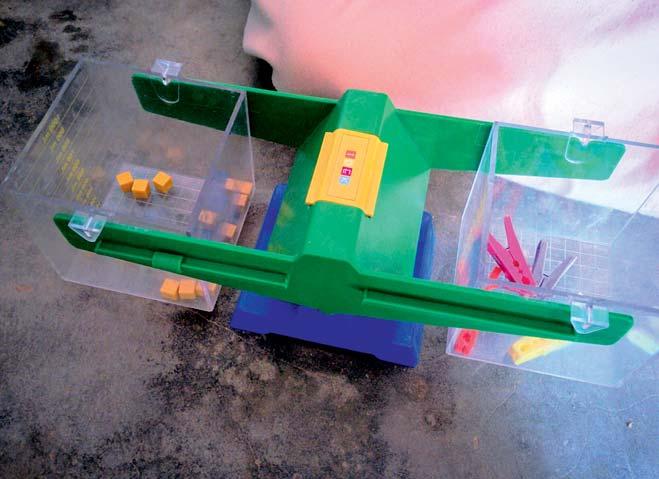

in ways that drive collective, rather than individual and isolated impact. KLP brings together the efforts of its partners, who work in education, health, nutrition and allied areas, and provides comprehensive data on a single platform.
How do you source books for the classroom libraries?
Books of all kinds and genres in languages like English, Kannada, Tamil, Telugu, and Urdu are sourced from reputed publishers of children’s literature.
Teaching and learning methodologies keep evolving. What has changed in the last 15 years?
Our target constituency is the bottom of the pyramid — children studying in government schools in rural communities. One of the key things we have done is use Activity Based Learning (ABL) as opposed to rote learning method. For example, our innovative GKA makes mathematics a fun subject rather than the rote learning, boring subject that it can be. There is a math kit which is used to teach children which moves from concrete to representational to abstract (CRA).
Rasheeda Bhagat
As many as five people have been given a new lease or a better quality of life thanks to the courageous, even though heartbreaking and painful decision taken by Rotarian Puneet Mahajan from RC Shimla, D 3080, and his wife Dr Shivani to donate the organs of their 13-year-old son Shashwat.

Shashwat
Mahajan, who was the Shimla District under-15 champion in table tennis, was declared brain dead in January after a short illness. Dr Mahajan, a general surgeon and Professor in Surgery at the Indira Gandhi Medical College Hospital in Shimla, says young Shashwat, along with this mother, had gone to Jammu to spend his winter vacation with his grandparents.


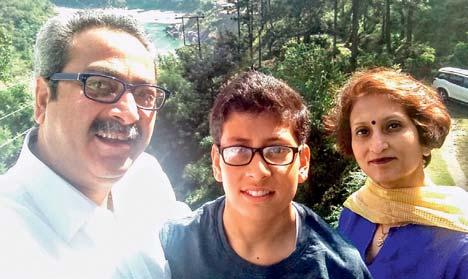

“It all happened very fast. On January 11, he complained of some symptoms, particularly pain in the neck, which suggested a brain infection or some brain-related problem. I asked them to shift him immediately to PGI, Chandigarh.”
He adds that retrospectively, they now realise that he had complained of a slight headache and fever two weeks earlier. He was given some medicines and was alright after that. “I also started from Shimla for Chandigarh, but as he was being shifted, he got a seizure for which he was treated and it subsided.”
At the PGI, the doctors pulled out pus from young Shashwat’s brain through a needle. He then had to be put on a ventilator from which he could not come out. Five days later, as he was declared brain dead, Shashwat’s parents decided to donate his organs; both his kidneys and eyes, as well as his liver were donated, and five patients at the PGI in Chandigarh have benefited from this admirable decision of his parents.
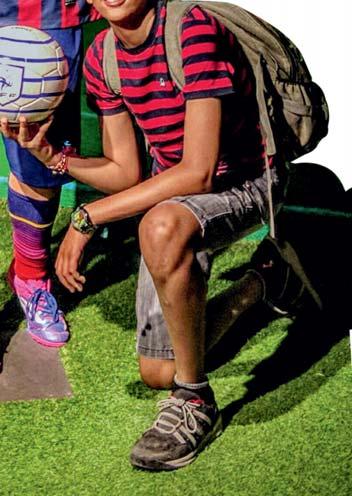
The Mahajans have an older daughter who is doing an engineering course in Chennai.
“Shashwat was very fond of watching football, and had also bagged the best all-rounder award in his school from Class 5 to 8,” added Dr Mahajan.
Rasheeda Bhagat
The District Conference of D 3080 came alive with the Kargil war hero
General V P Malik not mincing his words about the need to uphold values and ethics in an era where politicians ruled the roost.
We are all professionals here… after all Rotary is full of professionals and I’d like to talk about how professionals have to deal with politicians because there is so much of politics in our lives today,” Gen V P Malik said while presiding over a session of Sadbhawana, the District Conference of D 3080, where Shreyas Awards were given to three top professionals — Renana Jhabwala of SEWA, columnist Jug Suraiya and cricketer Chetan Sharma.
Thanks to the media, “today we are getting to know more and more about politicians than professionals. About 90 per cent of the content of newspapers and
news channels comprises politics. “They talk about a political event day after day after day, as has been happening recently with Tamil Nadu. And the result is that the professionals are getting left behind and their stature is diminishing.” He was grateful to RID 3080 for recognising these three outstanding professionals for their contribution to society.
Going down memory lane, Gen Malik shared some of his experiences with politicians. Just a few days before his appointment as Army Chief, the then Defence Minister had called him and said you are going to be appointed Army Chief, and asked him: ‘Do you believe in democracy?’
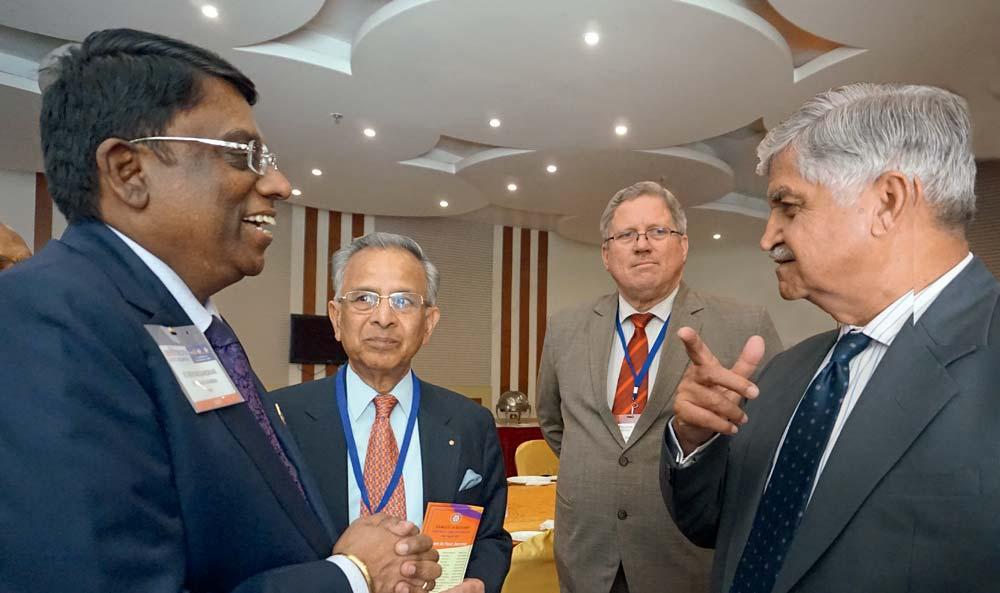
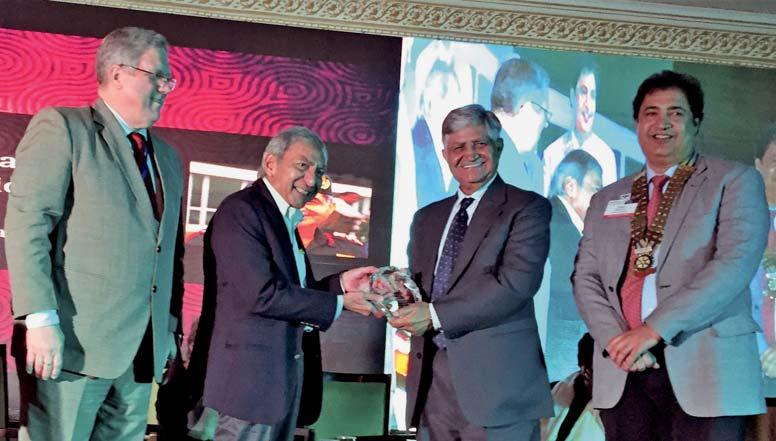
“This came as a total surprise to me and I said why are you asking me this question. I have grown up in Indian democracy, sworn by the Constitution of India when I was commissioned, so I find this question odd.” The Minister explained to him that he was after all a neta and “when we have to get work done, we will pass it to you.” When asked to spell out the “work” he said: “postings and promotions for which I will send you messages.”
Gen Malik said he found this rather odd as only a few days earlier he had told the media there was too much of interference in the Army promotions which he was not going to permit. “So I told the Minister: ‘Sir, if I get appointed, my job will be to serve the country first, next the organisation and as I’ve learnt in the Indian Military Academy, think about myself only next. So if you ask me to do something that is in the interest of the country, or the organisation I will do it, but if it is not in the interest of both, but only you and I, I won’t do it.’ So this is the kind of interaction that takes place between professionals and the politicians!”
I told the Prime Minister I don’t do any netagiri, I am a soldier and I have to speak the truth. If I had said anything different, my soldiers would have looked at me with suspicion and wondered why is he indulging in double talk.
General V P Malik
General V P Malik presents the Shreyas Award to columnist Jug Suraiya, in the presence of DG Raman Aneja (right) and IPDG David Hilton.
Sharing another significant moment, Gen Malik said that just before the Kargil war, when the firing had started on the LoC, “one day, the Prime Minister told me, General saab, yeh firing bandh karaiye. (Please stop the firing.) I asked him, are you serious? When we post the men on the border along the LoC, it is to fire back when somebody fires at them or to stop the infiltration. Under those circumstances I am not in a position to ask them to stop. If you want no firing to take place, I am afraid we will have to withdraw our troops from the LoC.”
That was a professional answer, which was accepted and the PM didn’t say anything after that.
Another interesting incident pertained to the Army being short of weapons during the Kargil war; “everybody knew it, and at a press conference during the war, one journalist asked me it is well known the Indian Army is short of weapons and equipment, so how are you going to fight this war. And I said we shall fight with whatever we have.”
The media made much noise about it saying the Army Chief admits shortage of weapons. After a few days, the Prime Minister asked him: “General saab, woh baat aapko kehni chahiye thi?” (Should you have said such a thing). I said that was the truth. I don’t do any netagiri, I am a soldier and I have to speak the truth. If I had said anything different, my soldiers would have looked at me with suspicion and wondered why is he indulging in double talk. And they would not have obeyed my orders. So what I said was correct, I couldn’t have said anything else. That went home and after that nobody said anything more about it!”
I accept this award in the name of millions of women who work as domestic labour in our homes, street vendors, farms, etc. They don’t need charity but dignity, respect and recognition
Renana Jhabwala
He said he was recalling all this “because today when there is so much politics in our lives, the professionals have to stand up and follow their professional dharma…. which is that all the principles and righteousness that you have learned in your profession must come first in the good of the country. We do not have to beg or turn sycophants. We must do what we believe in and what we have learnt.”
Gen Malik urged all professionals to follow the six principles he had always followed in his life.
Is my action within or outside the law?
Am I working honestly without prejudice of any kind?
Will my work be appreciated today, tomorrow, and thereafter?
How will my action appear to the media? Because the media believes in, or will speak the truth sooner or later.
If any child asks me about my action, will I be able to speak the truth and convince him?
Last, will I be able to sleep well tonight with satisfaction of having spent a good day?
DG Raman Aneja presents a memento to Rotary News
Editor Rasheeda Bhagat, in the presence of Usha Saboo, Manju Das, Vasanthi Theenachandran and Meenu Aneja, following a session on the importance of spouses in Rotary.
Jhabwala, National Coordinator and Chairperson of SEWA (Self Employed Women’s Association), was given the Shreyas Award for “her untiring work with self-employed women of India”. Educated at the Harvard University where she did an additional degree in maths, and later Yale, where she did a PG course in Economics, she has worked for decades in organising women in the informal sector. A Padmashri, she has worked intensively with beedi workers, agricultural labourers, garment workers and street workers to bargain for them higher income and better working conditions.
Accepting the award as “a recognition for the millions of women who are invisible to the rest of society… women who we see and yet actually don’t see”, she said these poor and self-employed women worked in homes as domestic labour, as street vendors, in the farms, etc, and through their work they provide a service to society. “Please do recognise that we have millions of these women; they don’t need charity but dignity, respect and recognition.”
Columnist Jug Suraiya, who was described by Khushwant Singh as “our own Art Buchwald”, was given the award as he has “become a part and parcel of our lives through his column, and for his unforgiving wit and humour and prolific contribution to India journalism”, said the citation.
Accepting the award, the columnist, in his typical satirical vein said, “When I am asked what do you do for a living, my reply tends to be: ‘As little as possible.’”
Striking a serious note, he said, “One of the most common and dangerous traps a writer, columnist or journalist can fall into is believing that he or she is an important person. No writer is an important person. The
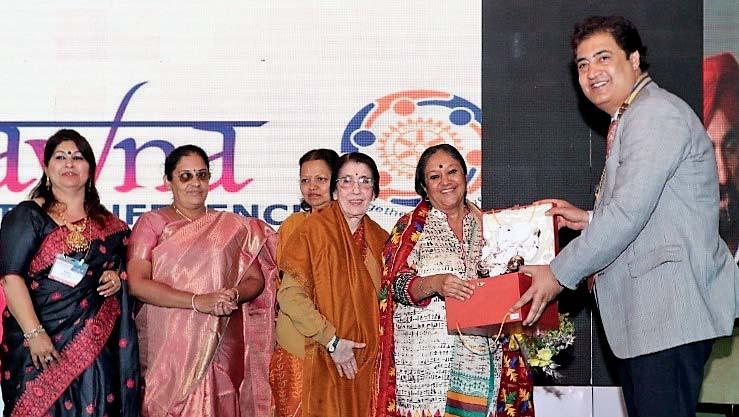

only important person is the reader. Because without the reader, the writer is nothing, a nobody.”
Accepting the award, Chetan Sharma thanked DG Raman Aneja for honouring him and said, “for a sportsman, there is no higher award than recognition and respect”. He added that he as a kid used to go to school on a bicycle and would have remained a nobody but for cricket and the State of Haryana giving him encouragement.
the DisCon, Haryana Governor K S Solanki commended the work done by Rotarians in going beyond themselves and serving the community. Rotary’s contribution to making India polio-free would never be forgotten, he said.
Giving the background of the Shreyas Awards, PRIP Rajendra Saboo said the objectives of Rotary are high ethical standards in business and profession, opportunity for service, reaching out to the community,
A dangerous trap a writer, columnist or journalist can fall into is believing that he or she is an important person. No writer is important; the only important person is the reader. Without the reader, the writer is nothing, a nobody.
Jug
Suraiya
mobilising youth energy, etc. “We also felt we need to recognise those people who have excelled in their professions to enrich society and community… the name Shreyas was chosen as those being awarded were the topmost professionals in their field; “after all there can be nothing above Shreyas.”
PRID Yashpal Das presided over the session and introduced the awardees.
RIPR R Theenachandran said Rotary and Rotarians were doing amazing work in changing lives. Whether it was malnourishment, disease, unemployment, poverty, and other kinds of distress, Rotarians across the world were engaged in chipping away at these day after day. Peace would come to this conflict-ridden world only after all these evils were eliminated, he said.
Usha Saboo, spouse of PRIP Raja Saboo presided over a special session that discussed the importance of Rotarian spouses and how they could add value to Rotary.
Addressing the conference DG Raman Aneja said this being the Centennial of TRF, his goal was to collect $1 million from D 3080, and he felt this was not a steep target. Some of the highlights of his year were a medical mission to Gabon in Africa, Morena in Madhya Pradesh; two more medical missions will be done in Himachal Pradesh and one is planned in Mongolia in May.
Aneja added that the District has already completed 32 schools at Rudraprayag and an eye hospital at Panipat. The global grants, which include 36 Happy Schools, is under completion. On February 17, two more global grants have come and with these 19 Happy Schools, 120 e-learning centres, one computer centre, a dental van and an ICU ambulance would be set up. The District was going to do a big organ transplant project with the Post Graduate Institute of Medical Sciences in Chandigarh.
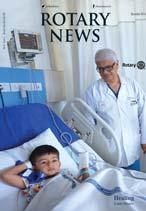
Please pay your Rotary News Dues at the earliest to enjoy uninterrupted supply. Please note that Rotary News subscription is mandatory and defaulting clubs can be suspended by RI.
List of defaulting clubs and the club dues details on our website www. rotarynewsonline.org
Rotary at a glance
Rotarians : 12,24,260
Clubs : 35,404
Districts : 534
Rotaractors : 2,28,091*
Clubs : 9,917*
Interactors : 4,85,944*
Clubs : 21,128*
RCC members: 2,13,578*
RCC : 9,286*
* As on January 2, 2017
*Non-districted
Rotary Coordinators (RCs) offer support and know-how to boost your club membership and keep members engaged. An account from the RCs of Zones 4, 5 and 6A:
Over the last few decades, membership has always been a concern, as our worldwide figure has never seen a quantum jump beyond 1.2 million. After several deliberations by the RI Board on the subject of Membership Growth, retention and diversity in age/gender have been highlighted. Our country has in last couple of years shown some major changes in this area. Although retention has been a major concern, we have still managed to retain over 60 percent, an improvement over the earlier years.
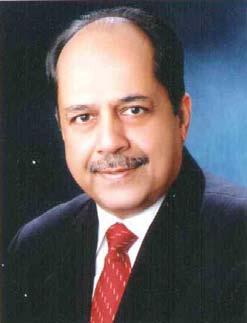
India has been one of the fastest growing regions in the RI world and in the last few years we have been ranking No 1 as a country and even Zonewise, 4, 5 & 6A have been constantly doing very well, continuing to hold the place of pride in overall membership growth.
The strategy and focus in our Zones consists of the following:
We have grown very well in women members. We have around 14 per cent women members, compared to 5–7
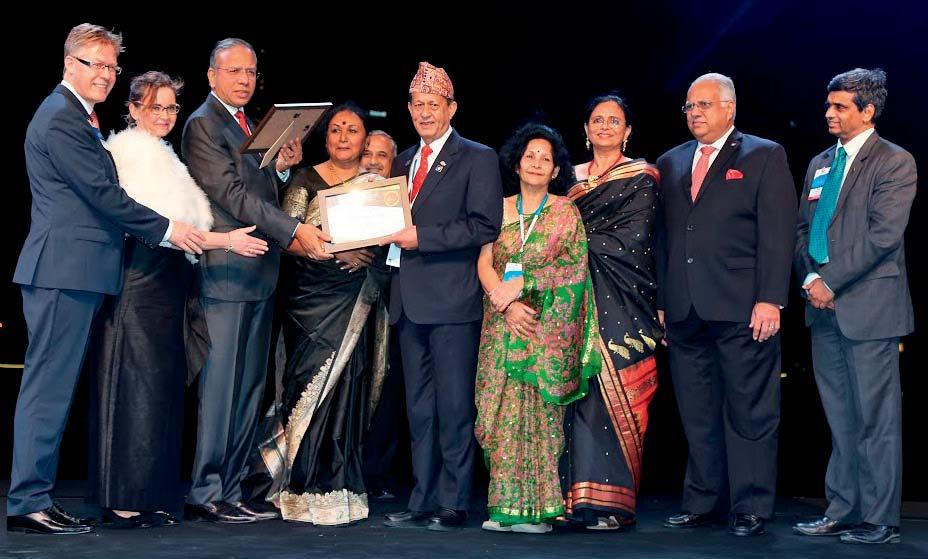
per cent just a few years ago. Besides, in some parts of our country, women joining Rotary is a paradigm shift and to get over this, we have encouraged all-women-member clubs and are also encouraging clubs to induct at least 4–5 women members together in allmale-member clubs.
Despite this, only 67 per cent clubs in Zone 4, and 77 per cent of clubs in Zone 6 have women members.
Younger members have in past stayed away from Rotary for two reasons; one, they felt a little out of place in a club that predominantly had members over 60. We encouraged club members to induct at least 4–5 new young members at a time to get the club average down. We requested existing members to encourage/motivate their children to join Rotary.
All past Rotaract member clubs have now been formed in some Districts.
We have also seen some clubs with all the members below 40 years being chartered in a few Districts. This has given a major boost to the growth in younger members becoming Rotarians; they currently form 11 per cent of our total membership.
We have been promoting the concept of a vibrant club which distinguishes itself by the projects they do, such as watershed projects, running high quality educational
institutions, good hospitals, providing clean drinking water to a large section of the community. Such projects have brought tremendous visibility and create great public image.
Vibrant clubs have no difficulty in getting members. They are defined by the quality of the meetings they conduct, distinguished speakers they get, good venue, good time management, high fiscal discipline, high quality club service, etc. The memberships of such vibrant clubs also go through very rigid steps of induction prescribed by MOP and thus ensure retention. There are several such clubs in every District across the country and these become an example for others to emulate.
We have also encouraged Districts to hold new members-seminars under RI’s Regional membership programme. These seminars, which showcase Rotary’s good work to new members, and bring some distinguished persons from the community who are Rotarians, to share their Rotary experience, motivates new members.
There is a growing realisation among Rotarians that we need more hands to work, more young minds to innovate new project ideas, more resources to deploy and more woman members to infuse variety and greater diversity…
Rajendra Rai
Goal setting by DGs along with DMCs before the Rotary year begins, has been paying rich dividends. Two Districts — 3132 and 3292 — have already crossed the targets and three other districts show negative growth.
I am happy to say my experience as a Rotary Co-ordinator since 2014 has been enriching and given me lot of insight into the working of Rotary clubs across India and Nepal.
Goal setting by DGs along with DMCs before the Rotary year begins, has been paying rich dividends.
Vijay Jalan
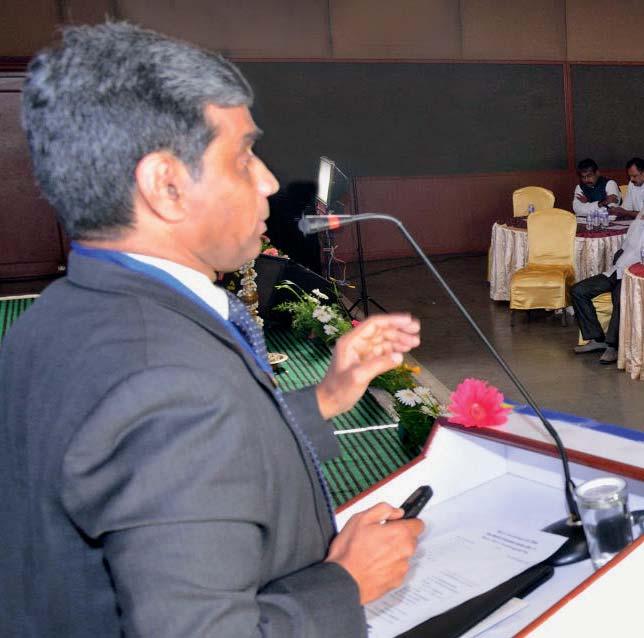
When RID Manoj Desai
entrusted me with the responsibility of Rotary Coordinator of Zone 5, I knew I was stepping into the big shoes of RIDE C Basker, who as RC, had taken the Zone to the top of the world in Membership growth in 2014–15.
Well before the Rotary year commenced we had a goal setting meeting in Hyderabad in April with the Governors-elect setting an ambitious target for introduction of around 9,000 new members including 1,455 women, followed by a Zonal Membership Seminar at Bengaluru in June where we involved the District Membership Chairs (DMCs) to reinforce the goals the DGEs had set for themselves.
As an RC, I have so far had the opportunity to participate in the membership seminars and New Member orientation programmes of nine districts. There is a growing realisation amongst Rotarians that we need more hands to work, more young minds to innovate new project
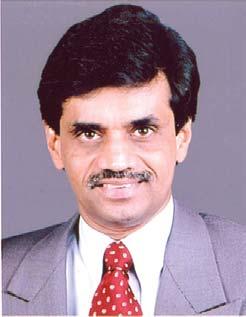
ideas, more resources to deploy and more woman members to infuse variety and greater diversity for Rotary to provide meaningful service to our communities.
As of February 1, the net membership growth for Zone 5 has seen an increase of 3,648 new members despite the fact that nearly eight clubs
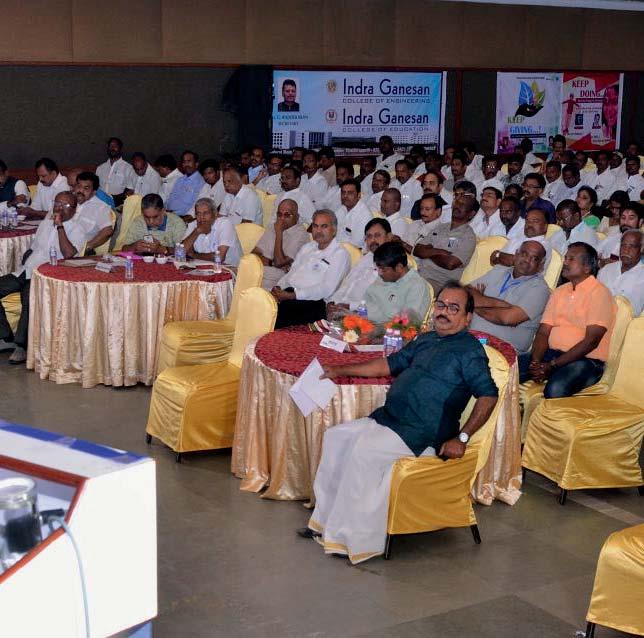
(mostly the newly formed clubs of the previous years) were de-chartered for nonpayment of Semi Annual dues within the stipulated time. We also had a healthy increase of around 490 women members in the first seven months of this Rotary year.
RI District 3230, under DG Natarajan Nagoji, has done remarkably well with a net increase of 900 members followed by D 3000 led by DG Muruganandam with a net increase of 568 members. Newly formed Districts, ID 3181 and 3182, culled out of D 3180 have together added around 749 members, which is indeed noteworthy.
As the Zone’s performance is only around a third of the goals set by the Governors, much needs to be done in the second half. We need to scale up our efforts to ensure growth both, in numbers and quality. The DGs have been asked to identify localities/communities where there are no Rotary clubs and motivate them to start new Rotary clubs. Gated communities, condominiums and large apartment blocks in the cities and bigger towns are other potential areas to be focused on.
To communicate with the DGs and the District membership chairs effectively, I have brought out three quarterly issues of my newsletter — Rotary+ — covering articles on topics such as Rotary Alumni, Women in Rotary, the use of online tools to attract members, Regional Membership Plan, Model clubs etc, and featured messages from world leaders including RI President John Germ, TRF Trustee Chair Kalyan Banerjee, IPRIP K R Ravindran, PRIPs Rajendra Saboo and Gary Huang.
I am confident that the ‘Smiling Sheriffs’, the DGs in our Zone will not disappoint our Director Manoj Desai. Having come back immensely charged by the spirit of the Dubai Institute and its tagline “Nothing is Impossible”, I am sure they will bounce back not only to achieve but exceed the goals set for themselves.
Prem Bhalla


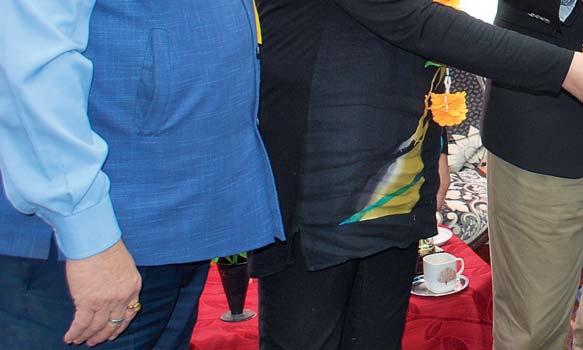
PIan Riseley, then RIPN, and Juliet hand over a school to the School Management Committee in the presence of then DG David Hilton and
Ian then RIPN, and Juliet hand over a school to th t e Schoool Man a agemmen e t Co C mmmititteee e in the preessencce e of f then n DG Daavvid id Hilltoon n annd PDG G P Preem m Bhhalllaa.
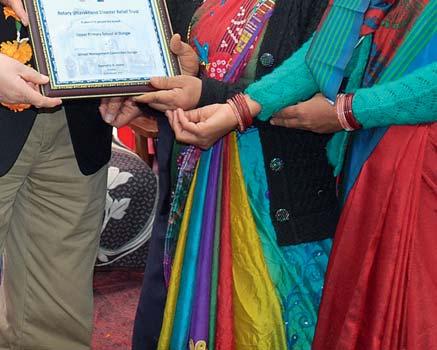

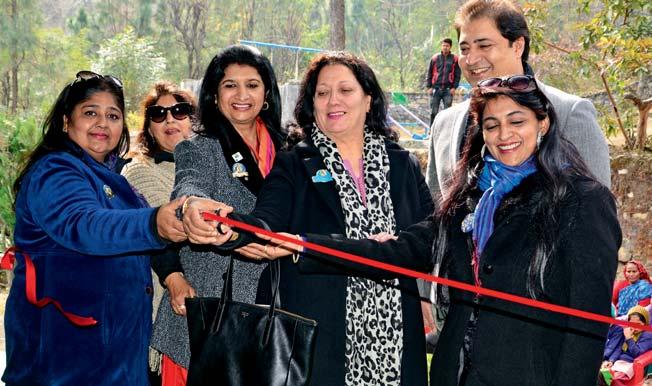
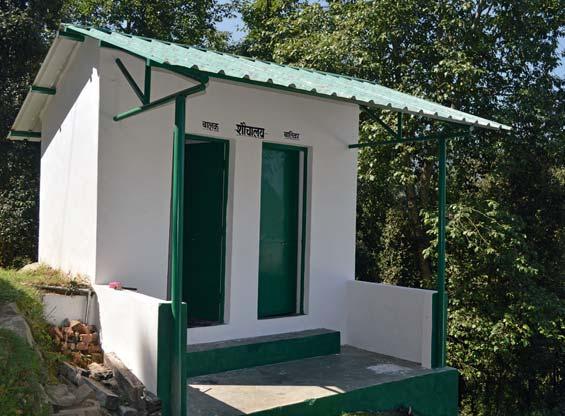
(The writer is Past District Governor of RI District 3080)
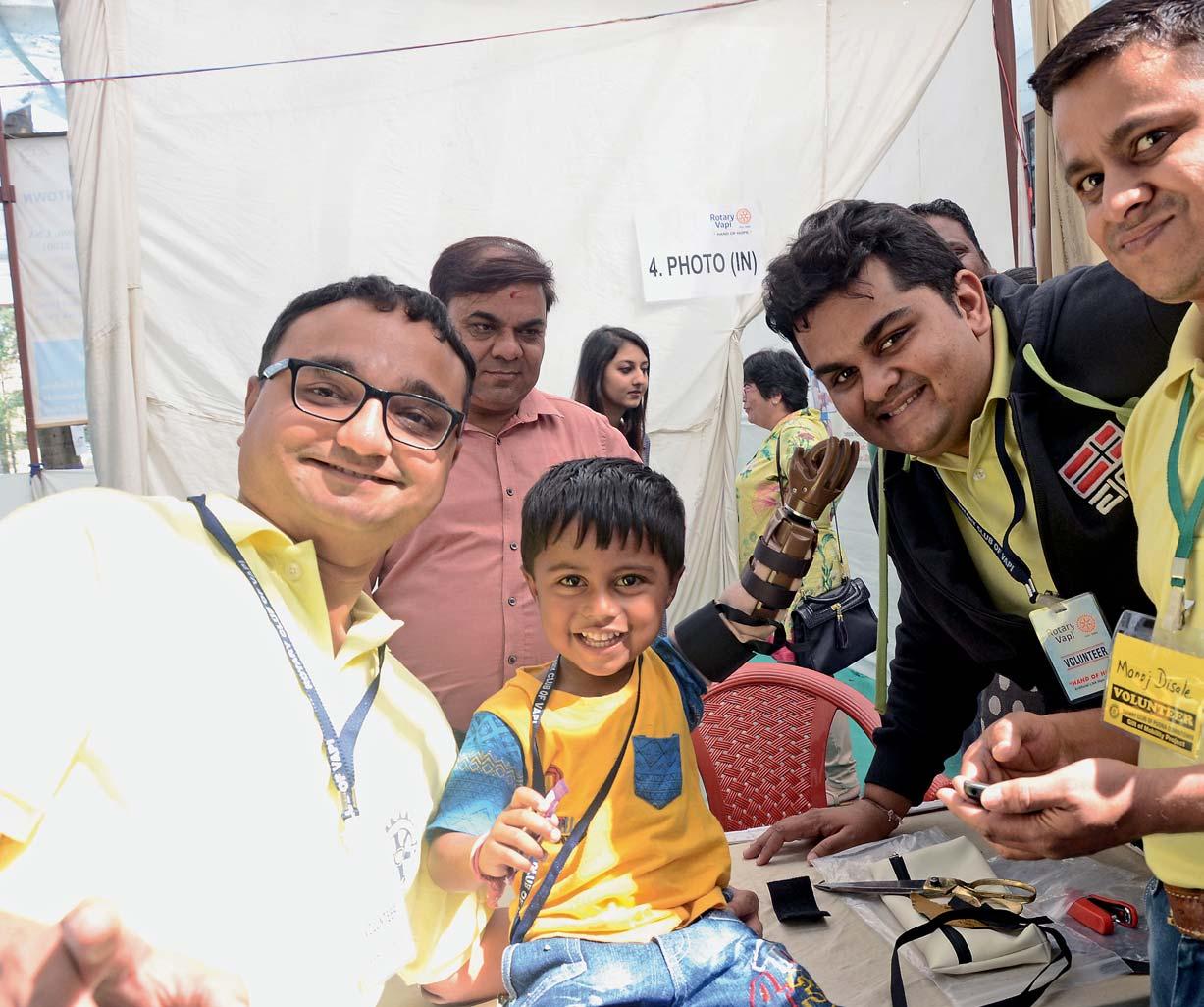
The home club of TRF Trustee Chair Kalyan Banerjee, Rotary Club of Vapi, District 3060, commemorated the Foundation’s Centennial Year by providing prosthetic hands for 177 people across Gujarat, Rajasthan, Madhya Pradesh and Maharashtra.
It was a significant moment for Dinesh Khatri of Mehsana to see his five-year-old son Vijay “eat food, play ball, and hold the steering handle of his little cycle on his own.
It’s a new life for him and a miracle in our life. A big salute to your team.” The child had lost both his hands a year ago, when he accidentally touched a 11,000-volt live wire. The camp examined 17 children under 12, and the prosthetic hands fitted at the prime age of their life is a gift of life for them. It was an emotionally charged atmosphere at the fitment camp as beneficiaries experimented their ‘new hand’ to do simple chores for which they had to be helped by others earlier.
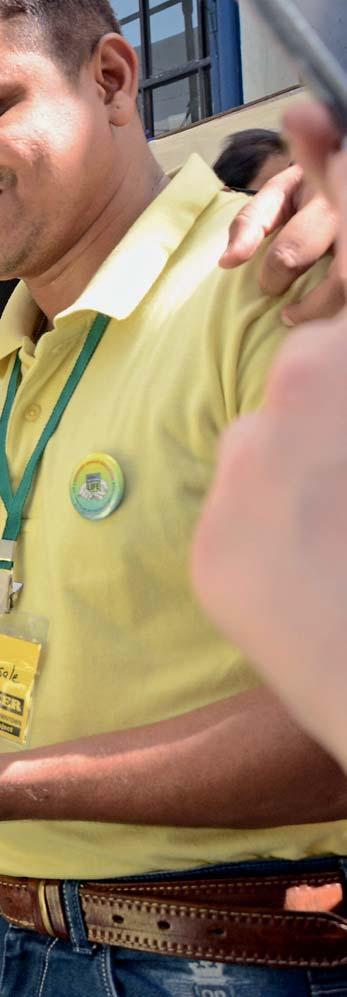
“Initially as we planned this camp four months ago, though we understood its impact on the recipients, little were we prepared for the excitement and emotions of the beneficiaries and their caretakers. Their eyes, lit up with hope as they got the prosthetics fitted, and their expression said it all. We won't forget this for a long time,” said Ketan Patel, the club’s vice president.
This was the first such camp implemented by the club with mentoring from RC Poona Downtown, D 3131. The hands were sourced from Ellen Meadows Prosthetic Hand Foundation of the US and routed through RC Bangalore Peenya, D 3190, with whom they have a tie-up. The two-day camp worked
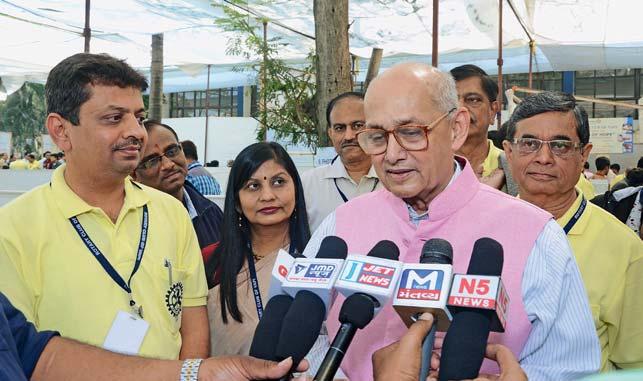
Here is a special message from TRF Trustee Chair Kalyan Banerjee to his club:
Providing hands is one of Rotary’s most rewarding projects. I like to tell the story of a small European town in the Swiss Alps during the Second World War. The Germans bombed the town and the statue of Jesus Christ in the town’s church was broken badly. After the raid, the people of the town collected the pieces of the statue and put it together. Every
broken piece was found and joined except the two hands of Jesus Christ. The town’s people continued to look for the missing pieces till one day they found someone had put up a sign in front of the statue which read: "I have no hands but yours."
Hands to the armless, is more than a project, much more than giving relief and hope. It is like giving a new life altogether. Those without hands have no hands but yours.
God Bless.
out to Rs 3.5 lakh. The Rotarians had arranged boarding and lodging for the beneficiaries and trained them to use the prosthetics.
Hands to the armless, is more than a project, much more than giving relief and hope. It is like giving a new life altogether.
Kalyan Banerjee
“The priceless combination of tears and smiles on the faces of the beneficiaries and their families cannot be replaced by any other recognition or awards. It can only be felt, not explained,” said Project Chair Sanjay Desai.
“It was a dream project that consumed my sleep and waking hours since the day I was elected to lead my club. I am happy my team has made a difference to so many people,” said Club President Harish Kothari. DGN Pinky Patel was also present.
Firefighters rescue a man from a fire accident at the AMRI Hospital, Kolkata.

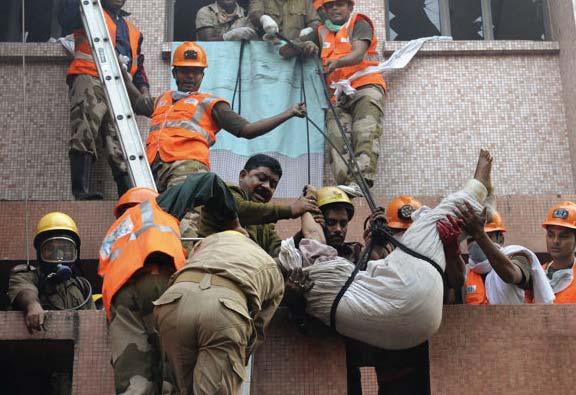
Aflight of rickety wooden stairs leads to an open verandah where a sexagenarian is busy locking the doors of his room in Central Kolkata. A fire has broken out in the northern part of the city and he is rushing against time to attend the call of duty.
Draped in his uniform, the lanky man could easily be mistaken as one of the firefighters of the fire and emergency service department of West Bengal. But he is not one.
Meet Bipin Ganatra who is famously described as the ‘fireman’ of Kolkata, the sobriquet that has been bestowed upon him because he has rendered voluntary services in extinguishing flames and rescuing trapped people in over 200 fires that has occurred in the city in the past five decades. And
this Republic Day, Ganatra was conferred the Padma Shri by the President of India for rescuing people from fire-related accidents.
His expertise and bravery in reaching even the most dangerous nook and corners of the fire ravaged buildings have put young firefighters to shame.
Ganatra, a bachelor, says that his affair with fire has been his passion since childhood. He remembers when he ran from school to assist the firefighters in a fire that had broken out in the neighbourhood. “It was just a usual day for me when suddenly I heard the clanging bells of the fire engines passing from a lane outside my school. It was lunch time and I managed to skip the watchful eyes of the guard to reach a building that was
engulfed in flames. I helped the officials to lay the pipes. It was my first romance with fire, and the intensity has not reduced a bit in these years,” he says sitting in his dingy room that immediately need repairs.
Over the years, his experience has come handy in quickly extinguishing several major fires across the city. He was among the first to reach when the Stephen Court building in Park Street, off South Kolkata, was engulfed in flames that killed over 40 people in 2010. He played an active role in rescuing people during the AMRI Hospital fire in 2011 that claimed around 90 persons.
The fireman still shudders to recollect the skeletons he picked up during the rescue operations, “I stood motionless seeing human bones lying in front of me after extinguishing the flames. The sight was horrific. I collected the bones in a polythene bag and handed them over to firemen.”

The 60-year-old who works as an electrical mechanic and earns around Rs 3,000 a month, also depends on charity to sustain his livelihood. “I had a bypass surgery in the early '90s and need medicines. My friends and some people, aware of my good deeds, donate some money that helps me to survive,” he says over a cup of coffee.
Impressed by his devotion, the fire department gifted him with a uniform along with a rare volunteer’s steel ID card which he wears while going out to work. “Earlier, the fire officials didn’t recognise me and often asked me to stay away from the danger area. It hampered my work. The senior officials came to know about it and gifted me with the uniform and the ID card.”
I stood motionless seeing human bones lying in front of me after extinguishing the flames.
Ganatra has won several awards from the State government and private organisations. West Bengal Chief Minister Mamata Bannerjee felicitated him with a medal for his exemplary work in 2014.
He was offered a job as home guard in the city police department but he declined the offer. “The job would have virtually consumed my whole day making it difficult for me to help people during emergency. My sole aim is to serve the society.”
Such has been his dedication to live for others that he sleeps with his television switched on even during the night hours, “so that I don’t miss any news of a fire in the city. Whenever I hear that a fire has broken out, I immediately hire a taxi and rush to the spot. I have not sought a single penny as travel expense from the fire officials in the past five decades of my service.”
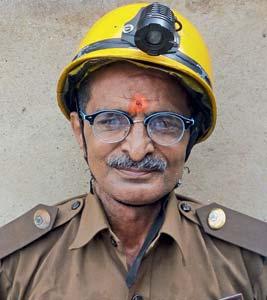
Bipin
His cellphone starts ringing. A caller on the other side informs him about a fire accident in South Kolkata. He gears up to leave his house and rescue the living or the dead. Who knows?
As he sprints down the staircase of his century-old building, the words of Swami Vivekananda ring in the ears, “They alone live who live for others, the rest are more dead than alive.”
V Muthukumaran

Village Sakkimangalam near Madurai sports a new look with 30 new concrete houses lining the lanes, thanks to Rotary clubs of Madurai Central and Madurai Star, District 3000. What makes the project notable is that the new house-owners are visually-challenged.
In 2006, the Tamil Nadu government had allotted housing sites of 600 sqft each to 53 visually-challenged people in this village. While RC Madurai Central constructed 22 houses for these people, the Rotarians of RC Madurai Star have undertaken to build the remaining 31 houses in a phased manner through their Trust. Eight of these houses were completed and the beneficiaries got the keys to their new homes on December 26 last year from former Union Minister P Chidambaram who presided over the house-warming event organised by the club.
Expressing joy and gratitude, Soundaravalli Dhamodharan, a beneficiary, said, “Paying monthly rent was a nightmare. After moving into our own house, we are much relieved. They have also provided power supply. We are looking forward to live in harmony with others in this colony.” While all the houses are fitted with fans and lightings, the local body is now laying water pipelines to each household and street lights are being erected. The approach road and the colony streets are structured by Rotarian engineers. “Owning a home is beyond our dream. It is unfortunate that we are unable to see our benefactors,” said Easwarlal, another resident, adding that the Rotarians have been meeting their regular needs for the last 15 years.
“The construction cost for the eight houses was Rs 23 lakh which we raised from among ourselves, friends and relatives. We plan to hand over the remaining 23 houses to the beneficiaries in two years,” said SL Setumadava, the managing trustee and executive secretary of the club, envisaging an estimate of Rs 65 lakh.
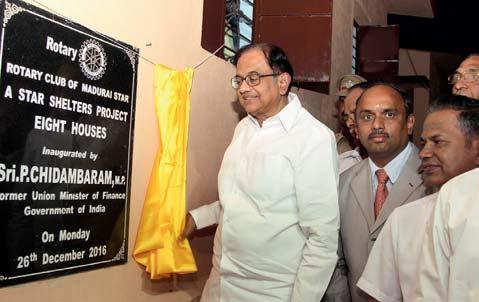
The club is trying to ensure regular income for the families of the visually-impaired who had moved to this colony.
“We have to make arrangements so that sighted and otherwise capable members can be profitably employed,” he said. The club is mulling over vocational training like appalam and dhoop (benzoin resin) making. However, he is quick to add that materials have to be brought to this place and finished goods should be taken out for delivery with a common assembling point which is no easy task.
A mighty thanks to Rtn Murugesan, a contractor, who supervised the construction without monetary gain for the housing project, said DGN RVN Kannan at the inauguration.
While eight Rotarians and their families are behind the housing project, more are willing to donate for the same and the club is all set to adopt this as its signature project. “But we’ll be able to finish it at the earliest, if the project was funded by a Rotary grant,” pointed out Setumadava. “We don’t know how to accommodate this project to fit into one of the focus areas of Rotary International,” he admitted.
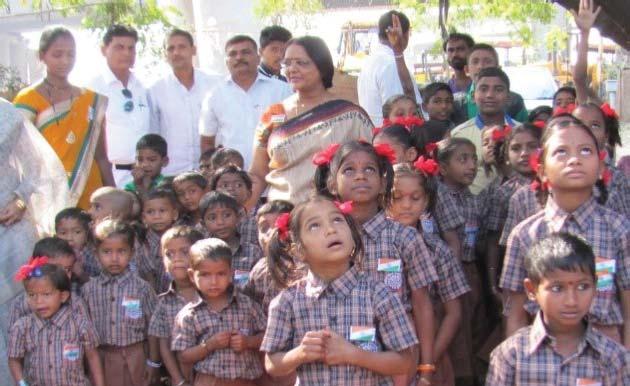
Child learning centres (CLCs) started by RC Navi Mumbai Sunrise, D 3142, are now providing formal education to underprivileged children of Navi Mumbai.
Two CLCs, one at Gholwadi village in Kharghar, and another at Anand Nagar in Turbhe, that were started by the club in August 2015,
utilising a fund-raising programme conducted in partnership with the local NGO Adarsh Seva Bhavi Sanstha, has so far reached out to 71 children who have never been to school before. These projects helped children of migrant workers in Navi Mumbai by setting up community CLCs within the hamlets they live. The club had
“These three days have changed my life; I learnt to speak out and ask questions,” said a 15-year-old tribal boy from Nashik, gleaming with self-confidence. He was speaking at the valedictory function of a RYLA programme conducted by RC Nashik, D 3030, at the Yashwantrao Chavan Maharashtra Open University. Like him, the programme conducted from January 20–22 by the club opened up new avenues for 80 students from three tribal schools.
It included motivational lectures on goal setting, a skill based workshop, assertive communication, motivational games, career opportunities etc. The youngsters were given information on government jobs.
The students were given a peek into farming and agriculture with personnel from the Krushi Vigyan Kendra sharing their knowledge. They were excited to visit a poultry farm unit, polyhouses, a modern irrigation
built special sheds with blackboards, chairs and desks for the children, and also distributed study kits, uniforms and shoes. Apart from this, mid-day meals are being served at these centres. By emphasising on the fun element in learning, the CLCs in these hamlets have helped remove the communities’ mental block in sending their children to school and smoothened the path for their schooling. “Our efforts will reduce the prospects of future dropouts and thereby ensure sustainable education,” believes Rtn Mita Rajaram, one of the initiators of this project.
Last April, the club organised another fund-raising programme to open up four more CLCs in Navi Mumbai. With about 150 child sponsors, the fund was used to start one CLC at Pawane with 20 students and another at Ulwe with 22 students. Well-furnished classrooms were set up in a rented place with blackboard and study charts. The children also got books and other stationery. “We also hope to undertake adult literacy programme for the parents and bring about a holistic development,” adds Mita.
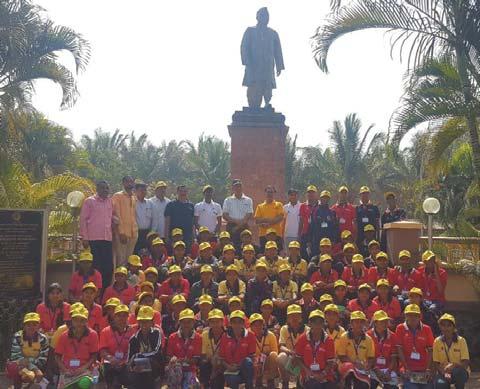
management unit and were given practical lessons on fruit grafting in a horticulture nursery.
Best RYLA girl and boy were awarded trophies at the end of the programme. The club is planning to conduct a similar training programme for tribal teachers too.

Eighteen Rotarians representing 13 districts from eight States, from New Hampshire to Florida, had visited India to take part in the National Polio Immunisation Day and many other Rotary service projects.
Hearing about the interesting work done by Rotary India Literacy Mission on Literacy, they decided to volunteer in one of the RILM’S TEACH component — Happy School. They participated in setting up a library at the Vivekananda Vidyapith for Boys, a school in Kankurgachi, Kolkata.
The team interacted with the students. The school had classes from Grade V only but the children, being first generation students, had not seen or read story books at an early age. The library set up by RILM was therefore equipped with books catering to Classes I to IV to help them explore and catch up on the learning levels. The visiting group of volunteers helped out with the entire setting up of the library, starting from sorting and segregating the books based on the age groups, marking them with stickers for identification and putting them in jackets
and putting them on the shelves for easy access by the students.
Almost 400 books were donated that day. The volunteer group also distributed colour pencils and drawing kits to children and donated $300 to buy more books for the library. This project is to be implemented by RILM with coordination from Rotary Club of Harmony.
Eight Happy Schools at one go Lakshmi (name changed), a student of Class III in a government school of Vijayawada, is super excited to get a bench to sit on. So does the 30-odd
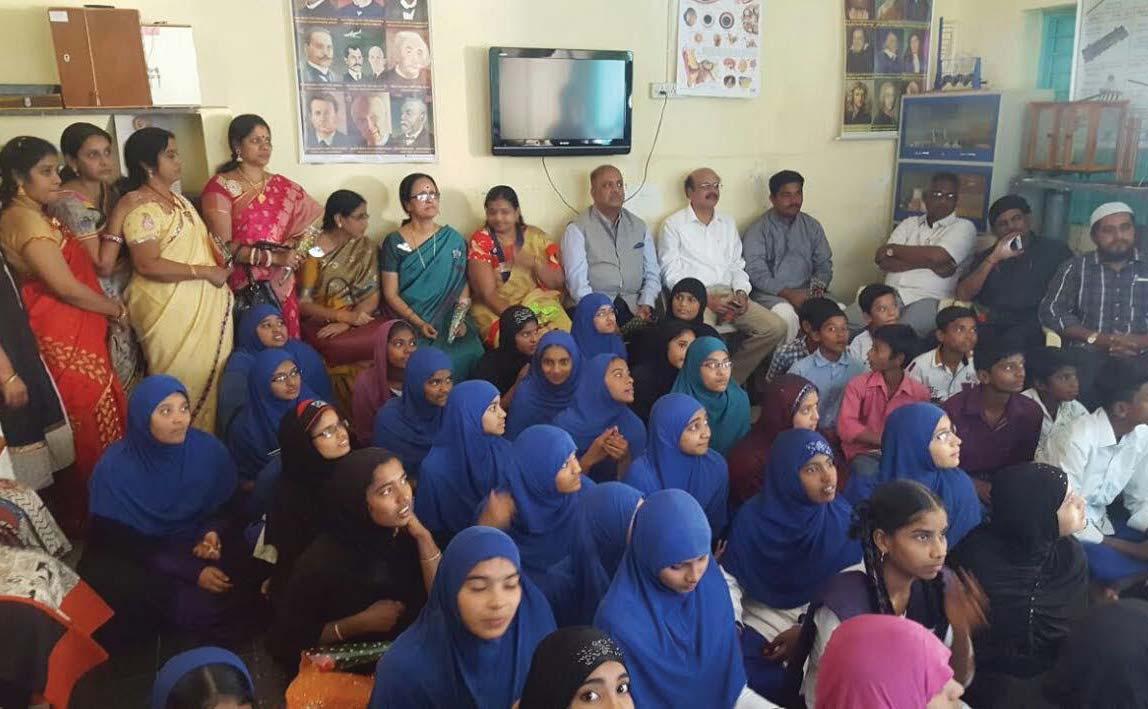
children of the class and the credit goes to the Inner Wheel members who took a great initiative to convert eight government schools into Happy Schools. Babu Jagajeevan Ram Nagara Palaka Pratyeka Patasala, Vijayawada, is one of those schools which got a happy transformation.
The school was not always as good as it is right now. Toilet facilities for students were sorely lacking. Girls especially did not regularly attend class due to poor hygiene conditions at school. There was no safe drinking water or adequate playground for children to exercise. Worse still, open defecation was also practised around the school. These untenable conditions led to a grave increase in the school's dropout rate over time. The school and students had all but given up hope, until a visit by Inner Wheel Clubs of Vijaywada Midtown, Vijaywada East and Eluru, made all the difference.
Under the project the Inner Wheel clubs provided benches and desks, handwash stations and safe drinking water. They renovated the toilets for boys and girls, painted the school buildings and equipped them with sports equipment. They also gifted new uniforms and shoes for the students. Since the Happy School project, a number of positive changes have been seen at Babu Jagajeevan Ram Nagara Palaka Pratyeka Patasala, Vijayawada. Among other things, the number of children enrolment increased and retention went up from 51 per cent to 80 per cent. Now, animated and packed school management committee meetings take place at the school on a regular basis, the teachers are confident and most importantly, the children enjoy coming to school to study and play with their friends.
The Happy School project contributes to the lives of vulnerable children across the country, providing them holistic, quality education and the facilities to thrive. The project
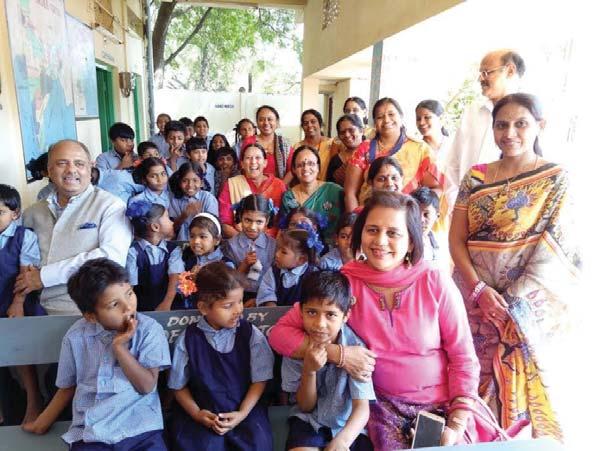
of transforming eight government schools to Happy Schools have benefitted about 740 students. It cost Rs 14.85 lakh to the clubs.
School Survey Campaign — a data pool to leverage fund flow
Rotary India Literacy Mission is in a process to launch a campaign to conduct school survey. Rotary, Inner Wheel and Rotaract clubs are encouraged to conduct survey in at least five schools. This survey is to be conducted in Government/Zilla Parishad/ Municipal schools.
As a result of vigorous CSR campaign, corporates will want to give donations for TEACH. For this they will require the names of the schools. If we start the survey exercise post enquiry generation, it will delay the entire process. It is better that the survey is done in advance and a reservoir of data is created. This survey will also help in their future projects. It will also give the clubs hands-on experience about working with schools at the grassroots level.
The process
1. Visit www.rotaryteach.org and go to the Resources section of the Member Zone and print the R1.1
form (Comprehensive School Survey Form).
2. Identify at least five schools and seek permission from the school authority to conduct the survey.
3. Visit the schools and speak to the school authority and fill up the form.
4. Visit www.rotaryteach.org, go to Member Zone and click on the ‘School Survey’ tab.
5. You will need to sign up as a new user by filling up your first name, last name and valid e-mail id.
6. An e-mail will be send to your e-mail id having your user ID and password. User ID will be the same as your e-mail id.
7. By clicking on the ‘Add School’ option you will be able to fill up the form which will come in five segments.
8. You will be allowed to edit the form until you click on submit which is at the end of the fifth segment.
9. Your form will be successfully saved.
10. To fill up the next form, click on ‘Add School’ again.
11. Please note that you will not be allowed to edit the form once submitted.
KTP Radhika
The Rotarians of RC Nellore, D 3160, have constructed a modern crematorium spread across 2.5 acres of land on the banks of river Penna at Nellore. The crematorium, named as ‘Khailash Bhoomi’, has facilities for lighting six pyres at a time.
“Previously there was no proper place for cremation at this place. People used to burn the pyre on the banks of the river. This was causing lot of hygiene and environmental issues,” says Y Jagannadham, past president of the club. “Also, we felt that the last journey of a human being should be respectable whether he is rich or poor, well-educated or illiterate.”
The total cost was about Rs 60 lakh and the funds were raised by Rotarians, along with public donations. The crematorium was opened up to the public on January 28 in the presence of the Mayor of Nellore Corporation Abdul Aziz and District Joint Collector Intiaz Ahmad.
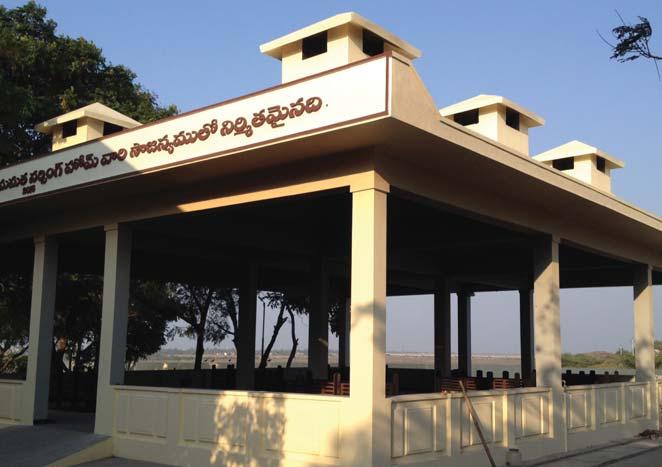
“The facility is run on a non-profit basis and is now being used by people of Nellore town and surrounding villages by paying Rs 1,500 for performing the entire cremation rites,” says Jagannadham. He is a retired civil engineer who supervised the entire construction work.
People can also avail lockers provided at the premises for storing the burnt ashes and bones after the cremation process. There are provisions for subsequent immersion of the ashes in the river near the facility. Two freezer boxes are also available at the crematorium.
We are getting RTGS transfers without any details. Henceforth, please ensure that every RTGS transfer is immediately followed by an email to the Rotary News Trust, giving information such as Name of the Rotary Club, Amount and the Remittance date.
Failure to update us with these details will throw up the club’s name in the ‘Dues’ list.
Also send us the updated Address List along with PIN CODE and language option (English or Hindi) and Print or E-version. If your members opt for E-version, please update us with their phone numbers and email-id to send them the e-magazine.

From Jaipur to Kalmunai in Sri Lanka, is quite a long journey. But this has not deterred Rotarians from
Rajasthan to address the challenges of the hearing-impaired in this town.
Saraf was jubilant as he knew for the first time in his life what paddy smelt like. And this despite working in the field all his life. Suffering from a condition called Nasal Polyps, his nose was completely blocked with excess growth of tissue. He is now able to sleep normally for the first time in his life, breathing normally. Earlier it was only disturbed sleep that he got, breathing through his mouth.
Saraf and several others in Sri Lanka were treated for their medical conditions at an ENT Surgical Camp and VTT programme organised by the Rotarians of D 3052, Rajasthan, in association with D 3220, Sri Lanka, at Kalmunai, a town near Colombo.
The week-long camp screened 750 patients, of which 30 were surgically treated and 300 were provided with hearing aids after audiometry tests. Others were treated for various ENT
infections. “The exercise was hugely beneficial for the patients here. There is a huge shortage of specialised ENT services in Sri Lanka. People from towns such as Kalmunai have to visit Colombo for treatment and the waiting time for surgeries is at least two years,” said Alaguraja, President of RC Kalmunai.
The Indian team comprising Team Leader Gopal Sapra, ENT surgeons Vikrant Mathur and Kuldeep Singh Rana, Audiology and Hearing Aid Specialist Priyanka Mathur and Anaesthesiologist IPS Suri, were selected by VTT Chair Ashok Gupta. They performed their magic at the Base Hospital in Kalmunai. While the camp was sponsored from the DDF of D 3052, the then DG Pradhuman Patni sponsored 50 hearing aids for the needy. The team carried with them a whole range of medical equipment and medicines needed for their mission.
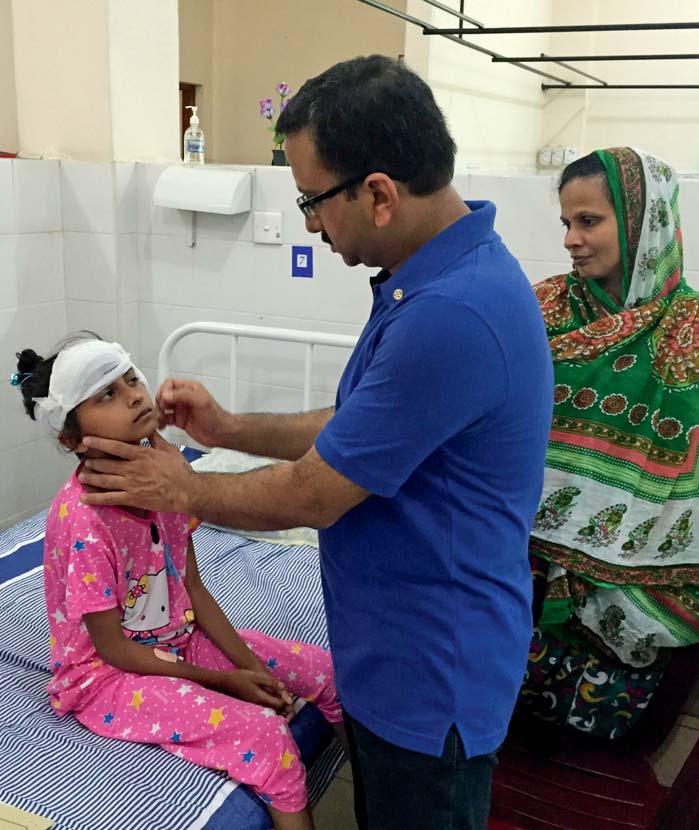
Dr Vikrant Mathur treating a child at the ENT camp.
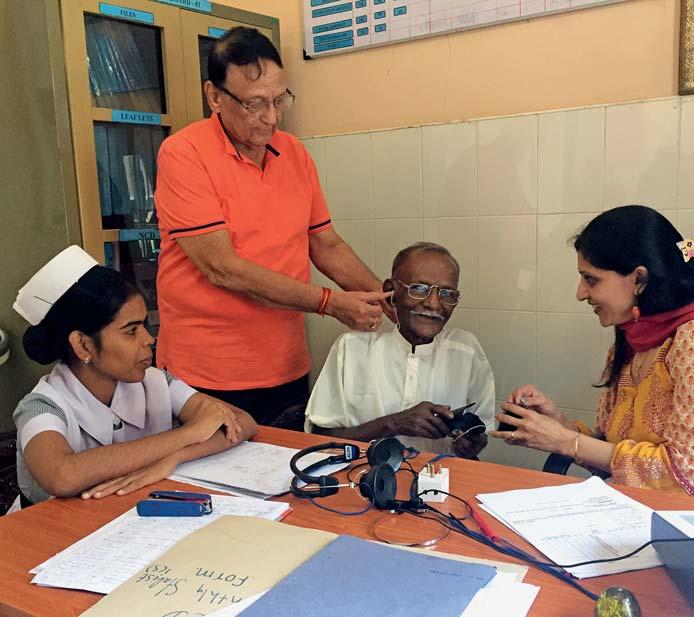
Statement about ownership and other particulars about Rotary News to be published in the first issue of every year after the last day of February
1. Place of Publication : Chennai - 600 008
2. Periodicity of its publication : Monthly
3. Printer’s Name : Mukesh Arneja Nationality : Indian
Address : Dugar Towers, 3rd Floor 34, Marshalls Road Egmore
Chennai 600 008
4. Publisher’s Name : Mukesh Arneja Nationality : Indian
Address : Dugar Towers, 3rd Floor 34, Marshalls Road Egmore
Chennai 600 008
5. Editor’s Name : Rasheeda Bhagat Nationality : Indian
Address : 25, Jayalakshmipuram 1st Street, Nungambakkam Chennai - 600 034
6. Name and address of individual : Rotary News Trust who owns the newspaper and partner Dugar Towers, 3rd Floor or shareholders holding more than 34, Marshalls Road one percent of the total capital Egmore Chennai - 600 008
I, Mukesh Arneja, declare that the particulars given are true to the best of my knowledge and belief.
Chennai - 600 008
1st March, 2017 Mukesh Arneja
“There were several instances that made us feel blessed to be there at Kalmunai, being able to restore hearing and speech for so many people,” said Dr Vikrant Mathur. It was a poignant moment for him and his team to witness the pure happiness on Gayathri’s face when her six-year-old son responded to her voice for the first time, after they restored his hearing by surgically removing the glue in his ears. “Nor can we forget the bright toothless smile that broke out on the wrinkled yet animated face of 85-yearold Rajani when she could once again hear her 88-year-old husband speak with her, thanks to the hearing aid we fitted to cure her age-related hearing disability,” he added.
At the end of the week, as the team packed their bags for India, they gifted school bags to the children of Kalmunai, encouraging them to attend school.
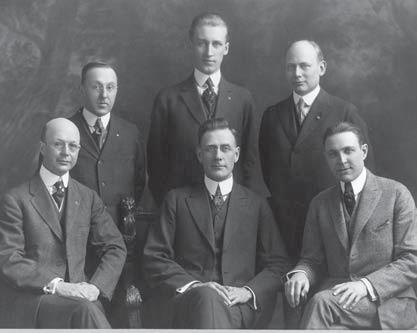

How did The Rotary Foundation grow from a small fund overseen by the 1917–18 Board of Directors, shown here, into one of the world’s leading humanitarian organisations? Find out in Doing Good in the World. Order your copy of the book at shop.rotary.org.
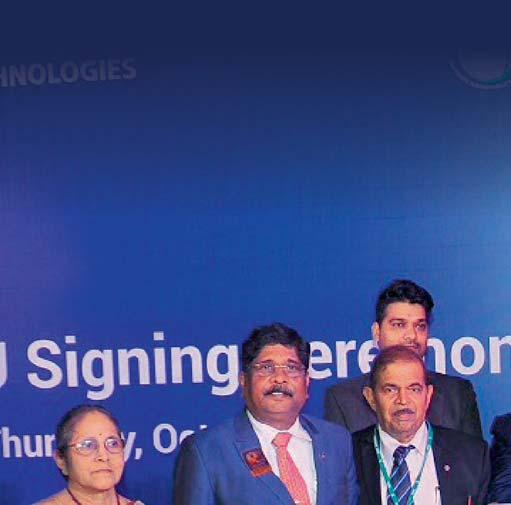
Kiran Zehra
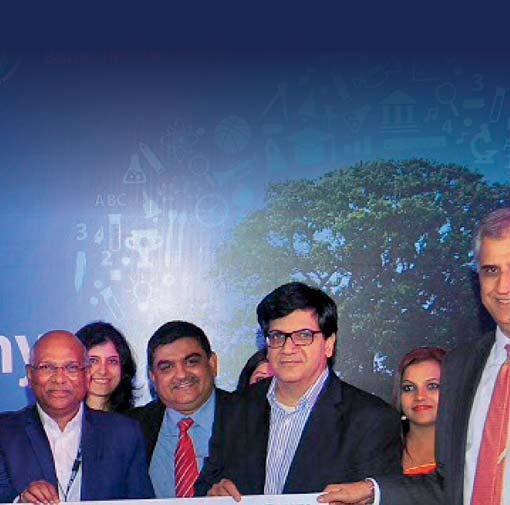

When (TRF Trustee Chair)
Kalyanda visited Pune as RIPE in 2010, he discovered the framework for RILM in D 3131’s flagship project — Rotary Distance Education Programme (RDEP),” says RRFC and RILM Vice Chair Kamal Sanghvi. After his visit PRIPs Rajendra Saboo, K R Ravindran, RI General Secretary John Hewko and directors from across the globe have visited Pune to understand the model and replicate it elsewhere.
Initially a Global Grant for 36 installations was completed in 2010–11. “We have to thank Kalyanda for talking about the potential of this project at every possible platform. It possibly paved the way for Rotary India Literacy Mission (RILM) and TEACH where e-learning is an essential feature,” says Rtn Ravee Dhotre of RC Poona North (RCPN). Today the RDEP programme has grown to be a whopping Rs 6 crore CSR partnership with Tata Technologies Ltd.
Adya, a Class 7 student in a village school in Gujarat knows that “Rotation s e din aur rath hoti hai. I saw it in the video.” At Smt Shantidevi Gupta High Schools, Maharashtra, Manyu of Class 3, enjoys the “humorous message on the importance of hand-wash in between my video lessons,” while Suhail is in love with his vowels video. Over the last six years more than 2,500 installations have made education available to rural schools in not just Maharashtra but also Gujarat.
Dr Aapga Singh, COO of RILM, makes it clear that “the software is not
Today the RDEP programme has grown to be a whopping Rs 6 crore CSR partnership with Tata Technologies Limited.

here to replace the teacher. It works like an audio visual aid,” and has lessons explained and elaborated using animation to improve the understanding of students. It doesn’t need a fast online connection and has an inbuilt data collector that holds a record of the lessons played, how many times a particular chapter was opened and how many hours the software has been used. This will help measure the development of students and aid in creating simplified lessons.
The initial project resulted in reduced dropouts, improved scores and enhanced confidence of the students in schools for underprivileged children. Not just restricted to providing only the software/ hardware, the e-learning kit comes with a three-year on-site support, warranty and upgrades to ensure its smooth functioning. Pundale, the Principal of Shree Bhariavnath Vidya Mandir, says that the software has lessons on almost all subjects. “Neighbouring school officials who visited our e-classrooms were very
impressed and have approached Rotary to implement this project in their schools too,” he adds. As the popularity of the project began to grow CSR funds have started flowing in.
In 2014, Tata Technologies Ltd wanted to partner the project. The company spent eight months assessing the project and the credibility of the club and the vendors involved. “After multiple audit visits to offices and beneficiary schools, their team felt confident that they had met their long-term associate,” says Dhotre. RC Poona North and Tata Technologies signed their first MoU in February 2015 to install interactive e-learning systems in schools.
After the funds were released, 408 installations were done in five weeks. “When the Tata officers randomly visited the schools, they were amazed with the kind of instant impact they saw on the students,” he adds. Today, RC Poona North in association with Tata Technologies has installed over 1,000 units in remote village schools benefiting more than 300,000 students. “Only Rotary will give you doctors, engineers and other professionals who work happily free of cost.
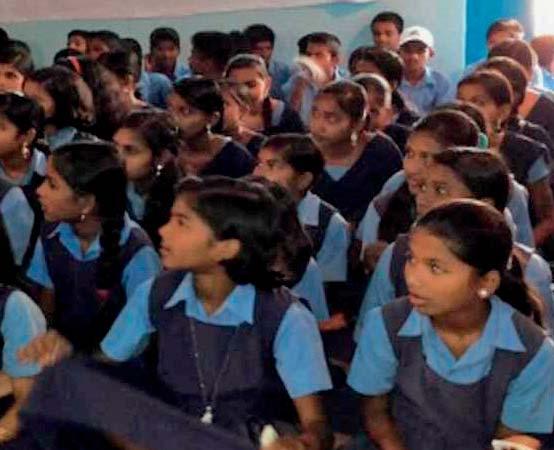
Children engrossed in an E-learning classroom.
Service is Rotary’s business. Using the strength of our partners, we are creating a better world,” says Sanghvi. Dhotre says, encouraged by the results, Tata Technologies has expressed the desire to take this project to the national level and promote it with its sister concerns. The company is partnering with RCPN for the third year in a row
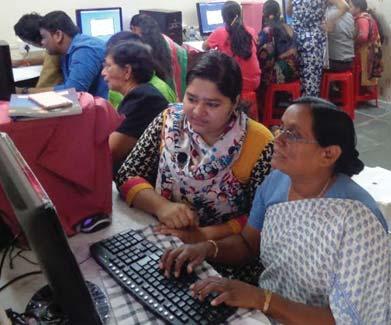
The Rotary Club of Mumbai Greencity, D 3141, recently inaugurated a computer centre at the Good Shepherd Convent, Andheri, in association with Vedanta Foundation, for which 36 trainees signed up. The threemonth course costs Rs 1,000 a student.
“In this digital age, computer education is a must and the launching of this lab could not be timelier. Job fairs will be held to facilitate employment of those who have completed the training,” said Sr Pushpa Louis, President, Good Shepherd Convent. Vedanta Foundation will depute a placement guide in the last week of the course to help students get employed.
now. Tata Motors has signed an MoU to implement the same in Sanand, Gujarat, D 3051. Rotary has signed an MoU with Tata Technologies to promote and implement this project throughout India. This CSR partnership, Dhotre believes, is a “huge boost and recognition for the efforts by thousands of Rotarians working under TEACH mission.”
Likewise, the club’s twomonth beautician course has benefitted 52 women so far. “Most of them are employed in beauty parlours or have their own practice, thus upgrading their lives with a good jump in their incomes,” said Club Secretary Parvez Merchant. Shobha Das (38), a widow and mother of a four-year-old boy, said, “Before this training, I was selling household items earning Rs 2,000 a month. Now as a trained beautician, I get called to my clients’ homes. My average income is Rs 4,000 now.” The club organised a seminar where 60 women from local slums were explained the basic concepts of entrepreneurship and running businesses.


Saga, the District Conference of D 3230, witnessed special bonding, hugs and handshakes as the 2,300odd Rotarians and their families from in and around Chennai came together as one big family for the last time before the District gets bifurcated into 3231 and 3232 in the coming Rotary year.
Realising the significance Conference Chair S Muthupalaniappan and his team had drawn up the blueprint of the programmes to make it memorable for all. There was something for everyone at the sprawling venue. The two-day affair started with a big bang, literally, to the beats of Drummer Sivamani.
While ‘The year that was’ added to the poignancy, the Rotarians’ love for The Rotary Foundation came to the
forefront when contributions poured in, beginning with PDG Sv Rm Ramanathan presenting a cheque for $100,000 towards Term Gift, followed by 12 Major Donors and four Endowment Fund donors.
“It was a meticulously planned programme,” said DG Natarajan Nagoji. PDG Asoke Ghosh of D 3011 was the RIPR while film star Prabhu was the guest of honour. Commending the donors, Prabhu reminisced, “When a beggar knocked at our door, my father would say, ‘Give him a rupee and he’ll be happy.’ But here I’m awed to see you all giving in lakhs so that many others will have a good life.”
The speakers
T N Manoharan, Canara Bank CMD, held the audience spellbound as he
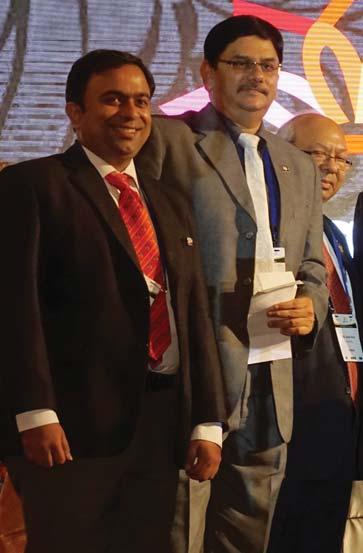
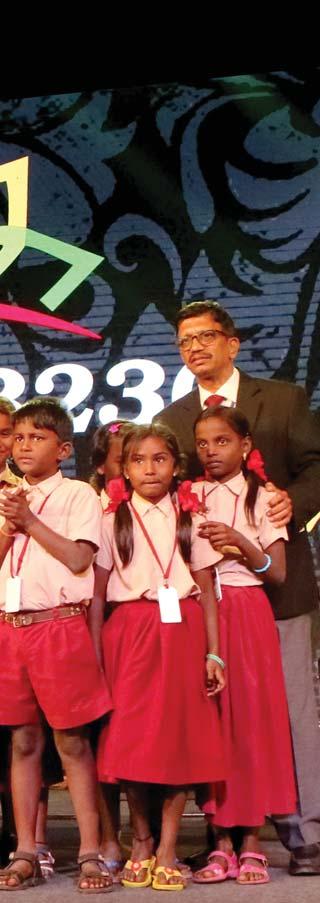
enumerated various facets of the Satyam Computers scam, in his address on Rotary’s Four-Way Test. Tallying the account of life, he said, “Contra entries are only for your ledger books. There can be no contra entry in life. Even if you have 100 credits, one debit can wipe out all your good deeds.”
Gopinath, the anchor of the immensely popular Tamil debate show Neeya Naana (You or Me), had the delegates in splits with his trademark humour. Toxicologist and forensic expert V V Pillay gave insight into the serious damage that can be done when different kinds of poison are imbibed accidentally. One could relate to his talk on episodes of lethal poisons such as stupefaction agents which cause retrograde amnesia in date rape victims, and harmless dyes used by children to just gain attention when they feel they are neglected. Other speakers included Professor Suba Veerapandian and BJP spokesperson Sambit Patra.
The District Conference honoured former Chief of Indian Navy Admiral Sureesh Mehta with a Lifetime Achievement Award and Arunachalam Muruganantham,
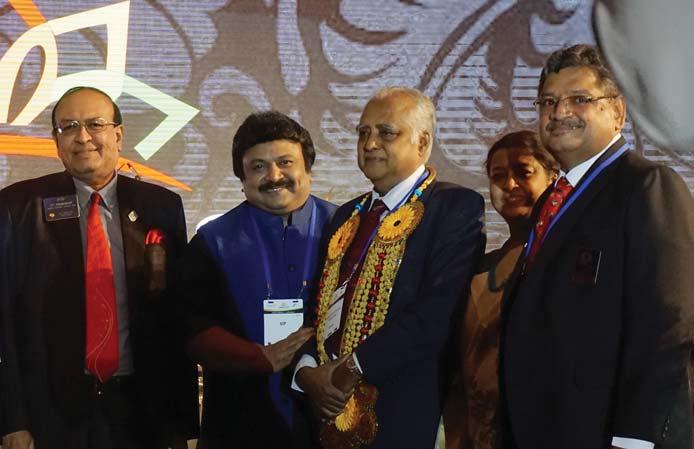

Actor Prabhu
innovator of low-cost sanitary napkin making machines, with a Vocational Excellence Award. The recognition of Ayyappan, headmaster of the Nelikuppam Panchayat Primary School near Chennai, for his innovative English language teaching module, was welcomed with great applause and the short skits played by primary class children in flawless English and confidence deserves special mention.
WinS Vice Chair and PRID P T Prabhakar presented the progress made by the District in installing toilets and wash stations in schools. He highlighted that TRF has made WinS “a focused programme,” earmarking $1.5 million for WinS global grant projects and referred to the handwash model displayed at the WinS booth. He announced that Rotary has got a special price, bringing down the cost of the station from Rs 20,000 to Rs 16,000. He acknowledged Rtn G Balasubrahmanyan’s commitment to the WinS programme and RC Madras Central for undertaking to install 100 handwash stations in schools.
The teams of the newly formed Districts — D 3231 to be led by DGE Jawarilal Jain and D 3232 by DGE R Srinivasan — were introduced. All past governors were recognised for their valuable contributions to D 3230.
It was curtains down as the Rotarians bid fond farewell to their friends to the beats of celebrated folk arts performer Dr Kaleeswaran and Gaana Ulaganathan. “We wanted to make it a trendsetter and I think we’ve achieved it to a large extent. More importantly, the stall owners at the HoF were happy with the turnout and that in itself is a big image booster for us,” said Muthupalaniappan, heaving a satisfied sigh. I’m awed to see you all giving in lakhs so that many others will have a good life.

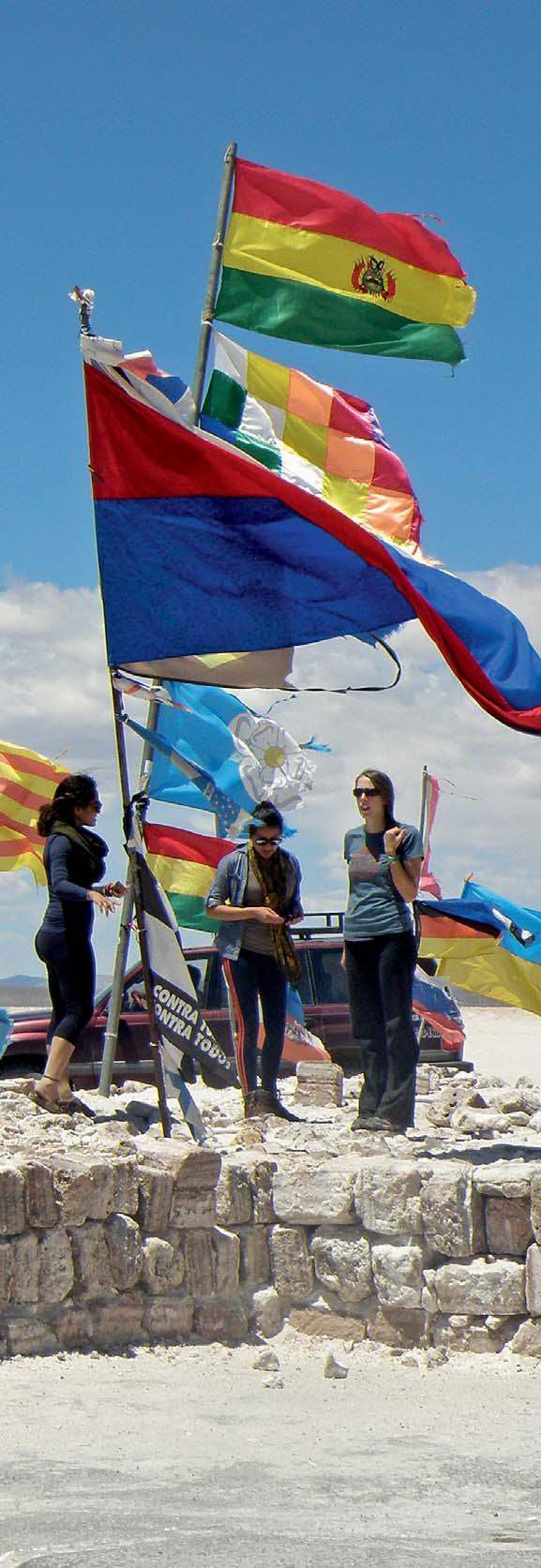
Idon’t ever want to go back to windy, icy Washington DC,” whoops Alexandra in Russian-accented English, her blonde ponytail whipping about her face. “I would love to live right here.” She lands perfectly after an orchestrated group jump into the air. She reaches for her husband Raymond, a software wizard of Bolivian origin.
Alexandra, Raymond and I are part of a group of eight being shepherded through one of earth’s most spectacular landscapes — the Salar de Uyuni in southwest Bolivia. Just minutes ago, our driver-guide Tomas explained, “This salt desert is the largest on earth, stretching 10,582 sq km. These polygonal patterns on its surface, unbelievably, are formed naturally by the dry air and the blazing sun. We are 3,656 metres above mean sea level, close to the crest of the Andes mountains in South America.”
Pointing to the almost monochrome salt desert, Kenko, a Japanese geographer, asks, “How deep is this salt crust?” Tomas says, “Below this crust, which ranges from a few centimeters to 10 metres deep, lies a saltwater lake that is two to 20 metres deep.” We gasp collectively.
Not an ant nor a blade of grass is visible in the bleak, magnificent stretch our eyes scan. “Salar de Uyuni is basically a salt flat enclosure,” our guide continues. “This area
Between 50 to 70 per cent of the world’s lithium deposits are here. Enough to power your iPad or MacBook batteries for a century to come.
When it rains from December to March, this desert blends into the purest blue ever, transforming it into a giant natural mirror.
contains sodium, magnesium, potassium, and between 50 to 70 per cent of the world’s lithium deposits are here. Enough to power your iPad or MacBook batteries for a century to come.”
Consulting his iPhone, Raymond interrupts, “Are we in the Daniel Campos province in Potosi? How come multinationals aren’t raking in profits from the 10 billion tonnes of salt here? Where are the mining crews, the heavy equipment….?”
Our Toyota Innova jerks to a halt. Stern-faced, Tomas says, “Look, since 2006, Evo Morales has been Bolivia’s President. Like me, he belongs to the proud, indigenous Aymara people.
Yes, like the bowler-hatted women with woollen skirts you saw in the main square in La Paz, who sell snacks and simple handicrafts. Under Morales, Bolivians are resisting American monopolies. No Coca-Cola here. No McDonald’s, either. No diplomatic relations with the US.”
Morales succeeded Gonzalo Sanchez de Lozada (a k a Goni), a US ally and free market reformer.
Goni was ousted amidst civil strife in October 2003, after he pitted the police against the armed forces. Morales unsuccessfully sought his predecessor’s extradition under US President Barack Obama.
We could be on another planet, we whisper to each other, as we are driven to the north, to the west, wherever we choose. There are no signposts, no dwellers, few signs that man has tamed nature here. The mood? As if we are flying through the clouds, without safely belts on. As far as the eye can see under the unrelenting sun, the dazzling whiteness stretches up to an infinite horizon, its rare pools reflecting a cloudless blue sky.
With the seasonal salt marsh of the Great Rann of Kutch still on my to-do list, Salar de Uyuni begs comparison with the 221 sq km Salinas Grande salt desert in northwestern Argentina, which I had visited a month earlier. But that pales in magnitude before the grandeur of Bolivia.
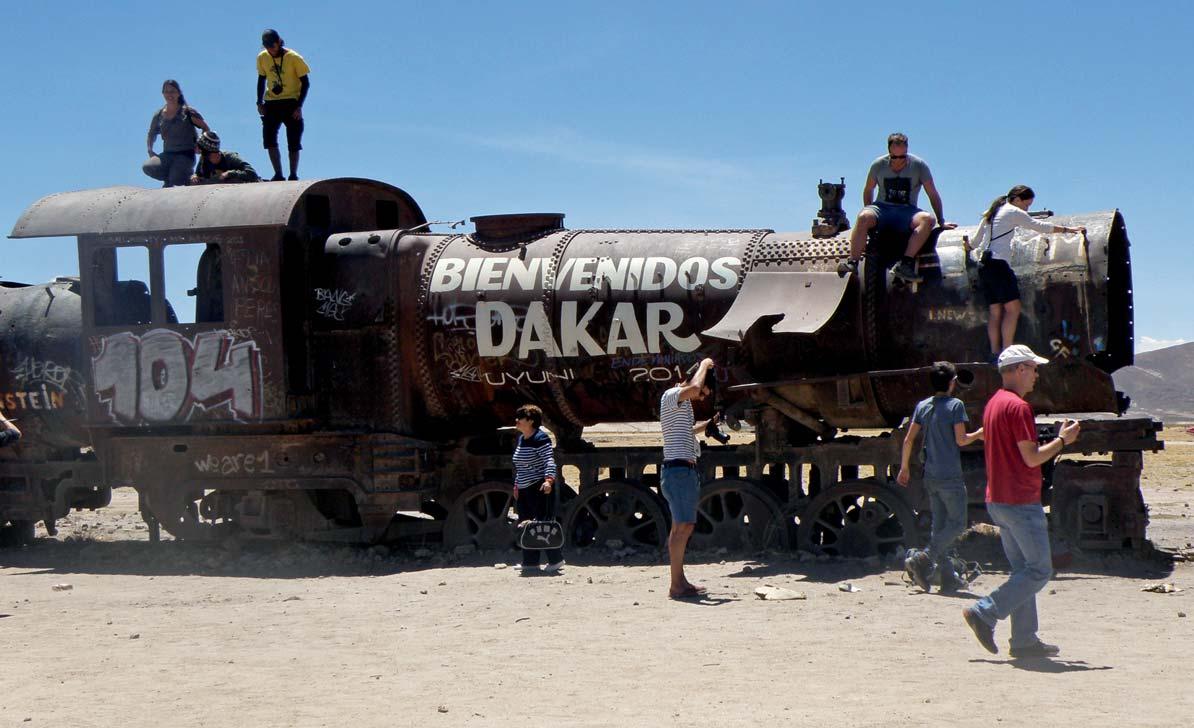
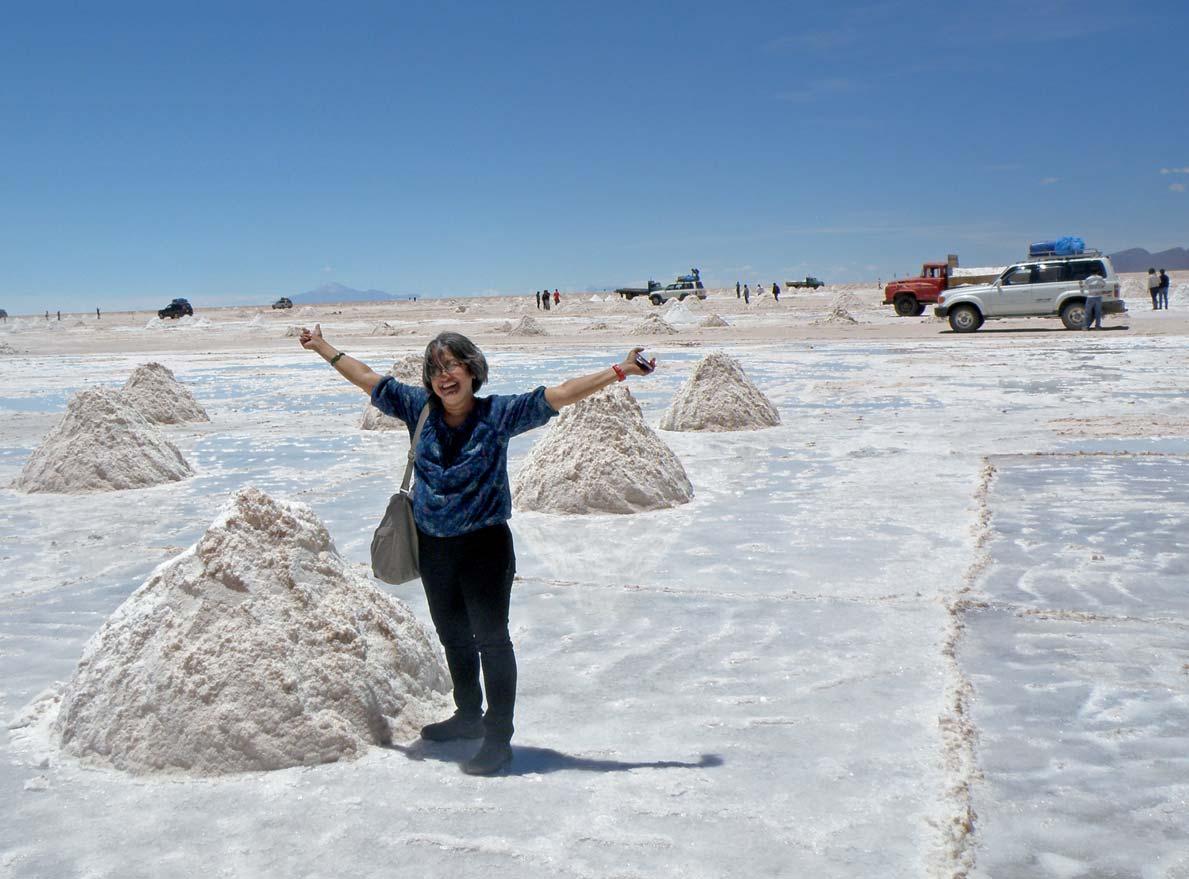
We pose by mounds of salt, running to a platform of salt bricks, under fluttering flags from across the globe. Only 16,207 km away from Bengaluru, I gaze skywards in search of an Indian tricolor. The collective mood remains upbeat, though I draw a blank.
“The Salar is part of the Bolivian altiplano. This high plateau was formed when the Andes mountains lifted geologically. Perhaps 42,000 years ago, the prehistoric Lake Minchin probably covered this area,” says Tomas of the alien geography. “Near the settlement of Colchani, 60 km away, Bolivia now extracts nearly 20,000 tonnes of salt, mainly for human consumption.”
Sensing our unvoiced query, he adds, “Around 1993, a hotel built almost completely of salt bricks came
up in the middle of Salar de Uyuni. Tourists loved it. But sanitation was a major problem. Waste had to be collected manually. It was dismantled in 2002.”
Past languidly strolling llamas and vicunas off the main road to the Salar, past paragliding tourists, by lunchtime we arrive at the rocky hillock of Isla Incahuasu, perhaps once an ancient volcano in Lake Minchin. Its vegetation startles us — giant Echinopsis atacamenis pasacana cacti that grow just one cm annually to soar upto 12 metres. Energised by a lunch of quinoa, roast beef and potatoes, we scamper up the rocks to get a 360-degree view of the salt flats. En route, rabbit-like viscachas dart out of their burrows, over our feet, as we shriek. Light-headed
No Coca-Cola here. No McDonald’s, either. No diplomatic relations with the US.

atop the hillock, we imagine ourselves immersed in a dazzling sea of salt.
By my shoulder, Kenko reads aloud from his phone: “When it rains from December to March, this desert blends into the purest blue ever, transforming it into a giant natural mirror.” Tomas adds, “Though it looks flat, GPS shows this giant Salar has slight undulations. And hey! NASA uses it to fix satellite positions since it is easy to spot from space.”
Driving southwards, we stop briefly at the Laguna Colorada, which hosts a gathering of Andean flamingoes, typically visible in November. Their pink beaks and legs stem from feeding on pink algae in the salty lagoon. But we do not sight the rarer James flamingoes or Chilean flamingoes. Though 80 other bird species are said to inhabit the salt desert, the horned coot or the Andean goose remain elusive. So does the Andean culpeo or fox.
Our last stop is a live baby volcano, part of a ring around the Salar de Uyuni. We are unprepared for the gentle smoke from its funnel-top. Or for its painterly palette, with brown fading into green, grey, lime, orange, red, then a fiery terracotta, taking cues from mineral sub-strata. On our haunches, we peer at springs that bubble up under the salt, like imaginary fish blowing bubbles.
We learn that according to Aymara legend, these mountains — Tunupa, Kusku and Kusina — were once giant people. Tunupa married Kusku with great joy and feasting. But he was unhappy, so he eloped with Kusina. Weeping as she breastfed their son, Tunupa’s tears mingled with her milk as they travelled down the slopes. She is a deity to the Aymaras.
More than in Argentina or Chile, indigenous pride is alive and well in Bolivia. “The Aymara were the original settlers of the Andean altiplano




before they were subdued by the Incas in the 15th or 16th centuries,” explains Tomas. “Over a million Aymaras live in Bolivia, with smaller settlements in southern Peru and northern Chile.”
En route to the spectacular salt desert, Tomas urges us to tumble out of his Toyota at a cemetery for trains. “These antique trains were used in the mining industry till 1940, when Uyuni was the hub for trains carrying minerals to Pacific ports,” he says. “From 1888 to 1892, British engineers built the rail tracks, encouraged by our President Aniceto Arce. But construction was often sabotaged by the Aymaras, who felt it was inauspicious. When the minerals ran out, the trains were abandoned here.”
Raymond clambers up an old engine, waving to us to join him. Once aloft, we cheer on tourists driving by in assorted vehicles, as English and French, Spanish and Swedish throng the air. The energy is playful, as if we were running free in a

A baby volcano comes alive against a palette of mineral sub-strata.


We could be on another planet; no signposts, no dwellers, few signs that man has tamed nature here. The mood? As if we are flying through the clouds, without safety belts on.
playground. We sing. We hoot. Some dangle at odd angles, with uncharacteristic bravado.
We zone in on ancient steam locomotives, rusting yet regal. We scale steel ladders to clamber up to the driver’s cabin, check out coal wagons now shorn of mineral wealth. In sync with our time, engine parts and stray wheels in disrepair assume the guise of funky art installations.
As I board my flight from Iqueque to Lima in Peru, after nine unforgettable days in Bolivia, what memories do I carry away? A high-stepping trek to the 15th century Inca shrine on the Isla del Sol amidst shimmering Lake Titicaca, shared by landlocked Bolivia and Peru. La Paz, the Bolivian capital, at the base of a bowl-shaped valley. The dizzying onset of altitude sickness in the rare air at El Alto, the world’s highest international airport at 4,061 metres, which makes me rush to a dingy pharmacy for local Sorochi pills on a tipoff from a fellow flier. The baby llama carcasses hanging from market stalls, ostensibly to ward off evil spirits. Even the lingering taste of Bolivian cinnamon ice-cream from a vending trolley during a free walk through La Paz.
Perhaps most of South America was like Bolivia about a century ago. Or before the Spanish conquistadors arrived in the 16th century. It is difficult to push away the thought.
I carefully pick one souvenir to take home with me: the Wiphala or 7x7 patchwork square flag representing the native people of the Andes. Since 2009, it has been acknowledged as the co-official flag of Bolivia. It flutters in my Bengaluru verandah, rekindling memories of the dazzling dome of salt and sky that held us in thrall. Not just for a day, but for life. That’s the immortal essence of the Salar de Uyuni.
Pictures by Aditi De Designed by Krishnapratheesh S

Preeti Verma Lal


When you step into Macao, dump all map apps. Follow your nose. And pay attention to the salivary glands revving into an overdrive. The aroma might cause giddiness and the nose might get foxed sniffing all that hangs heavy in the air. Almonds. Butter. Sugar. Jerkies. Candies. Durian. Bacon in a cookie. All this in one street, the street where everyone goes for the sugar dose.
Rua do Cunha. A 5 x 115 metre street where all foodies descend as pilgrims. Named after a Portuguese explorer and located in Taipa Island’s Old Town, the street is cluttered with On a food trail in Hong Kong and Macao, leave behind your fetishes and pamper your palate.
Jumbo is Hong Kong’s most famous floating restaurant.




snack shops and eateries. A few more famed than others. Fong Kei stashes bacon inside his cookies! Sometimes, even lard. The cookie-bacon combo seems like doggy biscuit but once you bite the salt, the bacon, the sugar — everything melts in the mouth into a gooey, delectable mush.
In Macao, this, however, is not the only street for foodies. As you step down the ruins of St Paul’s, it will not take too long to forget history. A thin street at the foot of the ruins is all about cookies, nougats and jerkies. Women stand outside their shops, clap loud and holler louder to tempt shoppers into

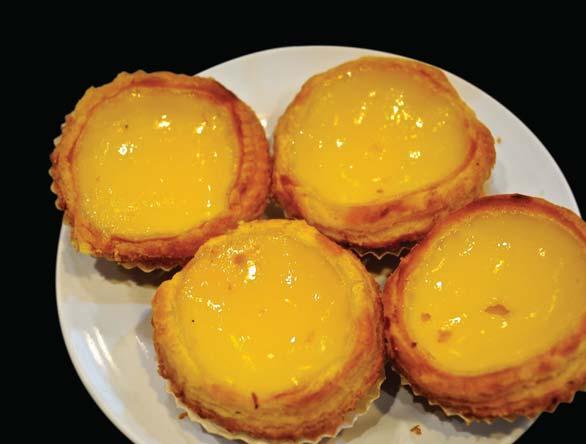

Hong Kong’s HonoluluCafe.

taking home Macao’s favourite souvenir. Another must-takehome from the island are egg tarts. Not just any tart from any store. Egg tarts from Lord Stow’s Bakery in Coloane Island. Those scrumptiously flaky pastry crusts filled with delicious egg custard centres and topped with crispy crème brulee. At the Stow’s bakery, tarts fly off the shelf. Nearly 14,000 everyday. Sweet-toothed wait in queue patiently for that flaky tart that tom-toms itself as ‘Creator of egg tarts now famous throughout Asia’.

If these tarts are not enough for a hungry gourmand, take the ferry into Hong Kong and walk straight into Honolulu Cafe, a nondescript restaurant where people flock for lunch. Finding a seat in Honolulu can be a patience-test


but when the kumquat+honey drink arrives on the table, one hungers for more. Iced red bean. Tea+coffee (tea and coffee together) drink. Spicy Spareribs. Beef Satay Nissin noodles. Beef brisket. Pork chops with spaghetti. Do not expect any finery or pleasantries here. Not even a menu in English. But if you can smile and goad enough, the servers will fish one out. The food is good and easy on the pocket. And yes, there’s the egg

While in Macao, dump all map apps; follow your nose and pay attention to the salivary glands reviving into an overdrive.

tart to compensate for the crowd, the hurry and the indecipherable Mandarin-menu.
In Hong Kong, if a Mandarin menu seems Greek, just purr. Or, meow, and a lavish meal will be laid out on the brown table. Do this in the world’s first Hello Kitty Chinese restaurant, where everything is Hello Kitty-ed. The cat is everywhere… and on everything. Standing at the door as a cut out, on tea pots, on pink sauce bottles, framed on the wall as paintings. And on the platter. As many as 20 varieties of dim sum and 40 as main course. The kitty with a pink bow peeps out of steaming wicker baskets as dim sums, gets set on the plate, as a red ribboned rice platter


turns into a crunchy cookie, and as sweet large bao with three little baos hidden under its belly. As if all this kitty-dishes weren’t enough, there’s Hello Kitty Bombing Rice, a rice dish plated as kitty’s face served with a sprinkle of popping candies. Apple/mango/peach candies are sprinkled just before serving and literally explode in the mouth.
Sitting in the Hello Kitty restaurant and picking the catshaped dim sum with wooden chopsticks, I remembere Mark Twain’s pithy saying: “If animals could speak, the dog would be a blundering outspoken fellow; but the cat would have the rare grace of never saying a word too much”.
In this Hong Kong restaurant, the
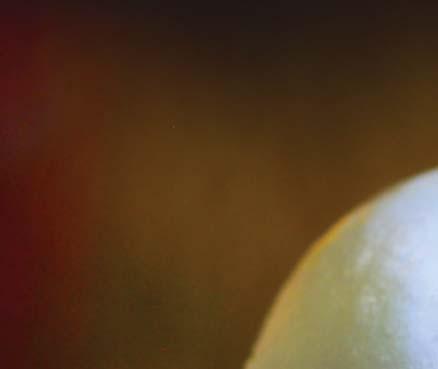
Cat-shaped dim sum in the world’s first Hello Kitty restaurant in Hong Kong.




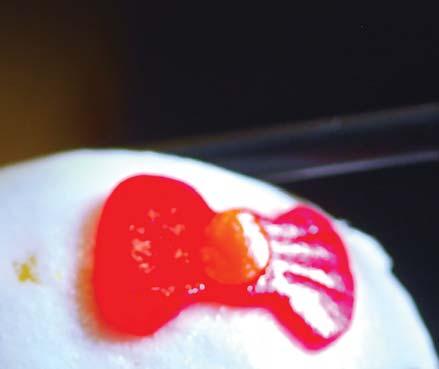
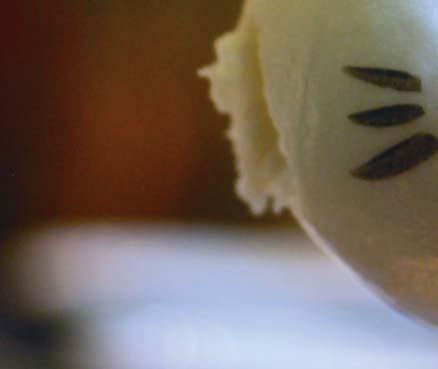



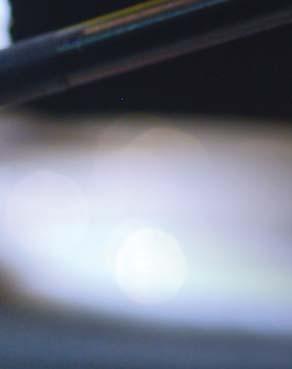





And there’s the Hello Kitty Bombing Rice, served with a sprinkle of popping candies, that literally explode in the mouth.



cat sure does not say anything, but she sure is delicious.

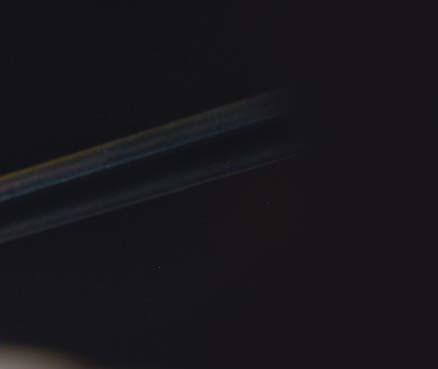
Suddenly, I am distracted by a thought, the thought of a dropdead gorgeous moustachioed man who made every woman weak in her knees. I want to go where he once went. On Asia’s first funicular that whooshes up The Peak that is perched at 428 metres above sea level. Hollywood heartthrob Clark Gable was at The Peak for his 1955 film SoldierofFortune.The funicular races up the hill in seven minutes. At the top, celebrities stand beyond a red carpet at Asia’s first permanent Madame Tussaud’s. Mahatma Gandhi and Prime Minister Narendra Modi stand a few feet apart and Bollywood icon Amitabh Bachchan occupies another corner.

But I was not at The Peak for them. It was for the food. Food
with a view. There’s a restaurant called Bubba Gump Shrimp (don’t ask me any whys about the name!). Another called Fujiyama Mamma (don’t ask again, please). Forgive the names, order anything and peep out of the window for a spectacular view of the harbour and the skyscrapers that take Hong Kong to the top of mostskyscrapers-in-a-city list.

And when the fireworks light up the Hong Kong sky, step into Harbour City Mall and order a pizza at Jamie’s Italian. He is the naked chef. Jamie Oliver of The Naked Chef cookery show fame. That’s the perfect way to end a Hong Kong night. Fireworks in the sky. And pepperoni arranged tidily on a thin crust pizza at Jamie’s.



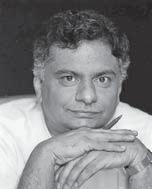
In 1936, a British economist called John Maynard Keynes wrote the most influential book of the 20th century. In it he said that when the level of economic activity in a country falls, the government of that country must spend more to raise it.
After the Second World War ended in 1945, this became the equivalent of the Mrityunjaya mantra for governments. Devout Hindus believe that this mantra allows you to conquer death.
But there was a problem: in order to spend more, governments need money. They can get it either by increasing taxes or borrowing — or both.
In India, after 1957, the government started increasing taxes so that by 1972 the tax rate for the rich was 97 per cent. The folly of this was realised when tax evasion and black money proliferated.
So after 1985 there was a gradual reduction in income taxes, and in 1997 they reached the current levels of 30, 20 and 10 per cent. To make up for the loss of revenue, there was a gradual increase in other taxes.
But that was not enough and the government started borrowing more heavily from 1986 onwards. By 2014, it had borrowed so much that nearly a quarter of its annual revenue was being spent on paying for past debt.
Simultaneously, for political reasons, it had also been spending on the wrong things: salaries, pensions for its employees and subsidies in the name of the poor which actually went to the well-off and the rich.
Overall, the result today is that out of every Rs 100 that the government receives, it spends around Rs 65 on salaries, pensions, subsidies and interest on past debt. This means it has only about Rs 35 left to spend on development which is clearly not enough.
This is not what Keynes had meant anyway. He hadn’t wanted the government to become the prime mover of the economy. Is it any wonder then that development has been so slow in our country?
It is in this overall context that the Finance Minister, Arun Jaitley, presented his third Budget on February 1. Like any middle class householder, his hands are tied because of expenditures undertaken by the UPA government in the ten years that it was in power.
That is why the Budget has not done much, which is actually a good thing because if Modi and Jaitley thought the way the UPA did, a lot of harm could have resulted by way of higher taxes and greater government expenditure.
Instead, he has left the taxation side well alone and tried to reduce expenditure. He needs to be commended for this.
The government also needs to be congratulated for the initiative on election funding. It has proposed election bonds which can be purchased by donors. The donors will then hand over these bearer bonds to the political party of their choice which will redeem them from a designated bank.

The proposal has been criticised for not going far enough. But it is at least a departure from cash funding of political parties.
The move towards greater digitisation — payments above Rs 3 lakhs will not be allowed in cash henceforth — is also a very good move. It will help reduce black money in the system.
Where the government has failed is in doing something to help the sinking public sector banks. They are in deep trouble because of loans that are not getting repaid. The impression has therefore gained ground that the government simply doesn’t know how to tackle the problem.
For the rest, it was a very ordinary budget. But thank god it didn’t do any harm.


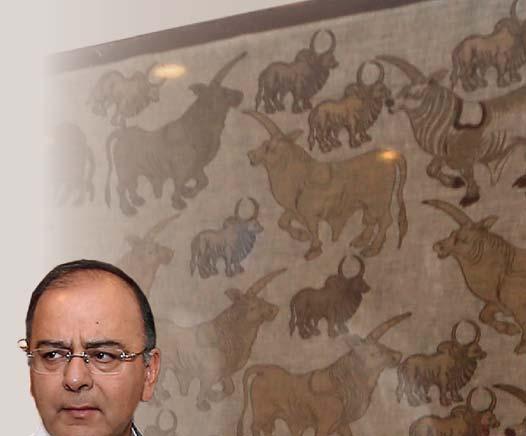
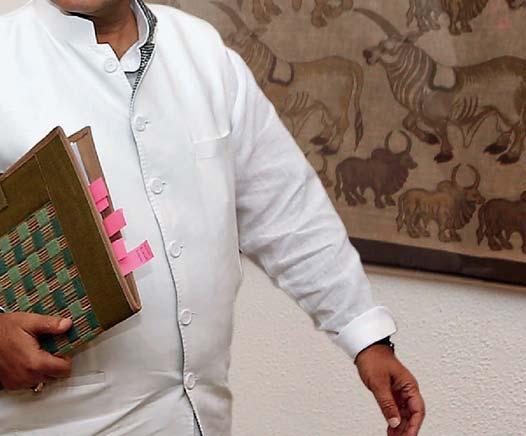
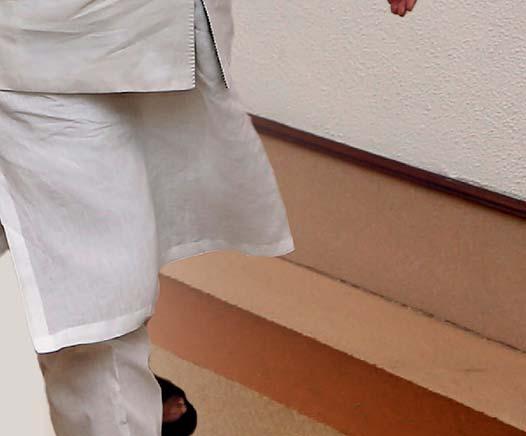
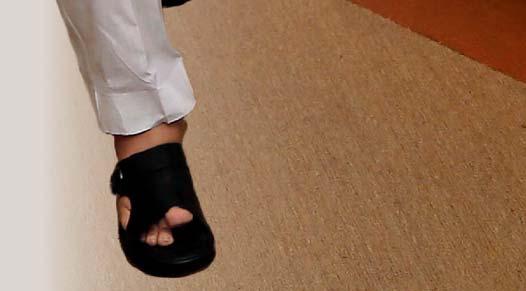

Florida and South Carolina get more props for their beaches, but Georgia has a coastline full of natural beauty still largely untarnished by tourism. You can get in on the secret when you’re in Atlanta for the 2017 Rotary International Convention from June 10 to 14. All you need is a few extra days and a car.
Perhaps the most treasured spot along the Georgia coast is neither a beach nor unknown. The 1994 best-seller Midnight in the Garden of Good and Evil made Savannah famous, and tourists have flocked there ever since. Don’t let its popularity scare you off: The city’s deep history and gorgeous antebellum architecture are worth the 31/2-hour drive.
Half-an-hour down the road from Savannah, you’ll reach Tybee Island. Life on “Tybee time,” as locals call it, is laid-back and low-key. You’ll find local seafood joints and plenty of opportunity to ride bikes, sea-kayak, dolphin-watch and, of course, take a dip in the Atlantic.
Driving a couple of hours farther south will get you to the Golden Isles, which are more off the beaten path. With marshland and forests in addition to beaches, the Golden Isles are a haven for nature lovers, fishermen, horseback riders, and golfers. It’s a far cry from lying by the pool at a fancy hotel in Miami, but if you ask the locals, that’s a very good thing.
— Deblina Chakraborty
Pre-registration savings end March 31. Go to riconvention.org.
Dr Sheela Nambiar
Ihave been teaching fitness for the last 16 years. Of course, there have been marvellous ‘before’ and ‘after’ photo-ops even after the first three months of regular exercise for most women. Then there has been the weighing scale that is feared and hated. It spells doom for some and sends others into throes of ecstasy. It’s just a number; still, women are highly influenced by it.
There is however another more lasting and highly under-recognised benefit of fitness. Many people enjoy being part of a fitness group or organisation that gives them a social outlet and connects them to others. The gym becomes the new social hangout to meet like-minded people and make friends. The like-mindedness being the common goal to better health/wellness.
Many friendships have been born in the gym! People who start by just chatting with each other, go on to catch up over coffee later, and for some, it is the start of an everlasting friendship.
Many of these relationships may not have happened had it not been for their chance meeting through fitness. There are several advantages to these friendships. The first, of course, is that you get to make friends. In today’s highly virtual world, real connections are quite a challenge. But when people meet in group sessions such as in a gym, connecting with others in the real world is possible.
Working out together enhances a bond as you sweat and exercise to better
health. The high endorphin levels may have something to do with being more congenial and open to friendships. Friendships are after all the chain that links people.
Working out with an exercise partner or group also ensures that you persist with it. This then goes beyond just friendships and happy feelings. It cultivates the habit of regular exercise. When in the company of friends whom you work out with, you tend to push beyond what you would probably do on your own. Your partner’s success or dedication motivates you to do better, and averts boredom and monotony. Regular exercise often translates into healthier lifestyle. As you know, the one-hour of exercise will not mitigate the remaining 23 hours if they are spent irresponsibly. Eating healthy, moving a lot, not smoking, minimising alcohol, managing stress and getting enough sleep are as important as that holy hour in the gym. All these become more attainable when you surround yourself with like-minded people. It’s not necessarily true that your gym buddies also share your social life, but
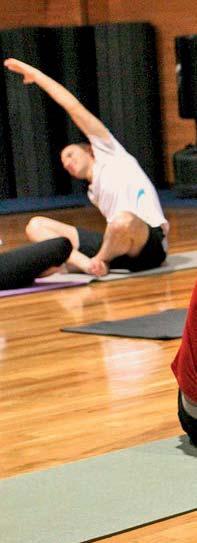
chances are you will stay connected, and together, remind each other of healthier choices, share healthy recipes, provide solutions for setbacks, encourage each other on a bad day and so on. Research has shown that you will imitate the lifestyles of the people you cultivate friendship with.
Working out with a partner or group cultivates the habit of regular exercise.
A 2011 study published in the Psychology of Sport and Exercise found that exercise habits of people you know have a positive influence on your own exercise habits. So, for instance, having someone join you on an early morning run would mean that you feel obliged to sleep early, wake up early and get moving to uphold the bargain.
You could either partner with one or two specific people to
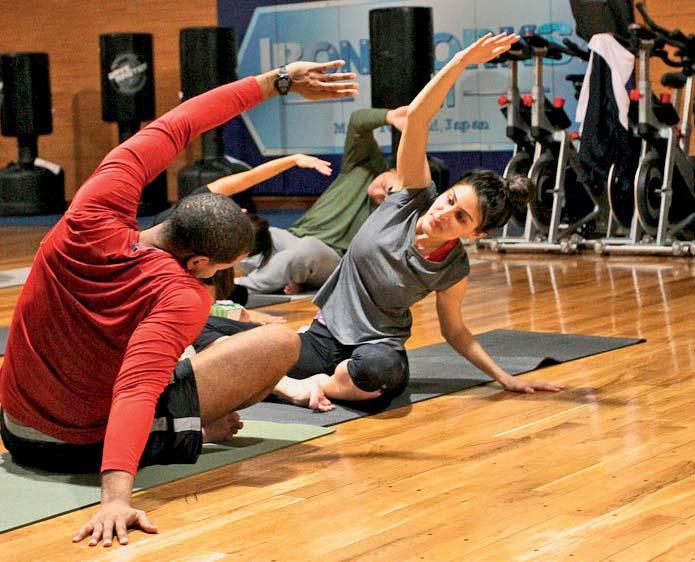
work out or be part of a group that acts as a support system. We are all social animals; so, having a social connection, even while working out can be of great benefit.
If you do choose to partner with someone, remember:
The person does not need to be your best friend but you do need to ‘like’ him/her.
Your fitness levels and health parameters should not be overly mismatched as then you may be held back instead of moving forward.
You need to feel accountable to and responsible for your partner encouraging and committing
to the process. Provide positive reinforcement whenever possible and see that both of you progress. Sometimes having a partner can be a deterrent if either of the two is lazy and holds the other back.
If you choose to join a group, remember:
The fitness activity done as a group has to be in sync with your requirement. Many group activities are generic and may not entirely suit your fitness needs.
The group leader, usually the instructor, needs to be highly empathetic and extremely qualified to take the entire group together forward while avoiding injury given
the different levels of fitness of the people involved.
You may need to do some solo activities to fill in the gaps in your fitness. The group activity, for instance, may not include strength training. You may then be required to do that separately.
Finding the right partner or group can be of great benefit to sustain and even enjoy exercise. The support system, accountability and healthy competition and inspiration provided, usually act to cheer you on, especially on days when you want to play truant.
The author, an Obstetrician and Gynaecologist, is a Fitness & Lifestyle Consultant, and has published two books: Get Size Wise; Gain to Lose.
Usha Chaudhary
Chanda Jat (18) belongs to Phalichada, a village in Udaipur district, Rajasthan. The average girl in this region lives within conservative social boundaries and is accustomed to putting aside her dreams — be it stepping out of home to play or completing her education — for a life of domesticity, marred by early marriage and motherhood, endless household chores and a very real threat of domestic violence. Chanda, however, is no average girl. With the support of her mother, she has succeeded in becoming an exception to the norm.
She started out like others. When just 18 months old, she was engaged. As she stepped into her teens, her in-laws started pressurising her father, a trucker, to get her married. She, however, wanted to continue her schooling. When she was in Class 9 her ‘husband’s’ family gave an ultimatum and that’s when her father decided that it was high time she gave up her studies.
However, Chanda decided to fight back. Fortunately, she had the staunch backing of her grandfather, mother and siblings. With the family united on this issue, her father relented, but with a warning: she only had one year to complete her Class 10 and then she would have to comply.
This borrowed time changed the course of her entire life, giving her the opportunity to discover the joys of playing volleyball. Her eyes light up as she says, “Volleyball is a no fuss sport. All one needs is a net stretched across two poles, a ball and one is set to play.”
Along with a few other girls who were keen to play, she approached the sports teacher at school to coach them. The teacher knew that parents would strongly disapprove of this move and insisted that each one bring a signed permission letter from home. Chanda knew that her father would never agree — she had seen him get violent, even beat up her mother, when his wishes were flouted. So she simply forged his signature. It was a daredevil act but Chanda saw this as a step in the direction of her dreams.
As it turned out, this was a wise move as she was natural at playing volleyball. She was lithe, talented and had a passion for the game. With time, she gained proficiency and participated in tournaments, which sometimes required her to travel. Again, it worked out well as her father’s work kept him away from home for long intervals and he rarely knew what was happening in his absence. She had her mother’s tacit support.
Unfortunately, as her sporting ability grew, Chanda slipped in her studies and eventually failed in her Class 10 exams. Disheartened, for a while, she could not bring herself to re-enrol.
It’s her goal to help at least 100 girls who have dropped forms for open examinations and enable them to get back to education.
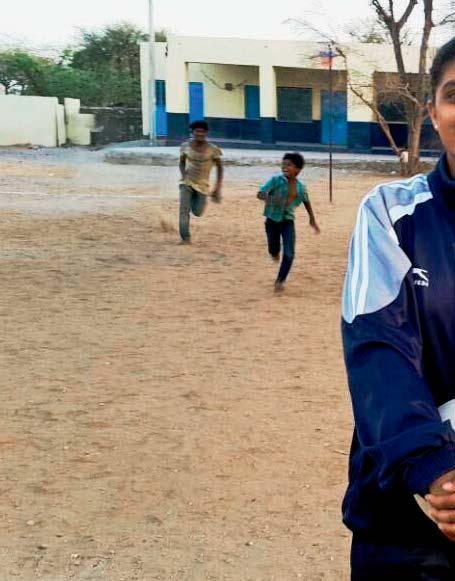
But not one to sit at home, she spent time working along with the rest of the family on their small farm. During this period, too, she learnt a new skill — riding a motorbike!
One day, as she was zipping around her village, a rare sight in the hinterland, Chanda caught the eye of some social activists from Vikalp Sansthan, a non-profit working to end gender violence in the area. She related her story and sought information on their activities. When she learnt that Vikalp was engaging with rural communities to spread awareness on violence against women and enable girls to stand up for their rights, she linked up with them. Says Chanda, “In the very first meeting I attended, I realised that my problem was not mine alone. Many girls are faced with a similar situation because of the prevalent social taboos. This narrow mindset has to change.”
Connecting with Vikalp rekindled a sense of hope. She wanted to finish her studies and pursue sports with the ultimate aim of becoming a Physical Training Instructor. She cleared her Class 10 exams and is now in Class 12.
At the same time, with her newfound understanding of social issues,
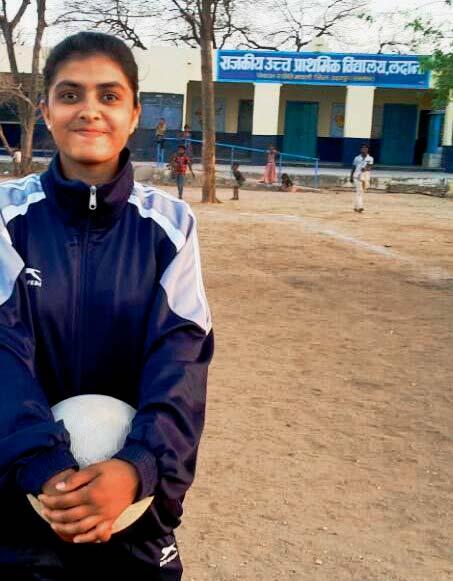
Chanda has been reaching out to other female dropouts from nearby villages. She meets their parents and tries to convince them to re-enrol their daughters, sharing her experiences to
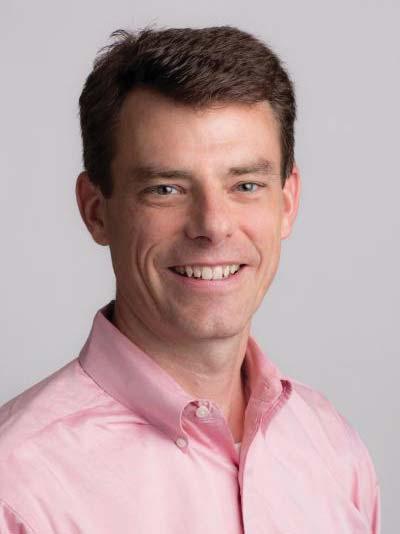
motivate them. Her goal is to help at least 100 girls who have dropped out of school to get back to education through open education.
Through all of this, volleyball has been the constant that has given her immense satisfaction, and she has also roped in others girls. Chanda says doing different things is good, especially for girls, because it helps increase self-confidence, sharpen skills and will eventually result in breaking down gender stereotypes.
This spirit to overturn the status quo led her to participate and travel with street plays that deal with such complex issues. Of course, whatever she did, Chanda could not change her father’s outlook and had to contend with his wrath every step of the way.
Then something amazing happened late 2015. Chanda was selected to participate in an International Girl Child Day event organised by the Asian Girls Campaign and The Garden of Hope Foundation in Taipei City, Taiwan. Although she knew her
Rotary taps fundraising expert, Eric Schmelling, to manage philanthropy and fundraising for The Rotary Foundation.
As the Chief Philanthropy Officer, Schmelling will lead the area responsible for facilitating contributions to TRF. The Foundation, celebrating its centennial, has a one-year fundraising goal of $300 million. It grants over $200 million annually to eradicate polio and funds projects and scholarships in communities worldwide.
“With over 20 years at Rotary, Eric brings a deep understanding to this role,” said John Hewko, general secretary of Rotary. “Under Eric’s guidance in his previous roles, we have seen tremendous growth in overall contributions, including in our effort to end polio. We look forward to continued success under his leadership.”
father would bitterly oppose it, she plucked up the courage to defy him and travel abroad with support from her mother and Vikalp members. She was not familiar with the procedures of foreign travel but that did not deter her. In Taiwan she was conferred with the Community Development Award 2015, and selected as a brand ambassador for Asian Girls Campaign.
While the award is special to Chanda, it’s the gift she got when she returned which is most valuable to her. Her father finally felt proud of her achievements and welcomed her with open arms. He has now given her the freedom to choose what she wants to do with her life. A visibly relieved and happy Chanda is busy doing what she loves — teaching volleyball to girls across 10 villages as part of Vikalp’s Sports for Empowerment Programme. Her steely resolve has helped Chanda tide over the difficult times; she believes it’s only going to get better from here on.
© Women’s Feature Service
Schmelling began his career at Rotary in 1995 and has held several positions, including Director of planned and major gifts. “It is truly an honour to work for an organisation dedicated to making the world a better place,” he said. “I have invested much of my career here because I believe in Rotary’s mission to end polio and provide those in need with access to clean water, education, peace, healthcare and economic opportunities. As chief philanthropy officer, I am excited to help lead the organisation’s efforts to make sure we have the financial resources to continue improving communities worldwide.”
Schmelling is an alumnus of Beloit College in Wisconsin and received his MA from Central European University in Hungary. He is a member of RC Evanston Lighthouse.
Source: www.rotary.org
RC Belgaum President Dr Satish Dhamankar checking a patient.

It is not surprising to see pregnant women and lactating mothers queuing up in large numbers on the first Thursday of every month at the Public Health Centre (PHC) in Vantamuri, one of the rural pockets in Belgaum. This is because RC Belgaum President Dr Satish Dhamankar, along with two gynaecologists, makes it a point to visit this government medical centre once a month to offer free consultation and medicines to pregnant women. ‘Reaching the Unreached’ is a maternal and child health initiative of D 3170, which has been taken up
by the club in association with the Karnataka government.
During a visit to the PHC in May 2016, Dr Dhamankar was shocked to find the pathetic state of pregnant women and the newborns and felt proper health education, along with the involvement of community workers, would go a long way in ushering safe motherhood and healthy babies in Vantamuri. The patients attending the antenatal clinic were divided into high risk and low risk categories. “Many patients had iron and calcium deficiency and those with severe anaemia were given intravenous injections,” he says.
“When a mother counselled by us comes back with a healthy baby in her arms and a smile on her face, it makes all the hard work we do worthwhile, and this is the best gift RC Belgaum can give to the village,” he says, adding the project has reduced maternal and neonatal morbidity.
So far 436 patients have visited the clinic and are under regular care of the three-member team of gynaecologists.
ASHA (Accredited Social Health Activists) workers and volunteers play a key role in educating the women in
adopting best practices during pregnancy for giving birth to healthy babies. They visit pregnant women in the village to prescribe a healthy diet, check hygiene and living conditions, acting as a bridge between the patients and the neonatal clinic.
Tabassum, a regular at the clinic, who had recently delivered said in a choked voice, “Only if this Rotary project had been there during my last pregnancy, I would not have lost my first child.” Nearly 40 patients are examined during each visit and prompt arrangements are made for those in need of urgent treatment.
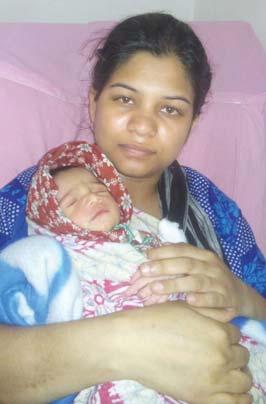
DG Dr Vinay Pai Raikar inaugurated the maternal and childcare clinic at Vantamuri in August 2016. With great feedback from the people, government officials have pledged support and more help to the club in this project. While the infrastructure and funds are provided by the government, the club offered expertise. “Our members volunteer with their time, expertise and efforts for the success of the programme, which is the most cost-effective project of RC Belgaum as it was set up under a government-NGO partnership, and will be replicated across the State,” said Dr Raikar.
At the Wash in Schools Review Meet of the Eastern Zone comprising Districts 3240, 3250, 3261, 3262 and 3291, hosted by RC Bhubaneswar Excellence, D 3262 DG Narayan Nayak opened the meet saying D 3262 has received 5 Global Grants totaling Rs 2.22 crore for implementing WinS in 222 schools. Work has started in these schools to provide safe drinking water, gender segregated toilets, group hand wash stations and menstrual hygiene management and will be completed by May-end.
Rotary India WinS Vice Chairman P T Prabhakar made a SWOT analysis of WinS and explained how Rotary can implement WinS projects in hundreds of schools with CSR funds, and usher in behavioural modification. He urged the clubs to continue working on WinS and upgrade the schools from one to three stars. WinS Member Secretary Ramesh Aggarwal gave a statistical brief of where India stands with regards to wash stations, toilets in schools and sanitation. Zonal coordinator, East Zone,
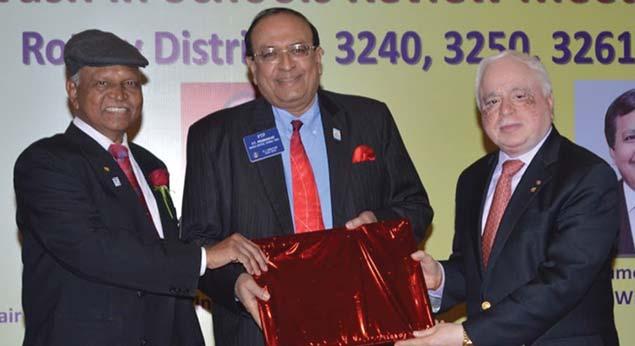
PDG Sanjay Khemka presented a zonal review of WinS.
Addressing the meet Global WinS Chair and TRF Trustee Sushil Gupta presented a global outline of the WinS programme and reiterated that many Rotarians and Rotary clubs mistakenly associate the programme with toilets in schools. He said apart from tying up with GoI on Swachh Bharat Swachh Vidyalaya, Rotary is entering into an MoU with the Government for the Clean Ganga mission.
Gupta said just as in polio eradication, UNICEF can be a great partner in WinS and stressed on the need to put up group handwashing stations instead of taps on walls.
DG Rintu Niyogi represented District 3240, IPDG Bindu Singh (D 3250), PDG Ashok Singh (D 3261) and PDG Ashok Mohapatra (D 3262). Representative for Rotary South Asia, WinS Programme Officer Nida Hasan assured Rotarians of full support from the South Asia office. Wash Specialists from UNICEF Gabriel Rozario from West Bengal and Johnson from Orissa, shared their experiences to achieve an Open Defecation Free (ODF) India.
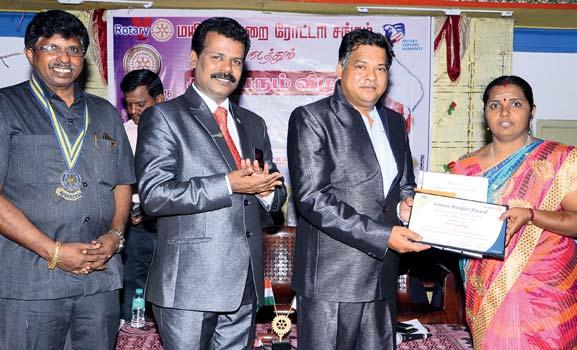
Salem
Acomputer lab was installed at a government higher secondary school at Sukkampatty village. It would benefit 400 students. The lab costing Rs 4 lakh has 12 computers, besides accessories and furniture.
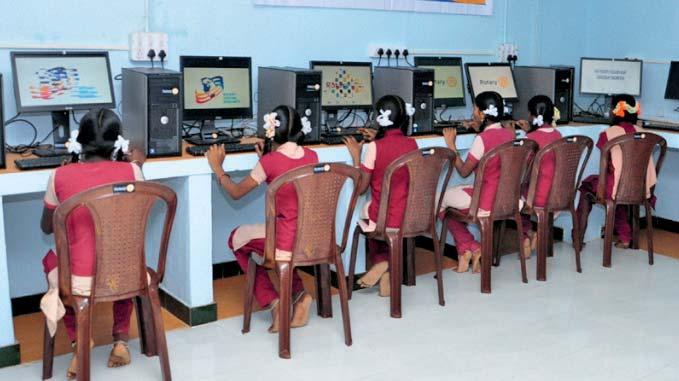
Faridabad
Artificiallimbs were fitted for 50 physically-challenged people in and around Faridabad. Children were also part of the beneficiaries.
Fifty-four teachers from middle to higher secondary schools were honoured with Nation Builder Awards. Club President M Subramanian presided over the event along with Assistant Governor V Raman and General Secretary V Selvanathan. The club also honoured 95-year-old former professor Major A Subbaiya with the Gandhi Award on Gandhi Jayanthi.
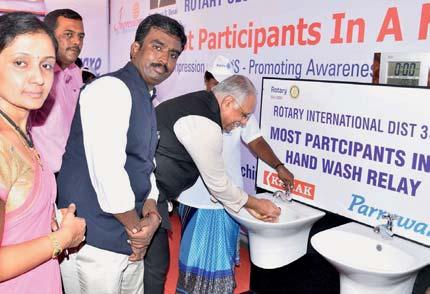
The club set a new Guinness Record in hand wash relay, in the presence of RID Manoj Desai, with 2,669 school students and 250 teachers of Sri Vignesh Group of Institutions, breaking the earlier record of 1,636 students organised by Dettol, Pakistan. The WinS project spread awareness about effecting hygiene through hand wash.
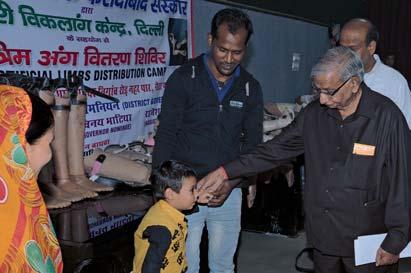
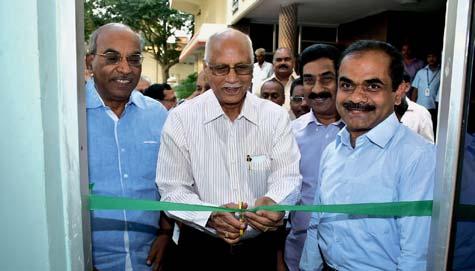
Adental clinic was set up on the premises of Rotary Eye Hospital in October. It has a doctor and two staff nurses who attend to nearly 40-50 patients daily. The clinic offers free treatment and up to four teeth can be removed or replaced free of charge.
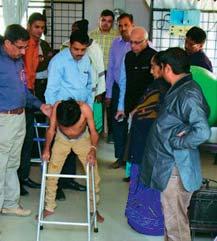
An orthopaedic and physiotherapy camp was held in association with Apang Manav Mandal, Ahmedabad. More than 300 patients were screened, out of which 265 people were given mobility aids worth Rs 4.5 lakh. DG Dinesh Kumar Thacker supervised the activities at the camp.
Two-hundred students from 12 schools in the locality took part in the Children’s Day celebration organised by the club. The club had arranged various programmes to tap their latent talent.
Atwo-day eye check-up and lens transplantation camp was organised in which 127 patients were given primary treatment and medicines. Five patients were treated for cataract at Acharya Shree Nanesh Rotary Netra Chikitsalaya.
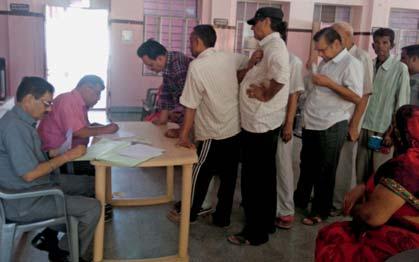
The club installed play equipment costing Rs 1.7 lakh for children at a government school in Ponsra village. It also set up a handwash station there as part of its WinS Programme and the Rotarians taught the children the importance of hygiene for better health.
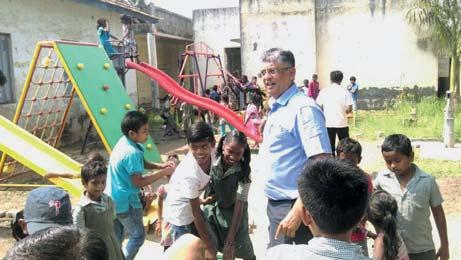

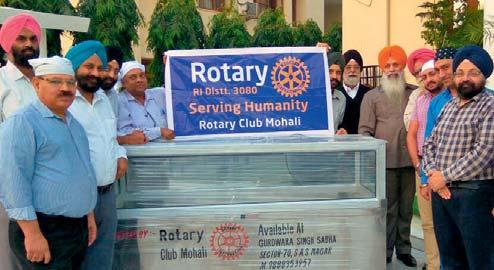
RC Samana — D 3090
TheRotarians distributed sweaters and socks to students of a government girls school in the town. The materials were sponsored by Rtn Amit Singla in memory of his father Ram Singla.
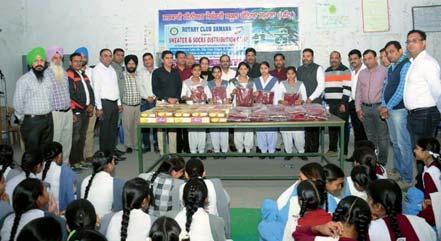
RC Ambarnath East — D 3142
DGElect B M Sivarraj inaugurated the Rotary Legal Cell, a dream project of the Club President Swapnil Varma, an advocate. The legal cell will give free advice to women, middle-class people and poor sections in the locality who are reluctant to engage a lawyer as it involves huge cost.
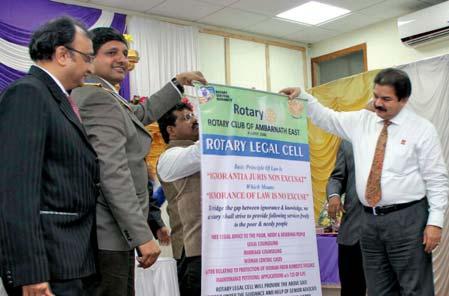
RC Mohali — D 3080
The club dedicated a freezerbox to the community. This will be of immense help to preserve the mortal remains of the departed soul till their kith and kin from far off places arrive to offer their last respects, said Sukhpreet Gaini, the club president.

RC Aligarh Pearl — D 3110
Adentalcheck-up camp was conducted for 250 students of Saraswati Shishu Mandir School. The Rotarians distributed winter uniforms to these children most of whom hail from BPL families.
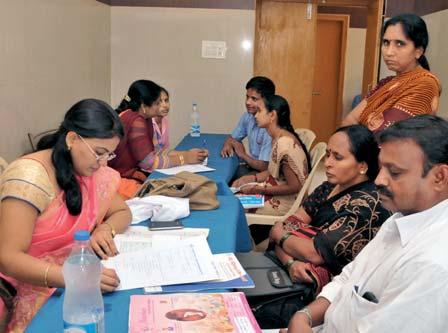
RC Proddatur — D 3160
About250 childless couples attended a medical camp organised by the club with support from the Chennai Fertility Centre.
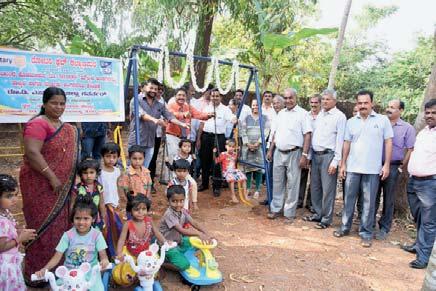
DGD S Ravi visited the club in Udupi, Karnataka and handed over playschool equipment worth Rs 50,000 to two nursery schools in a rural area. This was part of the ‘Happy Schools’ project.
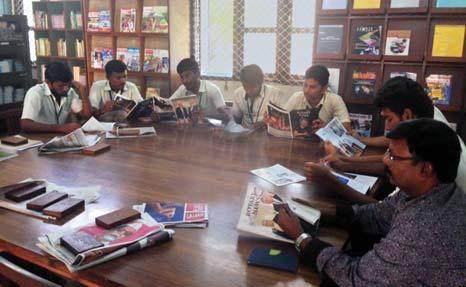
More than 650 patients benefitted from a health camp organised by the club at Kundalpur, a village near Jabalpur. Free medicines were given in the camp which also involved eye checkup, blood pressure, blood sugar and health consultation.
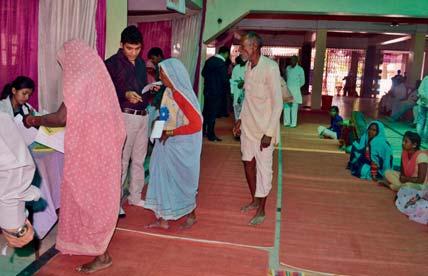
Over 1,000 Rotarians, Rotaractors and Interactors took part in the Inter-City General Forum held at the PES University, Bengaluru. Eleven young achievers including a 4-year-old spell-bee star, a Paralympian, Olympiad winners, a social entrepreneur and a Formula racer were feted with a cash prize of Rs 1.10 lakh and a trophy.
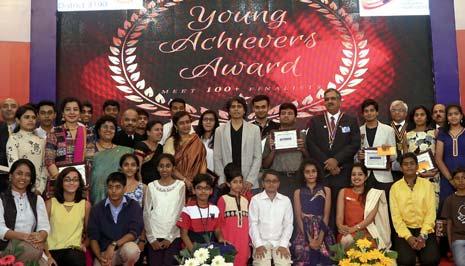
The club gifted 30 subscriptions of Rotary News to schools and colleges in the region. The magazine has many takers among Rotaractors who enjoy reading RYLA stories and other project activities of Rotary clubs, says Club President Sarvanan.
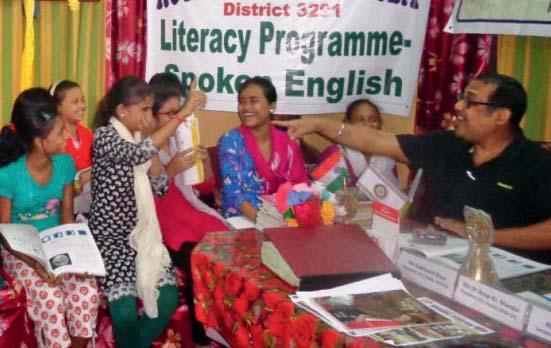
RC Kasba
Aspoken
English class was organised for 20 girl students from two Bengali medium schools as part of the club’s Literacy programme.
O P Khanna

It’s the cold and flu season, and once the early symptoms hit you, you can’t help but feel helpless, hoping that the infection will pass as quickly and painlessly as possible, and run to the pharmacy to get medicines and a month’s worth of Kleenex. Even a cold that lasts just a few days can leave us weak for up to a couple of weeks after the symptoms are gone, which is a big problem. Luckily, we’ve got some good news for you, you can beat this thing in 24 hours by following this guide.
Stage one: 7:00 am
Take a hot shower. It might be difficult to get out of bed at this hour, especially if you’re feeling sick, but the steam in the shower will clear up your sinuses, making it easier to breathe. In addition, there are quite a few other health benefits of taking a hot shower.
Stage two: 8:00 am
Take two teaspoons of elderberry syrup. You can find elderberry syrup in most health stores. The syrup is made
of the fruits of the elderberry, which disrupt viral bonding with the cell lining, thus slowing down and even completely blocking the spread of the viral infection in your body. Furthermore, elderberries were found to ease cold and flu symptoms, as well as throat and sinus infections. It’s important to note that elderberries should not be consumed raw, but instead consumed as a syrup. Take two teaspoons of the syrup three times a day to ease your symptoms and shorten the lifespan of your cold.
Refill your water bottle. When you’re sick, the body requires a lot of fluids to fight the inflammation.
Stage three: 9:00 am
Instead of coffee and cereals, have tea and eggs. Eggs are packed with proteins and essential amino acids, all of which strengthen the body and help it combat the viral infection. Make yourself a hot cup of tea with honey and fresh lemon juice, and fry some eggs. Remember to add the honey to your tea — it’s far more effective than most cough syrups. If you’re a vegan or allergic to eggs, you can substitute them with a chickpea flour pancake instead, which is rich in proteins, omega 6, and B vitamins.
Stage four: 12:30 pm
Add chickpeas and pumpkin seeds to your salad. Both are excellent sources of zinc, which is essential to the body’s fight against infections and inflammations. There are several studies that have found that adding zinc to your daily intake during the first 24 hours of a cold will reduce its intensity considerably. If you don’t want to add chickpeas or pumpkin seeds, you can just use a zinc supplement.
Stage five: 2:00 pm
Refill your water bottle. When you’re sick, the body requires a lot of fluids to fight the inflammation, because as body temperature starts to spike and increases water evaporation in the body, it can lead to dehydration. Additionally, the body needs liquids to help flush out the congestion that accumulates in the nose and throat, so make sure to add an extra two cups of water to your daily consumption. Remember that a cup of tea or a cup of soup is not a direct replacement for a cup of water.

Stage six: 3:00 pm
Go for a walk. You’ll be amazed how much a 20-minute walk outside can boost your energy levels and reduce your aches and pains. Walking outside also helps by opening up your sinuses, making it much easier to breath. Studies have also shown that exercise increases the number of beneficial bacteria in your gut, helping the body’s immune system.
Stage seven: 6:30 pm
Have chicken soup. It’s not a myth that chicken soup does the body wonders in times of illness, as the cooked chicken
Ingredients:
3 tablespoons chickpea flour, 100 grams chopped tofu, 4 chopped cilantro leaves, handful of mushrooms, handful of pumpkin seeds, ½ chopped onion, 4 Brazil nuts, 3 tablespoons of raw tahini, 1 cup of water, salt and pepper to taste. Preparation: Combine all the ingredients (except the cilantro, onion, and mushrooms) until the mixture is nice and smooth. Quickly fry the onion and mushrooms, then add the mixture and fry over a high flame for about three minutes.
releases the amino acid cysteine, which works like a bronchitis cure. If you want to boost the flavour and healing abilities of your soup, add some garlic, which is a powerful antiinflammatory agent, as well as some hot red pepper that contains capsaicin, which eases congestion.
Stage eight: 9:00 pm
Clear your nose and throat. A congested nose and throat can turn from a discomfort into a severe inflammation, and that is why it is important to clear your sinuses before you go to bed. All you have to do is add a teaspoon of salt to a glass of warm water, and gargle for 30 seconds at a time. A bonus… this process is great for your gums too.
Stage nine: 10:00 pm
Go to bed. When fighting a cold, watching TV until the middle of the night is not a good idea, because your body needs at least seven hours of sleep in order to beat the infection. A smart thing to do is to add an extra pillow that will prop up your head — this will help keep your sinuses and airways clear, and you’ll enjoy a significantly higher quality of sleep, something you’ll be thankful for the following day.
The writer is Past President, Rotary Bangalore Indira Nagar, District 3190.
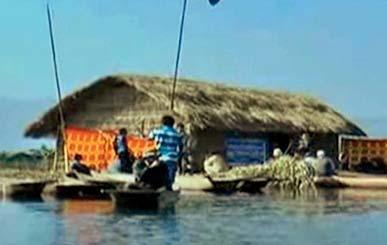
At Champu Khangpok, a village in Manipur, children and illiterate adults find it interesting to go to school, as it floats on the Loktak fresh water lake. This elementary school is an initiative of the All Loktak Lake Fisherman’s Union, supported by an NGO — People Resources Development Association. It provides education to children of the phumdis, a fishermen community, who were evacuated from their floating huts by the Loktak Development Authority, as part of clearing the lake under the Loktak Lake Protection Act 2006. The lake is a rich source of livelihood for fishermen, and for hydropower generation, irrigation and drinking water supply, and a staging site for migratory birds.
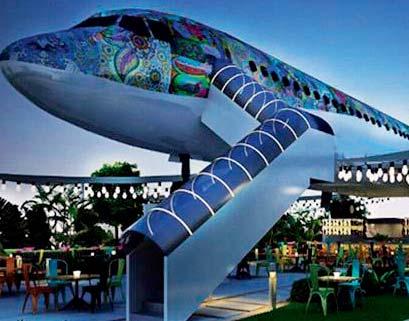
Hawai Adda is the newest attraction for foodies in Ludhiana. It is an Airbus 320-turnedrestaurant created by four brothers inspired by the luxurious food and travel experience of the Maharaja Express train in New Delhi. Engineers redesigned the junked Airbus brought in parts from a scrap dealer in Delhi. All the original elements of the plane, except the furniture, has been retained and it has a bakery, café and a banquet hall. The 70-seater vegetarian restaurant initially had the municipal corporation authorities wondering if it was a new building.

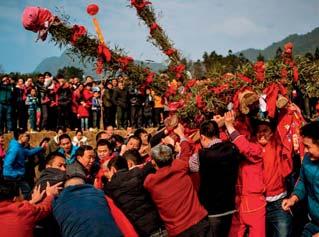
In a unique ceremony leading up to the traditional Lantern Festival in February, Chinese villagers beat a rock-statue of the Buddha wishing for a good New Year and abundant harvest. The idol is wrapped in a red cloth and tied to a wooden palanquin. Four men attempt to carry it across a river, while another team tries to block them with freshly-hewn bamboo sticks. After a mock struggle, the defenders relent and the Buddha is welcomed into the village with fanfare. This tradition follows a legend where a village suffered heavy floods which ruined the harvest. One of the villagers dreamt of a Buddha idol buried in the fields that could stop the flooding. When they found it, the Buddha wanted to run away and people believed that beating the statue made Buddha stay on.

Bodegraven, a Dutch town is trialling a traffic light system specially aimed at smartphone addicts. A series of LED lights in red and green, embedded into the pavement at pedestrian crossings, alert pedestrians addicted to their smartphones either on social media or mobile gaming, on when to cross the road and when to stop, depending upon the traffic signal. Though it serves to reduce traffic accidents, the system, called +Lichtlijn, has attracted criticism from a Dutch road safety organisation claiming it “rewards bad behaviour.” If this pilot proves successful, more will be rolled out across Netherlands. Similar pavement lights are being tested in the German city of Augsburg too.
Couples from diverse backgrounds, including farmers, teachers and daily wagers, tied the nuptial knot at a mass marriage ceremony held at Gujarat’s Bayad town, without a single penny spent in cash. Every expense, from the priests’ dakshina, kanyadaan, the caterers’ fees, and even gifts for the newly-weds, was met through cheques or digital payment modes. Swipe machines were in place for those who wanted to give monetary gifts using plastic cards.

